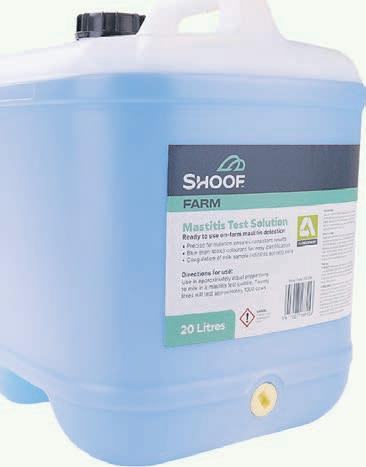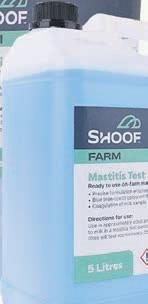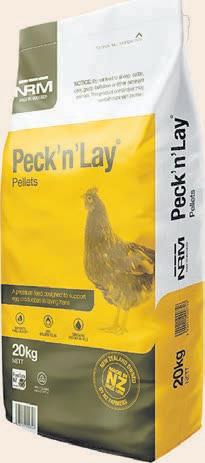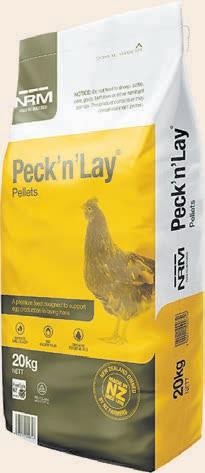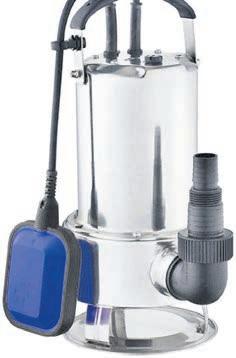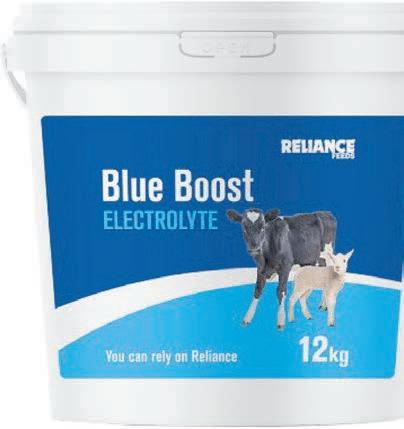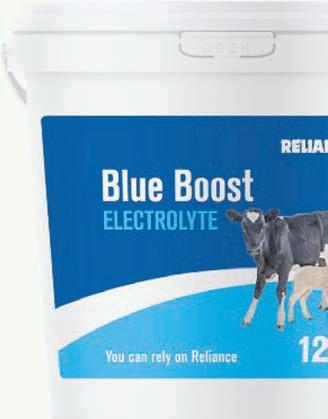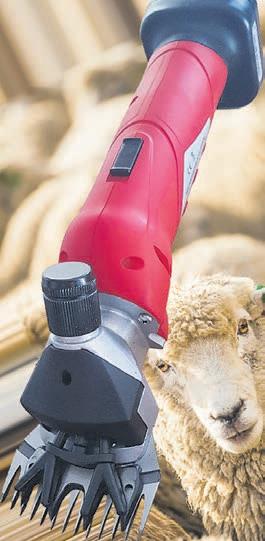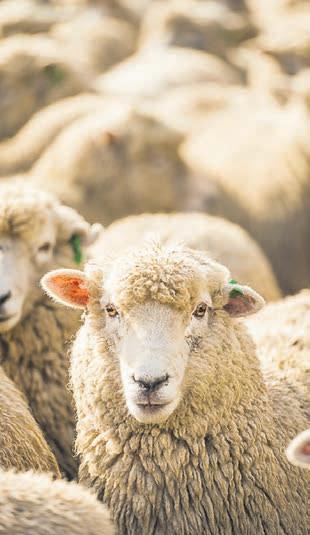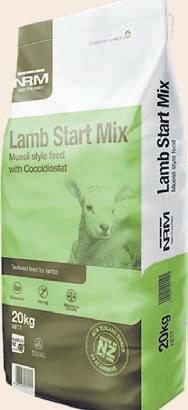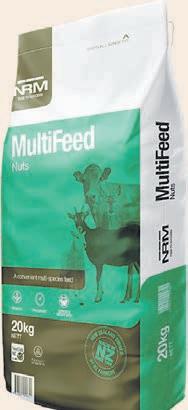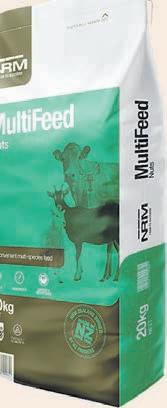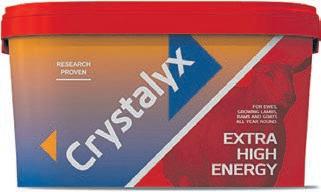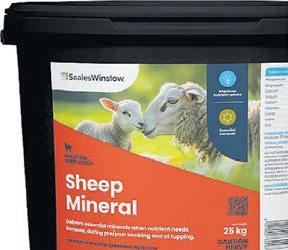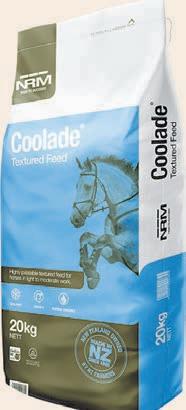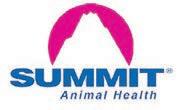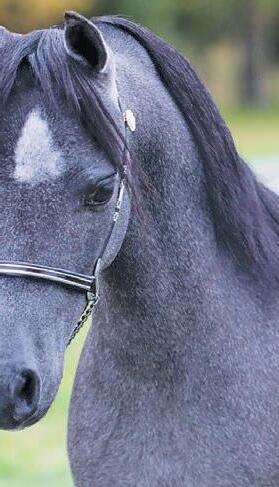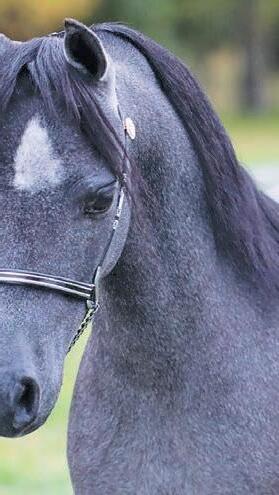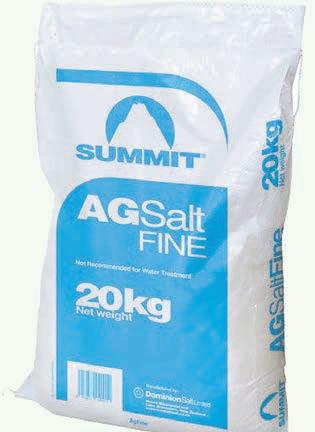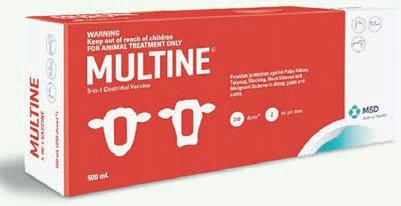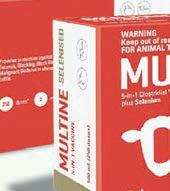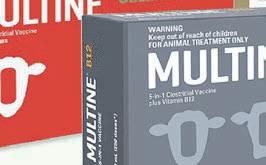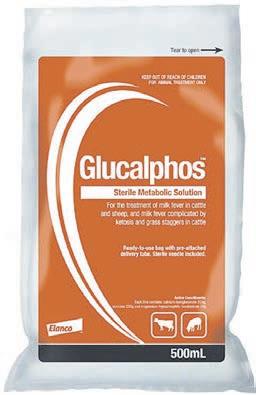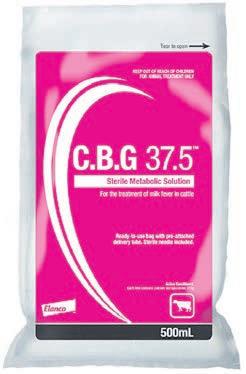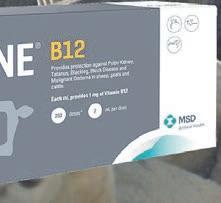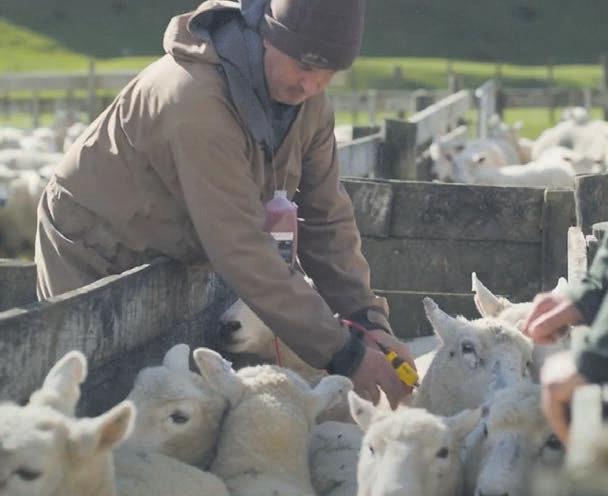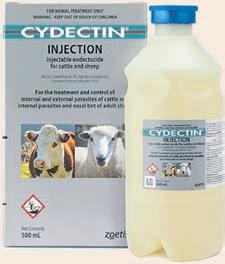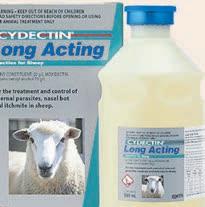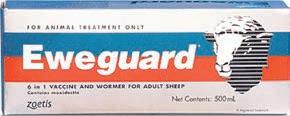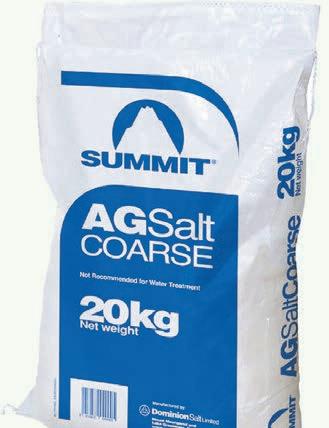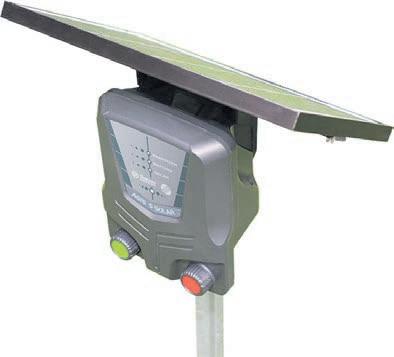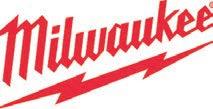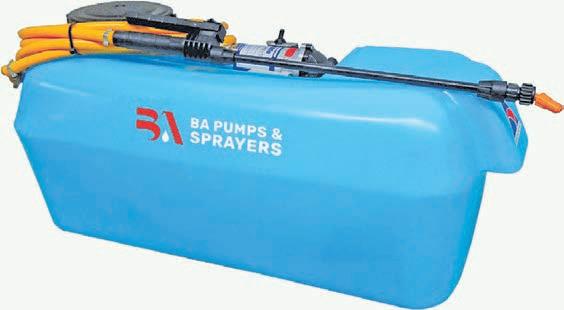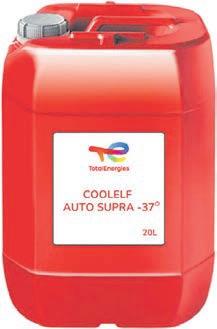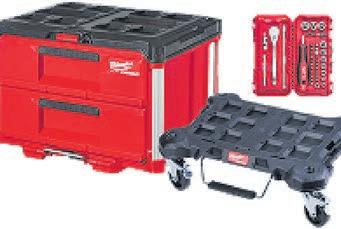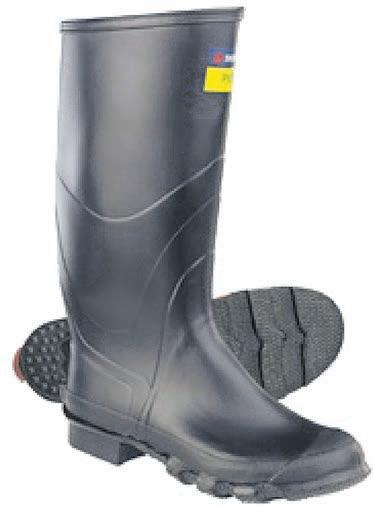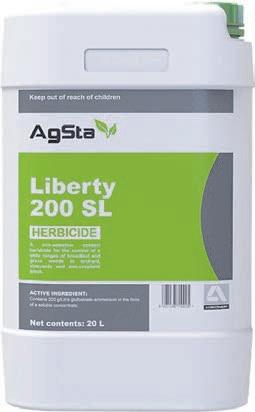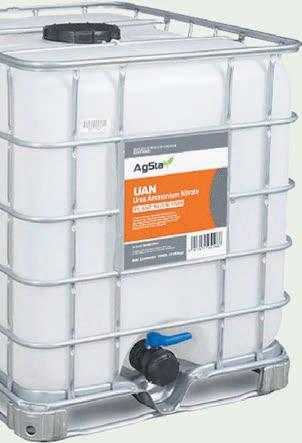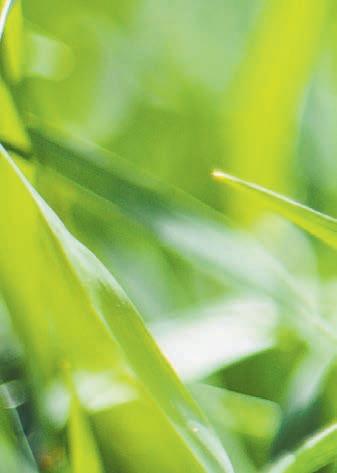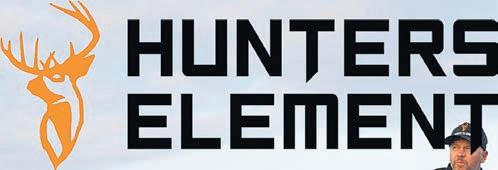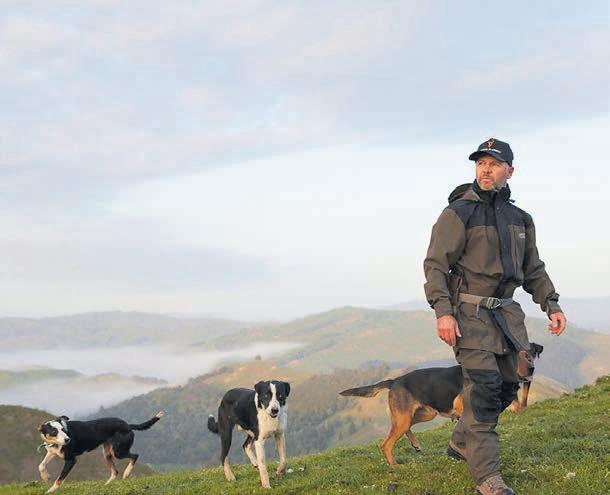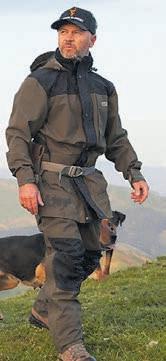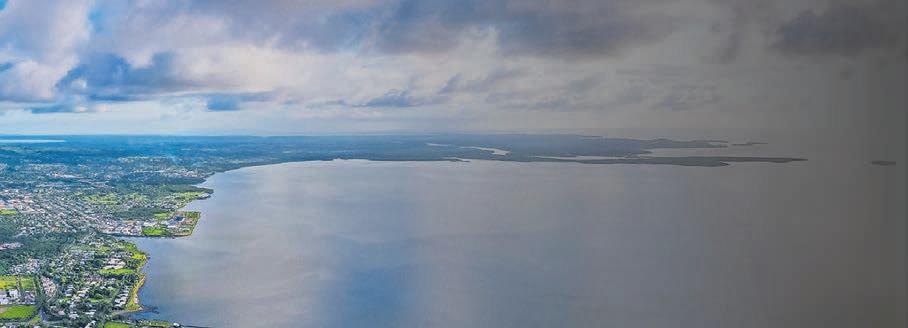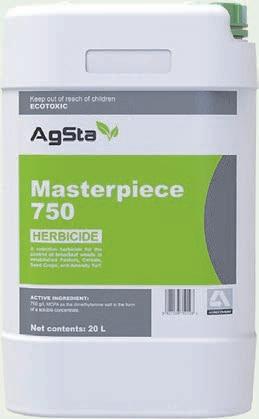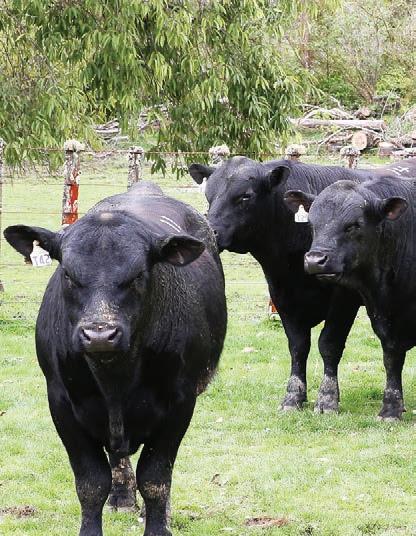

Fears Alliance plan will mark end of an era

THE era of farmerowned co-operatives dominating ownership of the New Zealand meat industry could be set to end.
On Tuesday morning the Alliance board will reveal its favoured option for a $200 million injection of new capital into the business, with speculation that Irish family-owned Dawn Meats is the front runner to buy into the business.
Reports from the Irish Times are that Dawn Meats, a $5.9 billion family-owned company from Ireland, is prepared to pay $270m for a 70% stake in Alliance.
Massey University senior lecturer James Lockhart said if this comes to pass, the $270m offer would give Alliance a market value of $385m.
Shareholder Andrew Morrison said shareholders were surprised that the rumoured offer valued Alliance at a lot less than they thought.
He said farmers are telling him that “this is like selling your farm on a bad day”.
Tuesday’s release of options by the board will shift discussion from emotion to numbers and facts, he said.
Associate Agriculture Minister and Alliance shareholder Mark Patterson has been following the issue through the media and said he is saddened at the likelihood
that Alliance will no longer be a 100%-farmer owned co-operative.
“I’ve a bit of trepidation really. I’ll be gutted if the co-op is split up,” he said.
Alliance’s 4500 shareholders will vote on the options later this year. If they elect to sell part of the company, it will be New Zealand’s third large, 100% farmer-owned co-operative meat company to lose that status in the past 30 years.
AFFCO, formerly the Auckland Farmers Freezing Company, was a co-op before being publicly floated in 1995 and subsequently bought by Talleys Group in 2010.
In 2016 Silver Fern Farms (SFF) became a hybrid when it sold 50% of the business to Shanghai Maling after shareholders earlier failed to provide sufficient new capital.
Morrison said the release of facts on Tuesday will change the debate.
“It will be the catalyst for a thought process and sense of whether it is the best time to sell a meat company or the best time to buy a meat company.”
If farmers decide not to sell Alliance due to the low price, they will need to write out a cheque themselves.
If they decide to sell a stake in the co-operative, Morrison said, they need to understand the consequences.
Lockhart fears shareholders do not understand what they are losing if they adopt hybrid ownership.
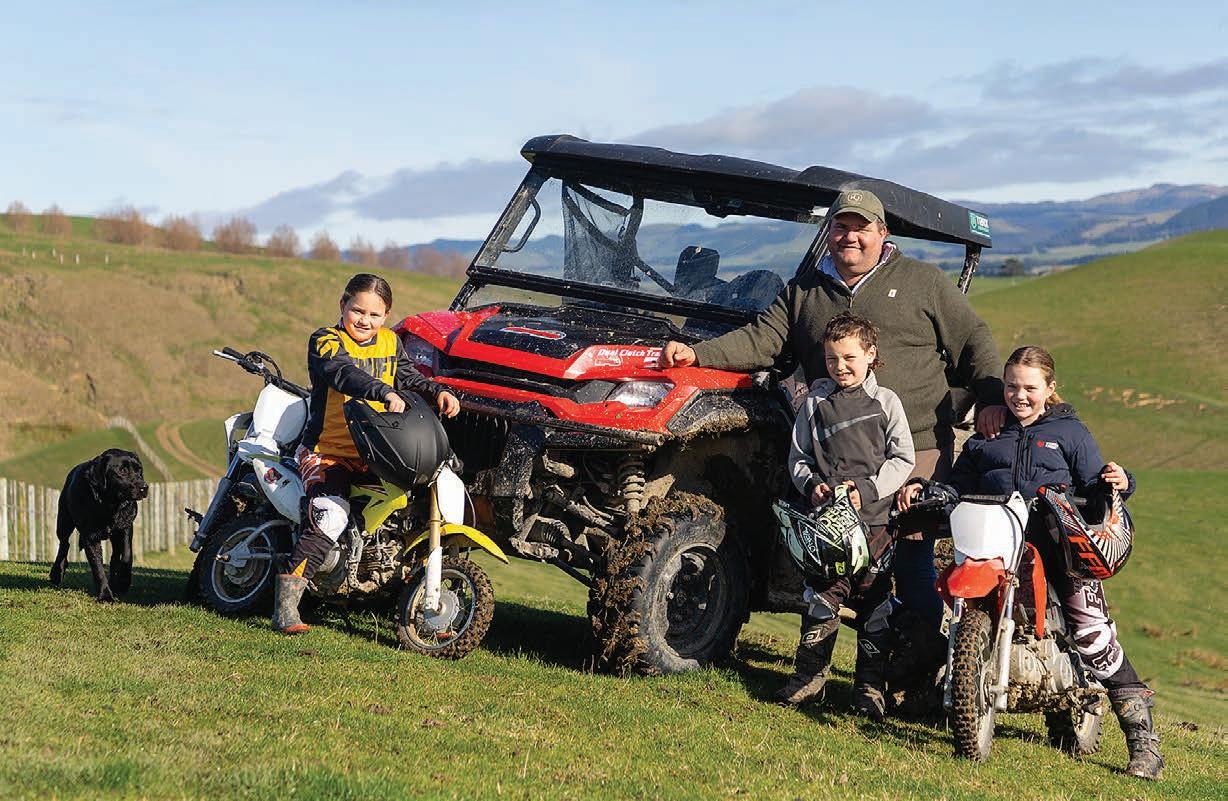
Learning from doing on farm
Farming was the only life Bayden Andersen ever dreamed of. The Hawke’s Bay farm manager, pictured with children Molly, Colby and Phoebe, says running Walmsley Canning Estate is a family affair and he is grateful to have his wife Shaye and children involved in the operation.
Alistair Thom
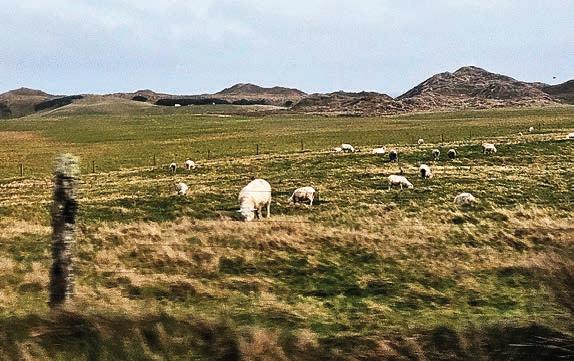
The ups and downs of Chathams farming
Chatham Island farmer Gary Cameron says his remote farm is in ‘the best place in the world to grow anything but the worst place to sell anything’.
Pāmu sale could unlock money for research, writes Alan Emerson.

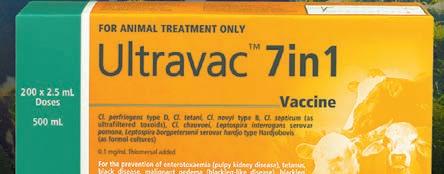
Photo:
Neal Wallace NEWS Production
EDITORIAL
Bryan Gibson | 06 323 1519
Managing Editor bryan.gibson@agrihq.co.nz
Craig Page | 03 470 2469 Deputy Editor craig.page@agrihq.co.nz
Claire Robertson
Sub-Editor claire.robertson@agrihq.co.nz
Neal Wallace | 03 474 9240
Journalist neal.wallace@agrihq.co.nz
Gerald Piddock | 027 486 8346
Journalist gerald.piddock@agrihq.co.nz
Annette Scott | 021 908 400 Journalist annette.scott@agrihq.co.nz
Hugh Stringleman | 027 474 4003
Journalist hugh.stringleman@agrihq.co.nz
Richard Rennie | 027 475 4256
Journalist richard.rennie@agrihq.co.nz
Nigel Stirling | 021 136 5570
Journalist nigel.g.stirling@gmail.com
PRODUCTION
Lana Kieselbach | 027 739 4295 production@agrihq.co.nz
ADVERTISING MATERIAL
Supply to: adcopy@agrihq.co.nz
SUBSCRIPTIONS & DELIVERY 0800 85 25 80 subs@agrihq.co.nz
PRINTER
Printed by NZME Delivered by Reach Media Ltd
SALES CONTACTS
Andy Whitson | 027 626 2269
Sales & Marketing Manager andy.whitson@agrihq.co.nz
Janine Aish | 027 300 5990
Auckland/Northland Partnership Manager janine.aish@agrihq.co.nz
Jody Anderson | 027 474 6094
Waikato/Bay of Plenty Partnership Manager jody.anderson@agrihq.co.nz
Palak Arora | 027 474 6095
Lower North Island Partnership Manager palak.arora@agrihq.co.nz
Andy Whitson | 027 626 2269
South Island Partnership Manager andy.whitson@agrihq.co.nz
Julie Hill | 027 705 7181
Marketplace Partnership Manager classifieds@agrihq.co.nz
Andrea Mansfield | 027 602 4925
National Livestock Manager livestock@agrihq.co.nz
Real Estate | 0800 85 25 80 realestate@agrihq.co.nz
Word Only Advertising | 0800 85 25 80 Marketplace wordads@agrihq.co.nz
PUBLISHERS
Dean and Cushla Williamson Phone: 027 323 9407 dean.williamson@agrihq.co.nz cushla.williamson@agrihq.co.nz
Farmers Weekly is Published by AgriHQ PO Box 529, Feilding 4740, New Zealand Phone: 0800 85 25 80 Website: www.farmersweekly.co.nz
ISSN 2463-6002 (Print) ISSN 2463-6010 (Online)
Spring 2025 Bull Sales
News in brief Cheese expansion
Rising demand for cheese in global markets has led Fonterra to upgrade cheese manufacturing at its Eltham plant. The site is upgrading its production lines for processed cheese and adding a new shift for its individually quick frozen mozzarella product. Fonterra Eltham specialises in producing cheese products for the co-op’s foodservice business.
Farmer fined
22
23
24-27
28

A Southland dairy farmer who has already paid more than $300,000 in wage arrears and fines has been penalised further for obstructing an Employment Relations Authority investigation.
Reza Abdul-Jabbar was ordered to pay $5000 and the company, Rural Practice Ltd $10,000 for what the authority terms “serious and sustained” obstruction during the earlier investigation into alleged breaches of minimum employment standards.
Pork contribution
North Canterbury pig farmer Steve Sterne has won NZPork’s Outstanding Contribution Award, recognising his 27 years of dedication to excellence in the sector.
Sterne and daughter Holly run Patoa Farms at Hawarden, New Zealand’s largest pig farming operation. The system, which sees the farm produce about 95,000 pigs a year, allows for the used straw bedding and manure to be recycled and used on other farms throughout the Canterbury region.
Ravensdown’s loss
Impairments and one-off adjustments turned a $13 million operating profit into a $2m net loss for Ravensdown Fertiliser Coop last year.
Financial gains from those higher sales were tempered by squeezed margins from geopolitical issues. Fluctuating product prices, due to the three-month time lag between procuring product and delivery to farms, also tempered financial gains.

Ballance mulls time-out at Kapuni plant

Gerald Piddock NEWS Fertiliser
BALLANCE Agri-
Nutrients is considering temporarily closing its Kapuni plant for as long as four months as it faces unaffordably high gas prices.
Ballance CEO Kelvin Wickham said the business is planning for a range of eventualities and working to keep options open should it not secure gas before its current fiveyear contract ends on September 30.
“While New Zealand’s gas market is dynamic, the increasing pace of declining gas supply and the impact of this on price will continue to pose challenges for the energy sector and for New Zealand.
“Although we remain optimistic about securing short-term supply, we’re also pragmatic and planning for other outcomes. Right now, it’s prudent to plan for a short-term shutdown.”
Ballance uses natural gas in urea production. The Kapuni urea plant in Taranaki, which has been in operation since 1982, employs around 120 people. It manufactures one-third of New Zealand’s urea for fertiliser – some 260,000 tonnes a year.
Gas is a significant cost in urea production and Ballance has to be able to make urea to match the international pricing as well
Continued from page 1
“I suspect any number of Alliance’s reasonably broad shareholder base have moved on or do not necessarily understand the merits of a dominant co-operative.”
Ideally the board will present shareholders with more than one option so a comparison
as pay a carbon tax, Wickham said.
“It’s getting harder and harder to meet that international price using the high cost of New Zealand electricity energy.
“It’s a challenge for us and we need reliable, consistent gas at an affordable price to enable us to continue to produce urea in New Zealand,” he said.
As gas supplies in New Zealand dwindle, companies are prepared to pay a lot more for it, and Ballance is unable to compete.
“There is some supply available, but we have been outbid so far by people who can pay a lot higher for gas.”
While Wickham is unable to reveal numbers around what it is costing the co-operative as it is currently negotiating contracts, he pointed to a recent Energy News article that used Ministry of Business, Innovation and Employment data showing prices jumped across all sectors in the year to March.
Those prices were 20.5% higher in the March quarter than they were a year earlier, hitting a record $33.59 per gigajoule in the commercial sector.
While he is reasonably confident at finding a short-term contract solution, Wickham is uncertain about long-term gas prices in New Zealand.
“We are hopeful we can run the plant beyond October 1, say for three to four months, then if we
can be made, but he notes SFF shareholders were given only a single option, that of selling half the company to Shanghai Maling.
Patterson said Alliance has been caught out by wider sector issues such as excess processing capacity and an industry mentality of the last man standing.
Prior to his political career Patterson was active in the Meat
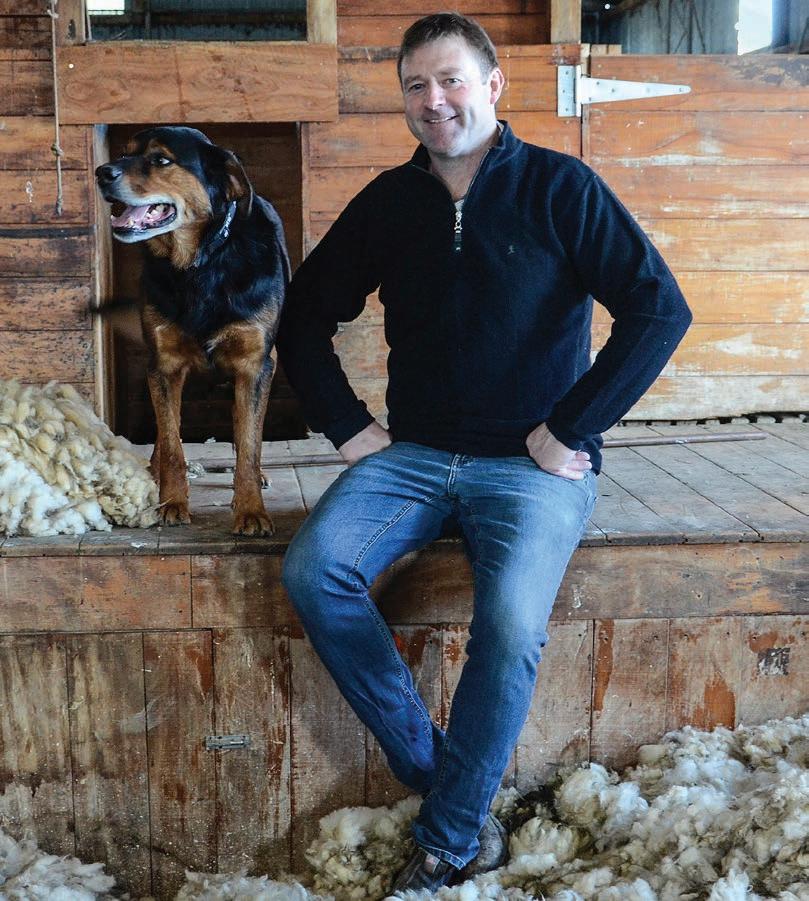
have to do a shut down, we will do so for three or four months. Then the question is, what does the world look like then – and that’s the unknown.”
We have additional urea on the water now in case we cannot operate.
Kelvin Wickham Ballance Agri-Nutrients
The plant’s staff were briefed on the situation on August 7. Ballance will keep the plant’s 120 staff on the payroll if the closure takes place, he said.
“If we don’t get something in place in the next month or so, we will have to start planning to shut down, as these things take a bit of time.”
Gas alternatives such as electrolysis using water are still seven to 10 years away from being viable and would require a power supply of a city of the size of Hamilton to make it work, as well as an estimated $1 billion in additional infrastructure.
Wickham said the possible closure will not affect urea pricing or supply, with spring and summer fast approaching.
“Supply is covered as we have been running scenarios and contingencies, and we have additional urea on the water now in case we cannot operate.
“We are very confident we have
Industry Excellence group that sought changes to the meat industry.
He said he hopes the lack of grassroots resistance evident in this debate could still eventuate.
“Maybe when the stark reality is in front of shareholders of whether to let the co-op go or not, it could be a catalyst for a wider conversation and shareholder vote.”
He said farming is a multigenerational business and needs long-term consideration.
I’ve a bit of trepidation really. I’ll be gutted if the co-op is split up.
Mark Patterson Associate Agriculture Minister
“Is this a smart strategic [move], to let the last co-operative go?”
Patterson and Morrison both praised the efforts of Alliance chair Mark Wynne and his board, saying they were dealt a difficult hand.
Pāmu chief executive Mark Leslie said like other shareholders, Pāmu will assess the merits of any offer once it is presented.
Dawn Meats unsuccessfully bid for SFF in 2016. Established in 1980 by three farming families in County Waterford, it operates 11 sites in Ireland and 13 in the United Kingdom and each year processes 3.5 million sheep and 1 million cattle supplied by 40,000 farmers.

CONTINGENCY: Ballance Agri-Nutrients chief
supply for our farmers to cover a potential shutdown.”
Wickham said he does not want to speculate if this was a result of the previous government’s ban on oil and gas exploration, preferring to focus on the situation at hand.
The current government is
informed of the situation, and he said they were open at looking at ways on how they can assist Ballance.
More information about the future of the Kapuni plant should be revealed when Ballance releases its annual financial result later this month, he said.
Upton slams RMA farm, freshwater proposals

Gerald Piddock NEWS Environment
PARLIAMENTARY Commissioner for the Environment Simon Upton has taken aim at the government’s proposed changes to the Resource Management Act, saying they are without a coherent strategy and unlikely to provide the stability of an enduring freshwater management system.
In his 23-page submission on changes for the RMA’s Package 2 and Package 3, which cover the primary sector and freshwater, Upton said the constant changes to National Policy Statements (NPS) on freshwater are leading to confusion and disengagement from landowners.
“From conversations in the paddock with many groups of farmers who are trying to make a difference, I can confirm that the latest round of changes is having a chilling effect that is leading people to lose interest. Over a decade’s engagement and commitment risks being lost.”
The proposed changes to the NPS on highly productive land to encompass only Class 1 and 2 rather than 1,2 and 3 are based on a classification system that is out of date and unfit for the regulatory instruments it underpins, he said.
He also slated as “extremely poor” the evidence for changing stock exclusion rules around wetlands so that they do not apply to non-intensively grazed beef cattle and deer. There is limited information on wetlands and not enough evidence to base a regulatory change, he said.
The proposal also undermines
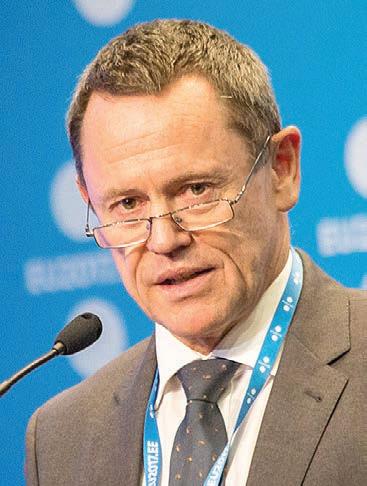
CONFUSION: Parliamentary Commissioner for the Environment Simon Upton says constant changes to national policy statements on freshwater are leading to confusion and disengagement from landowners.
the claims New Zealand likes to make about the environment in which it produces its food, he said.
“I doubt many farmers in possession of wetlands would like their products advertised as being ‘produced at the expense of threatened indigenous biodiversity’.”
Upton called out the proposals for freshwater as not representing a well-considered approach,
“They are unlikely to provide the stability of an ‘enduring freshwater management system’.”
Overall, the proposal to “rebalance freshwater management” is weakening environmental considerations when managing freshwater across the country, so will likely have significant environmental impacts, he said.
ENGAGE: Alliance shareholder and Associate Agriculture Minister Mark Patterson says that ‘maybe when the stark reality is in front of shareholders of whether to let the co-op go or not, it could be a catalyst for a wider conversation and shareholder vote’.
executive Kelvin Wickham says the possible closure would not impact the urea price or supply with spring approaching.
Bugs for grubs could replace lost toxins

Richard Rennie TECHNOLOGY Pests
THE looming gap in grass grub control prompted by the removal of two key chemicals on the market could be filled with a solution developed by AgResearch scientists, should it gain regulatory approval.
The Environmental Protection Authority recently announced the organo-phosphate chlorpyrifos will be banned over the next 18 months. Its alternative treatment diazinon is also scheduled for phase-out by 2028.
Studies by AgResearch indicate grass grub’s impact on the pastoral sector now ranges from $300 million to $815m a year in lost pasture production.
Headed up by AgResearch scientist Mark Hurst, scientists have developed a biological control based on a strain of the Serratia proteamaculans bacteria proven to infect the larvae of both grass grub and mānuka beetle.
“In 2014 Serratia proved to be consistently better than other biological controls we were assessing at the time.”
Hurst said its effectiveness even out-rated the proven synthetic chemicals it could replace.
“It also deals to the mānuka
beetle, which is a big problem on the West Coast, north Otago and Taranaki.
Hurst said his team, in conjunction with Grasslanz and Midlands Holdings staff, filed their research and trial data dossier on Serratia to the Agricultural Compounds and Veterinary Medicines (ACVM) unit last August, seeking commercial release approval.
This included data from over 20 field trials across NZ. Hurst is uncertain how long the approvals process will be.
We hope it comes out of the pipeline at some stage, but don’t know when yet.
Tim Chapman Grasslanz
Gaining approval for new actives through ACVM has proven to be a fraught pathway. It is now subject to intense scrutiny, including a Ministry for Regulation review making 16 recommendations to streamline product release in New Zealand.
Agrichemical giant Bayer has wound up its research site and team in NZ, while Syngenta remains committed to NZ but is avoiding releasing new chemicals
here due to significant delays in getting approval experienced in recent years.
New Zealand Food Safety deputy director-general Vincent Arbuckle confirmed New Zealand Food Safety (NZFS) has received an application for the registration of the trade name product AGR96X under the ACVM Act.
“It contains the bacterium Serratia proteamaculans as the active ingredient for the treatment of grass grubs.
“NZFS expects to complete assessment of the application before the end of the Chlorpyriphos phase-out period for use on grass grubs on January 10 2027.”
Grasslanz business development manager Tim Chapman said he believed the applicants did a good job submitting to ACVM.
“We hope it comes out of the pipeline at some stage, but don’t know when yet.”
Grasslanz proved to be a successful commercial vehicle for the AR37 endophyte released in 2007.
“We believe it [Serratia] would fit comfortably.
“Grass grub is definitively a NZ issue, and it adds a nuance to this product that Mark and his team discovered it as a very specific, targeted treatment for this problem pest.”
He suspects the biggest challenge should it gain
Muffled cheers: wool acoustic panels to ship across Tasman

Neal Wallace MARKETS Food and fibre
ANOTHER step has been taken to improve strong wool returns with a Wellington company about to export its first container load of acoustic panels made from New Zealand wool to Australia.
This is T&R Interior Systems’ first foray into the Australian market for its sound-proofing acoustic panels. Ultimately, it wants to secure a portion of the $27 billion global acoustic panel market.
Tom O’Sullivan, a wool advocate, former farmer and now business development manager for T & R’s FLOC wool acoustic brand, said its acoustic products have just received an Environmental Product Declaration (EPD) endorsement.
It is the first solely wool-based building product in NZ to achieve that recognition.
The independently verified EPD shows it meets ISO standards, provides third-party assessment of their environmental footprint and confirms its full life cycle impact from manufacturing to end of life.
O’Sullivan said architects and designers were enthusiastic about natural acoustic products but were waiting for the EPD endorsement. It took two years and significant cost to achieve.
T&R’s FLOC sound-absorbing products include wool-based
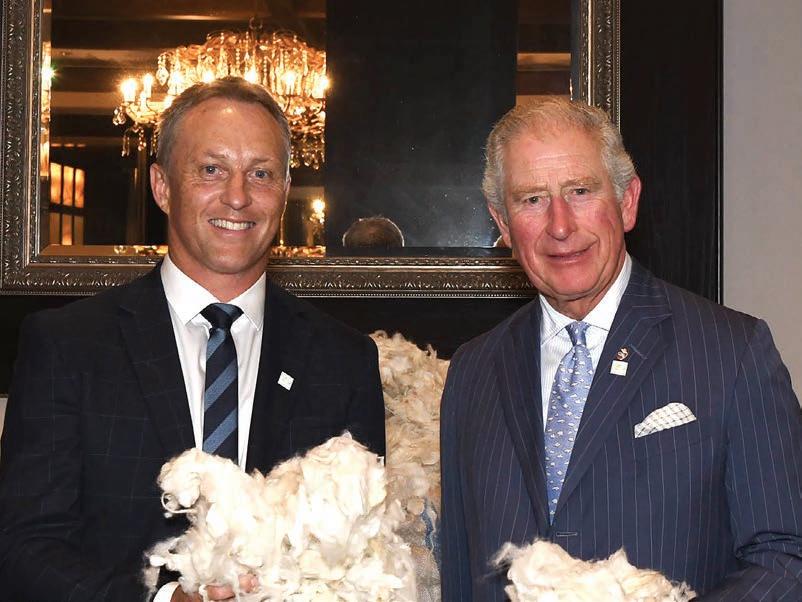
wall coverings that can be hung like wallpaper and 3D geometric shapes and panels that are attached to walls or ceilings.
“There are a lot of hard surfaces in buildings – glass, wood and metal, which make these buildings very noisy,” said O’Sullivan.
While wool prices are improving and he is optimistic new products will underpin a recovery in wool prices, it is too early to see a significant shift just yet.
“I’m more optimistic than ever,” he said.
“We’re not turning the dial just yet because we have only been selling in NZ, but I am optimistic.
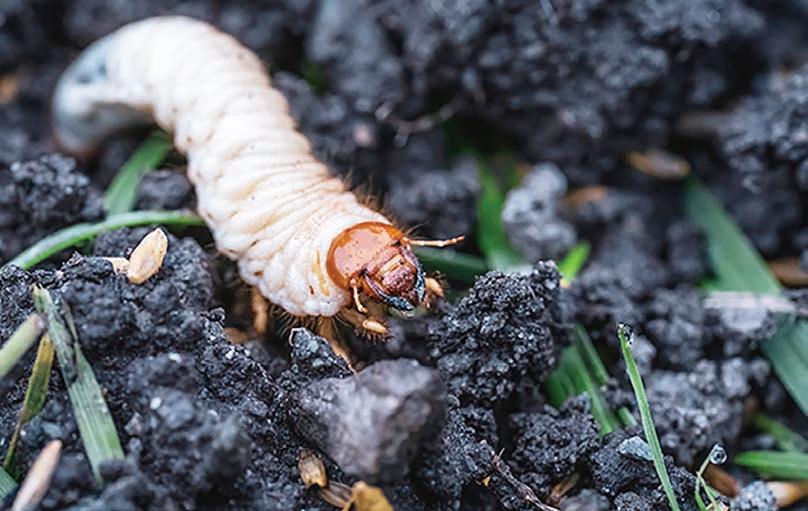
EATEN: The Serratia bacteria discovered by AgResearch targets grass grub and mānuka beetle, attacking the larvae. It has proven at least as effective as synthetic pesticide alternatives.
commercial approval would be scaling up bulk manufacture of it.
Liz Shackleton, CEO of Animal & Plant Health NZ, said the grass grub chemicals phase-out reinforces the urgency to get new solutions to growers and farmers.
“Several R&D companies have signalled that New Zealand is not under active consideration for many of their pipeline products, including for grass grub,” she said.
“The companies that make these products say regulatory delays are disincentivising and stopping further investment in New Zealand,” she said.
This week’s poll question:
Do you have confidence in NZ’s ability to combat pests and diseases such as grass grub?
Have your say at farmersweekly.co.nz/poll
Aus scientists develop new FMD vaccine

Neal Wallace TECHNOLOGY Disease
AUSTRALIAN researchers have developed a vaccine to protect livestock during an outbreak of foot and mouth disease.
The $20 million, fiveyear research project was a partnership between Meat & Livestock Australia (MLA), Tiba Biotech and the NSW government, which has created a biodegradable vaccine.
Michael Lawrence, programme manager for animal wellbeing at MLA, said a pre-emptive mass vaccination is not planned but the vaccine will primarily be used in the event of a foot and mouth disease (FMD) outbreak.
The acoustic market, which is worth $27 billion a year and growing, will use a hell of a lot of strong wool.”
O’Sullivan was a farmer but left to work for Campaign for Wool to try to improve wool returns. About 18 months ago he joined T&R Interiors, seeing new products such as acoustic panels as an alternative use for strong wool to the traditional floor covering market.
O’Sullivan said those new uses need to be in bespoke high-end applications that add value if they are to drive up returns to farmers.
“While Australia remains FMD-free, the vaccine could potentially be used as part of a proactive biosecurity strategy,” he said.
New Zealand’s Ministry for Primary Industries website notes there are seven strains of FMD, each with their own sub-types.
There are already FMD vaccines and Lawrence said this new product is for the Type O strain, but the platform on which it’s been developed allows ready adaptation to confront new strains of that type.
It uses mRNA technology to induce an immune response, rather than an actual virus, a process he said has proven safe for animals and consumers, helps with managing an outbreak and allows for a quicker recovery of trade.
A statement from MLA said preliminary trials in Germany found the vaccine demonstrated “strong, effective immune response and safety”.
Vaccinated cattle did not contract FMD when exposed to the disease and, importantly, did not shed the virus.
Following these trials, the vaccine will now undergo an evaluation process with the Australian Pesticides and Veterinary Medicines Authority before approval for use on livestock.
MLA managing director Michael Crowley said the research represents a proactive approach to managing biosecurity risk.
“FMD is present in countries near to Australia and is front of mind for industry in terms of potential biosecurity risks,” he said.
Dr Fleur Francois, Biosecurity New Zealand’s director of diagnostics, readiness and surveillance, said the organisation is watching the vaccine development with interest.
WOOL ADVOCATES: Tom O’Sullivan, the business development manager for T & R’s FLOC wool acoustic brand, and King Charles, the patron of the Campaign for Wool.
Mānuka in meltdown as more honey firms fail

Richard Rennie NEWS Apiculture
AMELTDOWN in Mānuka honey processing is continuing through winter with the recent liquidation and receivership of two major operators adding to a roll call of casualties in the sector’s premium honey product market.
In late July King Honey Limited and King Honey Holdings were placed into liquidation and receivership.
The closures came as King’s NZX-listed parent company
Me Today – which acquired the company for $36 million in 2021 –failed to make a profit for the fifth consecutive year since listing.
The liquidation puts the company’s 70-plus staff out of work and its 18,000 hive operation across the North Island and upper South Island wound down. About 440 tonnes of multi-year-old honey remains to be disposed of to pay creditors owed about $13m.
The company had leveraged off some high-profile personalities to promote its product, including
All Black Beauden Barrett as a brand ambassador. Former prime minister Sir John Key featured in online promotions for the brand in full beekeeping regalia.
King’s failure follows the receivership, also announced in July, of Settlers Honey in Whanganui, a major employer and operator in the region.
The loss of Settlers was not as expected. As a company they did a lot for the community up the Waitotara Valley.
Jason Prior Manawatū
Receivers were appointed on July 14 by BNZ and included Settlers Honey owner Henry Raymond Matthews.
The honey business was part of the family’s wider agri business operations on the 40,000 hectare Makowhai station.
The loss of these two operators comes after the failure of Tauranga-based TRG Natural Pharmaceuticals late last year and
Mānuka Bioscience in late January. Meantime for the second year in a row the industry’s largest player, Comvita, has advised of expected net losses before tax of between $20m and $24m ahead of results due for publication late this month.
Manawatū honey producer Jason Prior said there had been expectations in the industry that time was limited for the King Honey operation.
“But the loss of Settlers was not as expected. As a company they did a lot for the community up the Waitotara Valley. That even included getting the local rugby club started again and employing a lot of people in a district where farming has been struggling for years.”
The failure of the two companies has come against a background of continuing depressed prices for Mānuka honey, with significant quantities of product being quit well below the $13 per kilogram break-even point.
Iwi investment in the sector has also diminished recently as Ngāi Tahu closed down its Oha Honey operation in the North Island. It

SLUMP: After the boom period of 2017-2019 the entire honey industry has witnessed a slump in hive numbers from the unsustainably high 1million to nearer 500,000.
relocated assets to Kaikoura but has now pulled out there also.
After the boom period of 20172019, the entire industry has witnessed a slump in hive numbers from the unsustainably high 1 million to nearer 500,000.
But despite the tighter supply, prices continue to struggle for both multifloral and Mānuka.
Despite growing multifloral volume exports by 14% in the first half of this year, value dropped 10% compared to the same period in 2024.
GDT index rises despite butter price slide

THE first August Global Dairy Trade event produced modest gains for the market index and milk powder prices but the continuation of a slide downwards for butter.
As the high retail prices of butter in New Zealand have become something of an embarrassment for Fonterra, the inevitable market correction is now confirmed underway.
The GDT butter index has fallen 10% over the past three months since early May, from its all-time high just under US$8000/tonne.
Middle Eastern competition for NZ butter has dried up in the past two GDT events, NZX dairy analyst Lewis Hoggard said.
China took two-thirds of the butter offered in the latest GDT auction and exports to Saudi Arabia are up 35% year-to-date compared with plus 10% for China, he said.
After a three-week hiatus, the GDT price index rose 0.7%, boost-
ed by whole milk powder up 2.1% and skim milk powder up 0.4%.
At US$4012/tonne WMP prices are the highest they have been in August since 2013 and the third highest at the beginning of spring since GDT began in 2008.
Dairy farmers will begin spring calving and milking confident in the forecast farm gate milk price of $10/kg milksolids, awaiting Fonterra’s next announcement when the FY25 results are published on September 25.
Fonterra’s managing director for co-operative affairs, Matt Bolger,
said it is early days but a great start to the season.
“We are seeing strong demand across China, southeast Asia and Middle East and it is good that momentum from last season is continuing.
“We still expect plenty of volatility with strong supply in New Zealand and impact of tariffs yet to play through,” Bolger said.
Hoggard said Chinese inventories of WMP were up 19% month-on-month in the most recent update for June, however down 63% year-on-year which
Total Mānuka exports for the same period lifted 22%, but the average price of $21 a tonne was down 7% on 2024.
Apiculture NZ CEO Karin Kos said the sector is still working its way through the hard times that followed covid and high supply volumes.
“But by all accounts, the market is starting to move, although prices are not as high as the past.
“Beekeepers I talk to say there is definitely good demand there for quality fresh honey.”
Dairy farmers will begin spring calving and milking confident in the forecast farmgate milk price of $10/kg milksolids.
continues to be a bullish sign.
The price index of anhydrous milk fat rose 1.2% and its historical parity with butter is being re-established.
The prices of cheddar and mozzarella fell slightly.





















Hugh Stringleman MARKETS Dairy
Please vote in the Summer fruit Commodit y Levy referendum before 25 August
Summerfruit growers have until Monday 25 August to vote in the 2025 Summerfruit Commodity Levy referendum
The referendum is a measure of support for Summerfruit NZ and the activities it carries out on behalf of growers
The referendum proposes that the Summerfruit Commodity Levy continues unchanged in order to fund:
• product development
• research, including market research
• market development
• protection or improvement of plant health
• biosecurity activities
• development and implementation of quality assurance programmes
• education, information, or training
• grower representation
• the day-to -day administration of Summerfruit NZ
If you have not received voting papers, either by mail or email, please immediately phone: Andrew Bristol, Summerfruit NZ Communications Manager: 021 021 62 021
If you would like to discuss the referendum, please phone:
Trudi Webb, Summerfruit NZ Chair: 027 296 6092
Dean Smith, Summerfruit NZ Chief Executive: 027 461 6020
To find out more about the referendum, you can go to the Summerfruit NZ website: www.summerfruitnz.co.nz/ commodity-levy-renewal/
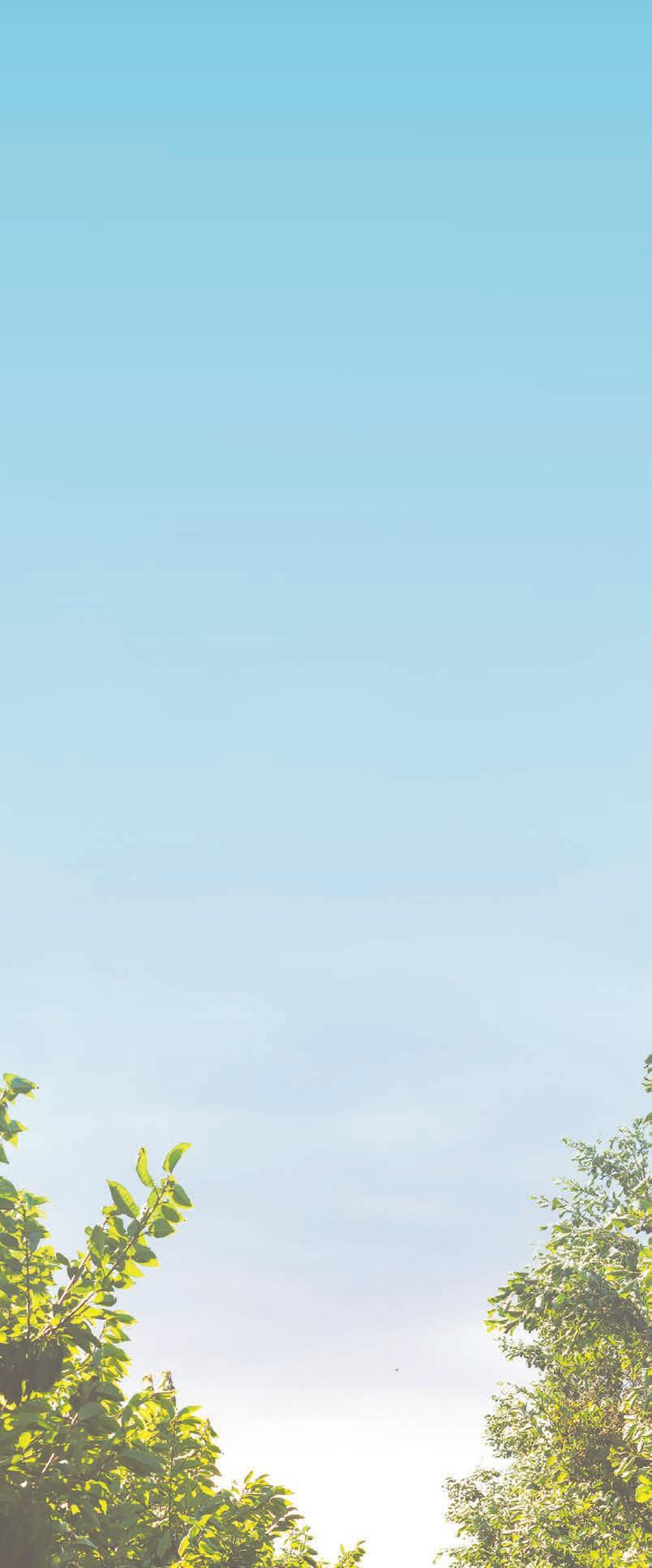
Exporters work to quantify US tariff pain

Neal Wallace NEWS Trade
THE imposition of a 15% tariff on New Zealand exports to the United States could cost the red meat sector an estimated $300 million and wine exporters $112m. Dairy is still to quantify the cost. Of added concern for the competitiveness of meat and wine, US President Donald Trump has limited to 10% the tariff on key New Zealand competitors Australia and Argentina.
The European Union’s trade agreement with the US imposes a 15% tariff ceiling on most European exports to the US.
It also promises to address nontariff barriers on trade in food and agricultural products, including streamlining requirements for sanitary certificates for US pork and dairy products.
The base tariff rate for NZ started out at 10% but Trump increased it to 15%.
The executive director of the Dairy Companies Association of NZ, Kimberley Crewther, said it is too early to quantify the cost of the tariff to dairy, but she said lower rates for some other countries will disadvantage NZ.
The new rates will be added to existing tariffs, which vary between products.
Last year NZ’s exports to the US totalled $2.2 billion of meat, $1.2bn of dairy and $790m of wine.
Beef + Lamb NZ chair Kate Acland said last year the US took 46% of NZ’s beef and 18% of our lamb. She said the concern is that key competitors, Australia and Argentina, both have 10% tariffs, five percentage points lower than NZ’s.
She expects companies to start
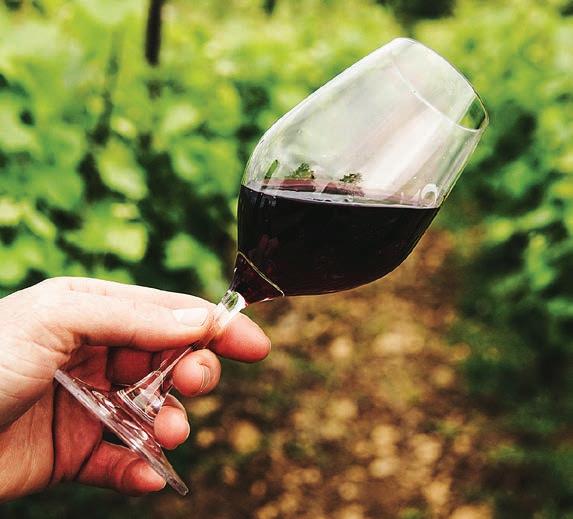
looking for alternative high value markets even though prices in the US have been historically high.
A global shortage of protein and the free trade agreement with the United Kingdom may help offset some of NZ’s disadvantage.
NZ can export about 18,000 tonnes of tariff-free beef to the UK a year and Acland expects that quota to be fully used.
NZ companies can also export about 4400t of beef to the EU.
Acland speculated that Australia might have received a better tariff deal than NZ due to the lifting last month of import restrictions on US beef, which were imposed in 2003 due to fears of bovine spongiform encephalopathy.
Crewther said the new tariffs are in addition to existing rates and mean NZ infant formula faces a 32% tariff and butter about 35%.
For proteins, which have low existing tariffs, it will be about 15%.
The change means key NZ dairy products will be at a price disadvantage compared to competitors.
NZ protein will be more expensive than product from Canada and the country will be at a similar
LABELS: Sarah Wilson, NZ Wine’s manager of advocacy and general counsel, says the US is a very significant market and the 15% tariff is a significant cost
disadvantage for butter and infant formula compared to product from the European Union.
It is up to individual companies whether they can absorb the new rates but she said global demand continues to outstrip supply.
Simon Tucker, Fonterra’s group director for global external affairs, said the co-operative is working through the implications for its business.
“However, global demand for dairy remains strong and Fonterra’s size, scale, and broad product portfolio and market mix means we are well positioned to navigate changes in market dynamics.”
Sarah Wilson, NZ Wine’s manager of advocacy and general counsel, said in March before Trump announced any new tariffs, the cost of the existing rates per bottle of NZ wine was less than 10c.
It is now about $1.10/bottle which, based on last year’s sales, will cost the sector $112m.
“The US is a very significant market and this is a significant cost.”
Wilson said exporters will need to decide whether to pass that cost on, absorb some or all of it or look to divert product elsewhere.
McClay off to argue for lower tariff

Nigel Stirling MARKETS Trade
some of those we compete against in that market [like] the UK and Australia,” McClay told Farmers Weekly.




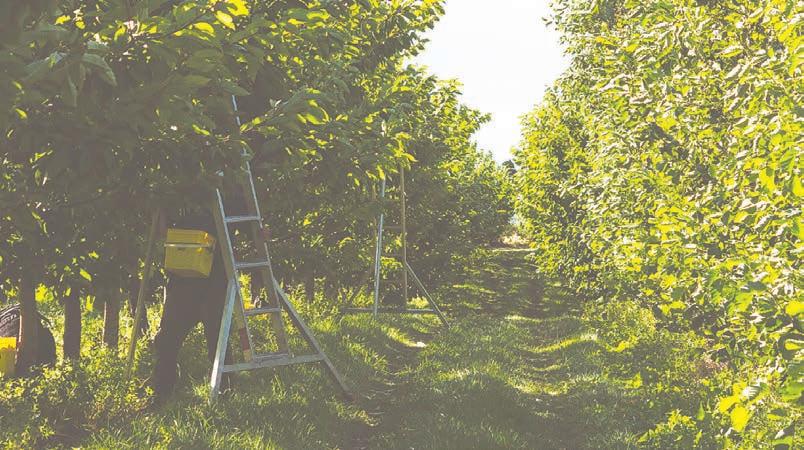
TRADE Minister Todd McClay says he has “no expectations” about his chances of overturning the hike in tariffs on New Zealand exports to the United States when he travels to Washington DC this month.
US President Donald Trump updated tariff rates for goods entering the US from 69 countries by executive order on August 1, hiking NZ’s rate from 10% to 15%, effective from August 7.
NZ was notified of the increase before the official announcement from the White House and McClay spoke to Trump’s Trade Representative, Jamieson Greer, on Saturday morning.
“I was able to express to him our disappointment and what it does to trade and the relationship [and] the harm that could be done to NZ exports, particularly compared to
It is being reported that Trump sorted countries into three categories: nations who bought more from the US than they sold to it, who will pay a 10% tariff, including Australia; those who had reached agreements with the Trump administration and who the US had modest trade deficits with, who will face tariffs of 15%; and those with no agreements and who the US had large trade deficits with, who will face higher tariffs.
NZ’s top trade official, Vangelis Vitalis, has already left for Washington ahead of an expected meeting between McClay and Greer in the next one to two weeks.
McClay said he had told Greer on the call that the $500 million trade surplus in NZ’s favour last year was not a fair reflection of the trade history of the two countries.
“I was making the case to him that there are often times where the US has had a large trade surplus against NZ when we buy aircraft, and Air NZ has said that will happen again soon.”
I was able to express to him [Greer] our disappointment.
Todd McClay Trade Minister
McClay said officials had had “another look” at the average tariff rate applied to US exports to NZ and found it was just 0.3%.
“That says we don’t protect. That actually [trade] can flow freely.”
Asked whether he would push Greer in Washington to restore the 10% tariff, or something lower, McClay said Trump’s latest announcement suggested 10% might now be the best NZ could hope for.
STICKY
Learning from doing

FARMING was the only life Bayden Andersen ever dreamed of, and it’s one he’s forever grateful for.
“I was very lucky to know what I wanted to do at a young age and it’s all that I’ve ever wanted to be,” he says.
Andersen manages a 470 hectare effective Walmsley Canning Estate, a sheep and beef operation in southern Hawke’s Bay, with wife Shaye and children Phoebe, Molly and Colby.
Andersen grew up in the region and feels fortunate to have had a childhood in the country.
“I grew up not far from here as a kid, and then we moved into the Ōmakere district. And then, yeah, farmed around Ōmakere for years, and then done a stint down in Weber.”
Despite this rural upbringing, Andersen set his sights on Smedley Station’s cadet training programme and was accepted in Year 13.
“I worked for some people as a teenager that had been to Smedley, and they loved their time
there. So it was just a place that I was really attracted to going to.”
It was a smart move, Andersen said.
“It was good to go from knowing the basics of farming and having a grounding and farming, to seeing many different farming practices. I hadn’t dealt with deer, I hadn’t dealt with Friesian bulls, I hadn’t done anything with forestry.
Being able to run someone else’s land as though it’s your own is the greatest privilege I’ve ever had, other than being a dad.
Bayden Anderson Pōrongahau
“The people I worked for were good, traditional farmers that were breeding and finishing, but I hadn’t done a trading component. So it just rounded out those skills –the paperwork side was good too.”
After a couple of years’ shearing, Anderson felt the call of the farm and went shepherding.
He’s about to start his sixth year at the estate and is grateful for the
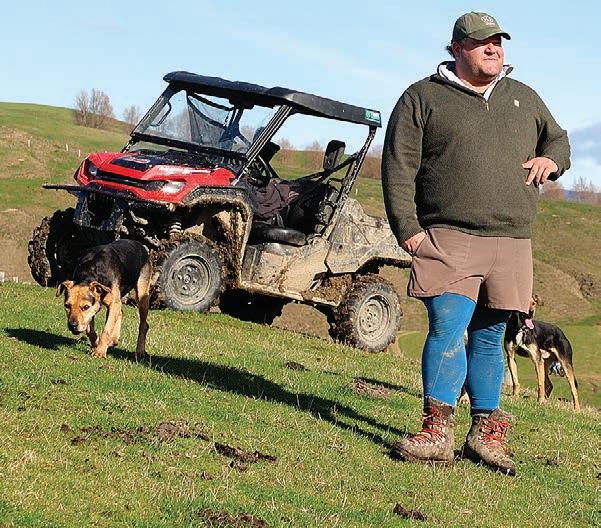
opportunity to farm it.
“Being able to run someone else’s land as though it’s your own is the greatest privilege I’ve ever had, other than being a dad,” he said.
The community is another of the reasons the Andersens love what they do.
“The kids are our life. We chase every opportunity we can get for those children, in sport and education, and thankfully we get to bring them up in such a beautiful place like this.
“Rugby and netball are a big part of our lives in the winter, and recreation in the summer, with diving and fishing.
“We’ve got some really good friends around here that we’re very fortunate to have, and we get to spend time doing stuff we love.
“This community pumps, Pōrangahau is paradise.”
And running the farm is a family affair, with the Shaye and the kids often pitching in.
“It’s great to have them here and getting them involved, and learning – learning from doing.”
But Andersen worries his paradise is being paved with pine trees, which could have lasting impacts on the community.
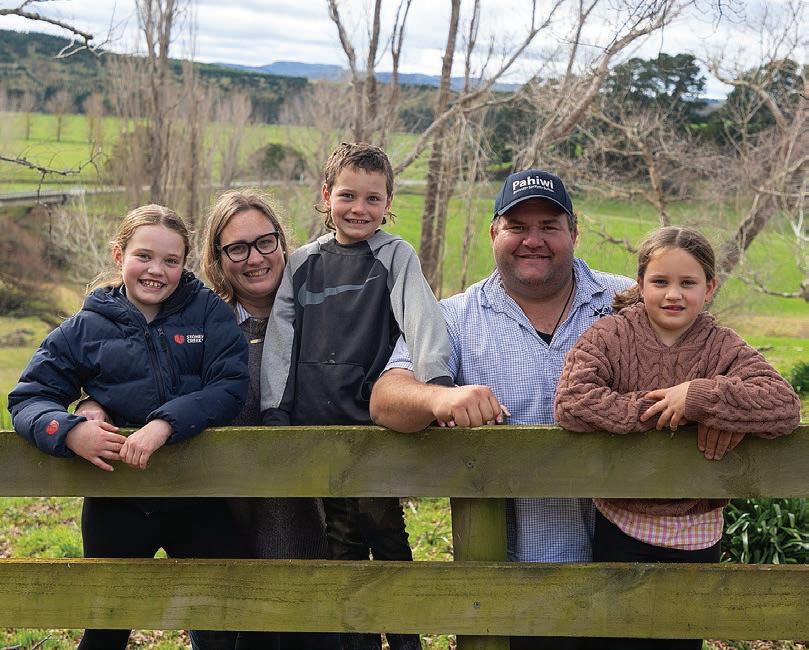
“The biggest challenge in agriculture at the moment is carbon farming,” he said.
“It’s taking away job opportunities, land ownership opportunities and community opportunities.
“This community is thriving and the trees aren’t hurting us right now but they’re going to at some point.
“It will take some kids out of a school, money away from the community, and jobs. That’s the biggest challenge we’ve got,
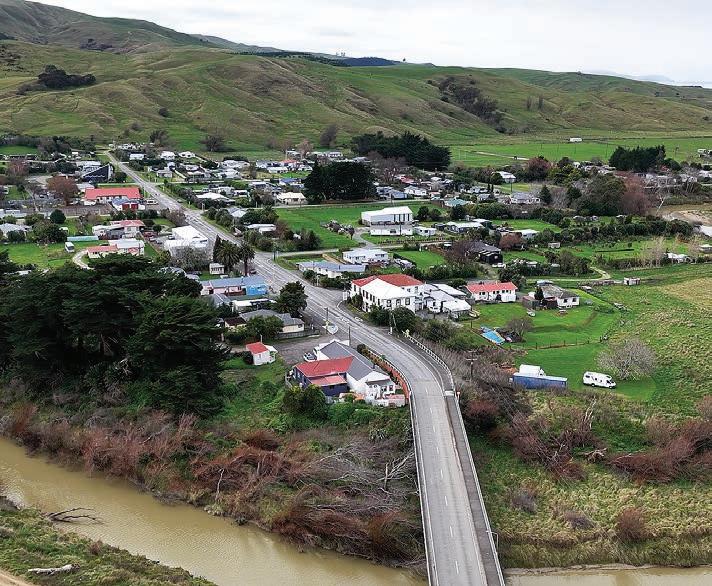
especially at our age, with wanting to progress into equity. It’s moved the goal posts, that’s for sure.”
–This article was made possible with support from AGMARDT and the Smedley Foundation.

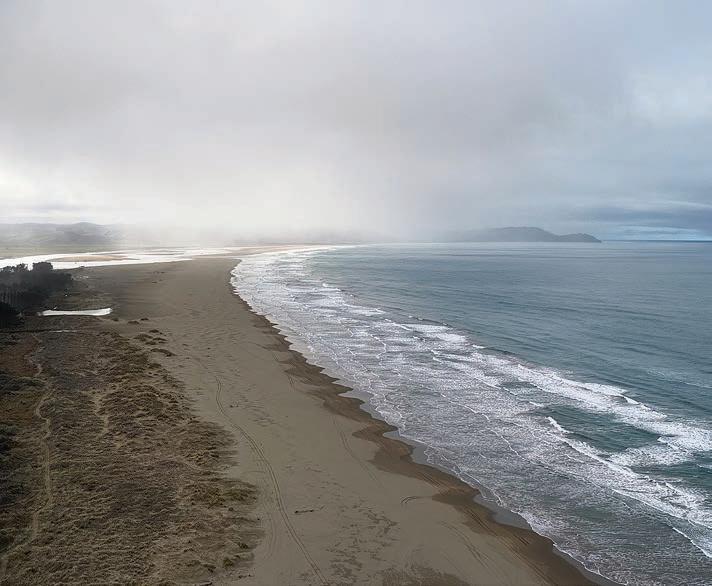


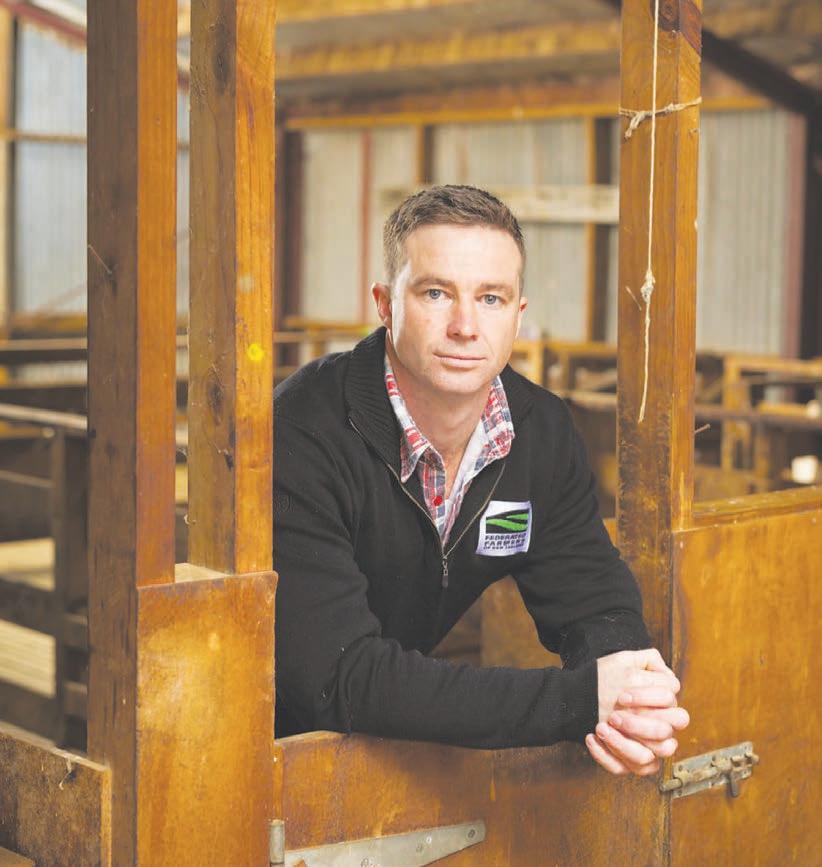
Bryan Gibson ON FARM Sheep and beef
TOGETHER: The Andersen family, Phoebe, Shaye, Colby, Bayden and Molly. Photos: Alistair Thom
CARBON: Bayden Anderson says the biggest challenge in agriculture at the moment is carbon farming. ‘It’s taking away job opportunities, land ownership opportunities and community opportunities.’
CONNECTION: The Andersens love the Pōrangahau community, with good friends close by despite its remoteness.
PARADISE: The Andersens enjoy kids’ sports in winter and fishing and diving in the summertime.
Contractors add their voice to bale-wrap rumble

Gerhard Uys NEWS Environment
ASOUTH Otago
contractor is backing calls for better on-farm disposal of plastic bale wrap to protect livestock and machinery, saying he is getting frustrated with the sheer amount he sees on some farms.
Fraser Leslie told Farmers Weekly he submitted on proposed reforms to the national take-back and recycling scheme because he has become frustrated with the amount of plastic discarded on some farms.
Some paddocks cannot be cultivated because of the amount of plastic in them, he said.
He once counted 283 small pieces of bale wrap in a 2 hectare paddock he was roller drilling, Leslie said.
Plastic ends up in paddocks during the cutting, carting and feeding out phases.
Leslie said he has seen many instances where livestock consume plastic, and he does not understand why there is a fine if an animal arrives at the works lame, but no fine for an animal whose rumen is full of plastic. He said a plastic recovery scheme would have to be practical to be successful.
Recently Alliance Group asked farmers to remove plastic baleage wrap and twine from paddocks after feeding out.

We strongly encourage farmers and rural contractors to work together to ensure all plastic wrap is removed from paddocks.
Richard McColl MIA
The processor said it is seeing an increasing number of cases where wrap is making it through to processing after livestock eat it, and key equipment is being blocked.
The regional director at Vetsouth, Mark Bryan, said twine causes more harm than plastic as it is long and causes entanglement in the gut.
Veterinarians see more sheep affected by it than cows, and in acute cases animals are beyond help.
He said more often than not vets are called out to cases where an animal is slowly wasting away, but beyond help. Autopsies show “a significant mass of plastic and netting in the rumen”.
The commercial manager at plastic recycler Plasback, Neal Shaw, told Farmers Weekly that recycling is voluntary and that many farmers still bury or burn their farm plastics, which is against many council rules.
Rural Contractors New Zealand chief executive Andrew Olsen said there needs to be alignment between district councils or district plans on how ag recovery is handled.
Without council alignment there
ACCC looks into bid for Fonterra assets

Gerald Piddock NEWS Dairy
BEGA Cheese has launched a joint bid with FrieslandCampina NV to acquire some of Fonterra’s consumer, food service and dairy ingredients businesses.
If the joint bid is successful, Dutch dairy giant FrieslandCampina will acquire the segments of Fonterra’s global businesses that it is selling outside of Oceania, and Bega will acquire the Oceania businesses that are being sold.
The bid has been registered with the Australian Competition and Consumer Commission (ACCC), which is seeking public feedback on the proposal as it investigates its impact on competition within that country’s market.
The Australian consumer
watchdog’s investigation centres on whether the bid will reduce competition in the acquisition and processing of raw milk where the two parties overlap and if it would reduce competition of the wholesale supply of dairy products and ingredients.
In July, the ACCC said it did not oppose French dairy giant Lactalis from purchasing Fonterra’s consumer business globally, and its dairy ingredients and food services businesses in Australia.
ASX-listed Bega is one of Australia’s largest purchasers of raw milk, collecting 1.3 billion litres of raw milk annually under more than 600 farmer supply contracts and employing around 3900 staff across 19 manufacturing sites and corporate offices.
It earned A$3.52 billion in revenue in the 2024 financial year and its EBITDA was A$165 million.
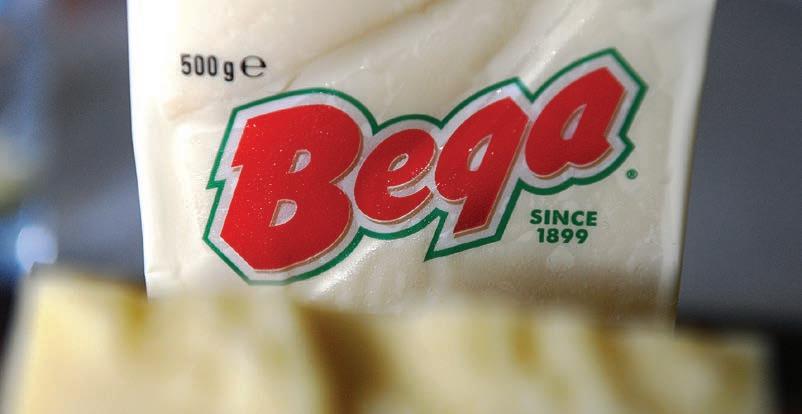
As well as the Bega brand, Bega’s retail brands in Australia include Dairy Farmers, Farmers Union and Pura.
Bega also supplies dairy products to businesses in the food service sector, under brands such as Dairy Farmers and Farmers Union.
In addition, Bega manufactures a range of dairy ingredients, such as milk powders and whey powders, which it supplies primarily to food manufacturers.
Fonterra has around 650 Australian farmers in Victoria, Tasmania, and parts of South Australia and New South Wales.
Fonterra’s retail brands include Mainland, Western Star and Perfect Italiano, and it holds a licence to use the Bega brand to sell certain packaged cheese products in Australia. Fonterra also supplies milk, cream, cheese and butter products to food distributors through its Anchor Food Professionals brand.
The two companies overlap in various parts of the dairy supply chain, including acquiring milk from farmers in Victoria and Tasmania, in processing and production and in the supply of dairy products and dairy ingredients to retailers and food service outlets.
Feedback to the ACCC’s investigation closes on August 15 and the provisional date for announcement of its findings is September 25.
said there is no infringement fine specific to the presence of plastics in the stomachs of farmed animals.
The Ministry for Primary Industries’ presence at meat processing plants across the country shows it is relatively rare for plastics to be discovered in farmed animals, he said.
“If our vets identify this as a concern, it is flagged for follow-up with the originating farm.”
The manager for industrial operations, data and insights at the Meat Industry Association, Richard McColl, said from time to time plastic baleage wrap gets caught in machinery at meat processing plants.
would be “leakage”, he said.
Contractors want a “clean shot” while they are working and would prefer not to have to cultivate where there is plastic, he said.
New Zealand Food Safety deputy director-general Vincent Arbuckle
“We strongly encourage farmers and rural contractors to work together to ensure all plastic wrap is removed from paddocks. It might seem minor, but even small amounts can cause problems down the line.”

Farm sales soar in key areas

Neal Wallace MARKETS Real estate
IMPROVED product prices and lower interest rates drove a significant recovery in farm sales in the year to the end of June.
Compared to the previous year, the number of dairy farms sold improved in all key regions, but were significantly higher in Southland, up 100%, and Canterbury, 53.5% higher, according to Real Estate Institute of New Zealand (REINZ) rural spokesperson Shane O’Brien.
The median sale price was mixed, increasing 20% in Manawatū-Whanganui, 6.4% in Waikato and 4.6% in Canterbury, but falling 14.7% in both Southland and Taranaki.
More grazing blocks were sold in the year under review, 358 compared to 290 a year earlier, with activity especially busy in Otago-Southland and Hawke’s Bay.
O’Brien attributes the interest to improved red meat prices and demand for support blocks but notes marginal land struggled to attract buyers and environmental
compliance concerns remain a factor.
Prices paid for grazing properties were mixed, led by Manawatū/Whanganui, up 21.3%, and Northland, 1.7% higher. Prices were lower in Southland, 13.3%, Otago, 10.6% and Waikato 1.1%.
Firming commodity prices and favourable seasonal conditions prompted interest in finishing farms with the most active regions Manawatū-Whanganui, 113 sales, Canterbury, 104, Southland, 95, Waikato, 74, and Otago, 66.
There was a notable difference between the median price per hectare in the North Island compared to the South Island. Manawatū-Whanganui and Waikato both had notable drops in price, 26.5% and 23.5% respectively, while Canterbury, 17.4%, Otago, 16.4% and Southland 14% all increased in price
The arable sector had limited activity at just 79 sales, of which 58% occurred in Canterbury.
Canterbury’s median price per hectare declined slightly to $44,000 (down 0.9%), while Waikato’s increased to $60,370 (up 26.7%).
BURIED: South Otago Fraser Leslie says even when paddocks look clean there is often plastic in the soils.
SUFFERING: Last month Alliance Group asked farmers to remove plastic baleage wrap and twine from paddocks after feeding out. Netting and bale wrap in the guts of this cow meant it had to be put down.
Ravensdown’s robotic soil testing lab opens

Annette Scott TECHNOLOGY Soil
ANEW, purpose-built soil testing laboratory in Canterbury will boost the sector’s productivity while ensuring precise and efficient nutrient use.
Fertiliser co-operative Ravensdown officially opened the new Analytical Research Laboratory (ARL) facility in Rolleston under its portfolio company, venture arm Agnition.
ARL provides accredited analysis of soil, plant and feed samples for farmers and growers nationwide. Its test results help inform decisions on nutrient use, pasture performance and environmental management.
The new facility replaces ARL’s previous site in Hawke’s Bay, which was destroyed during Cyclone Gabrielle in 2023.
After operating from a temporary site in Hastings for two years, Ravensdown chief executive Garry Diack said, the decision was made to relocate and re-establish in Canterbury, closer to key research partners in the heart of the South Island’s core
farming communities, while also supporting regional growth.
The Rolleston lab is 50% larger than the previous site and includes automated robotics, with five custom-built machines developed by the ARL team, making it the most technologically advanced soil lab in NZ.
These improvements are expected to double the lab’s soil testing capacity over the next five years, ARL general manager Suzan Horst said.
Accurate, timely data is essential. It allows farmers to apply nutrients only where needed.
Suzan Horst ARL
“This new lab positions us to meet the growing demands of modern farming.
“Accurate, timely data is essential. It allows farmers to apply nutrients only where needed, which is good for the environment and increases crop production and pasture growth.”
The lab employs 30 people, including seven staff who
relocated from the original Napier team. There are more than 50 tertiary qualifications across the team, including five PhDs.
The lab currently processes 80,000 samples per year, mostly soil.
Horst said the new lab is capable of doubling that in soil samples alone while expanding testing capacity for plants, crops, and feed samples.
ARL conducts more than 500,000 tests annually across 50 different test types with most demand focusing on elements such as sulphur, magnesium, phosphorous and potassium, essential to efficient fertiliser use and soil health.
ARL independently tests and has direct APIs with many organisations, including Hawkeye Pro, Ravensdown’s digital mapping and nutrient management platform.
These tools turn results from the lab into applicable tools farmers can use to effectively manage their farms.
Ravensdown general manager innovation Jasper van Halder said the new ARL facility in Rolleston adds to the growing scientific and technical infrastructure
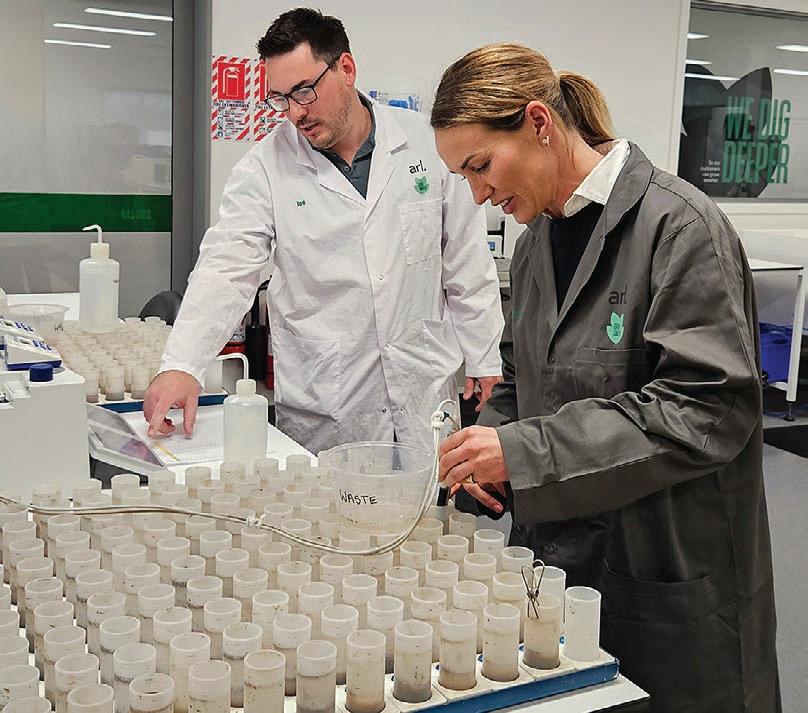
of Canterbury, reinforcing the region’s position as a hub for agricultural innovation.
“This lab is about more than rebuilding, it’s about strengthening the systems that support farmers, researchers, and land managers across the country.
“We are now set up for growth and smarter farming; if you know more you can grow more.”
Associate Minister of Agriculture and Selwyn MP Nicola Grigg said as she officially opened the facility, “Science like this has the ability to adopt the application so important
to our food provenance story to offshore markets.
“Soil and plant science is the absolute foundation for success of our agriculture sector and this an exciting opportunity to demonstrate how our seed performs in the soil with huge opportunity for growth as farmers test more often in line with precision agriculture.”
Selwyn District Council deputy mayor Malcolm Lyall said the state-of-the-art robotic lab is a major win for agriculture in the region.


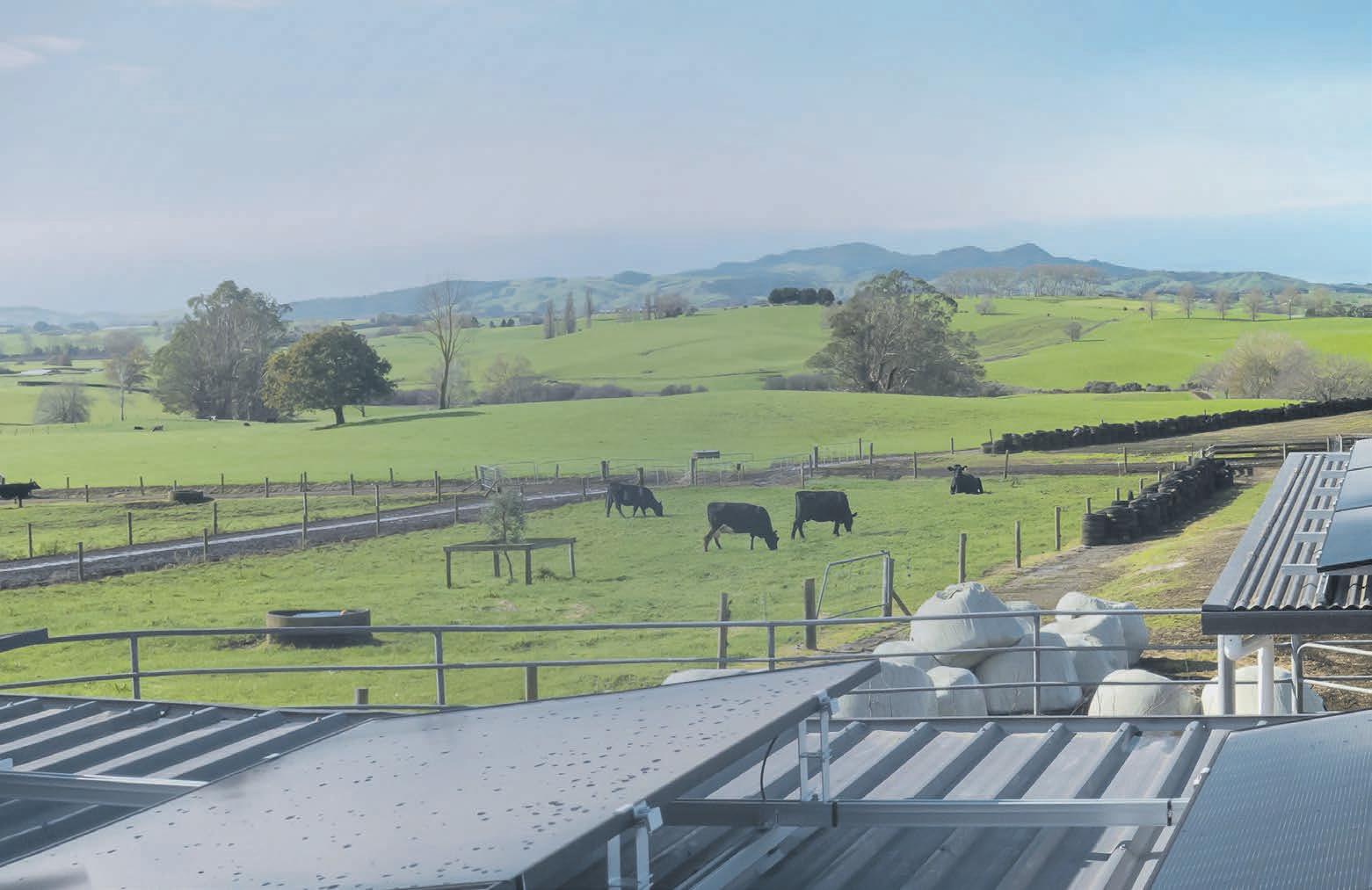

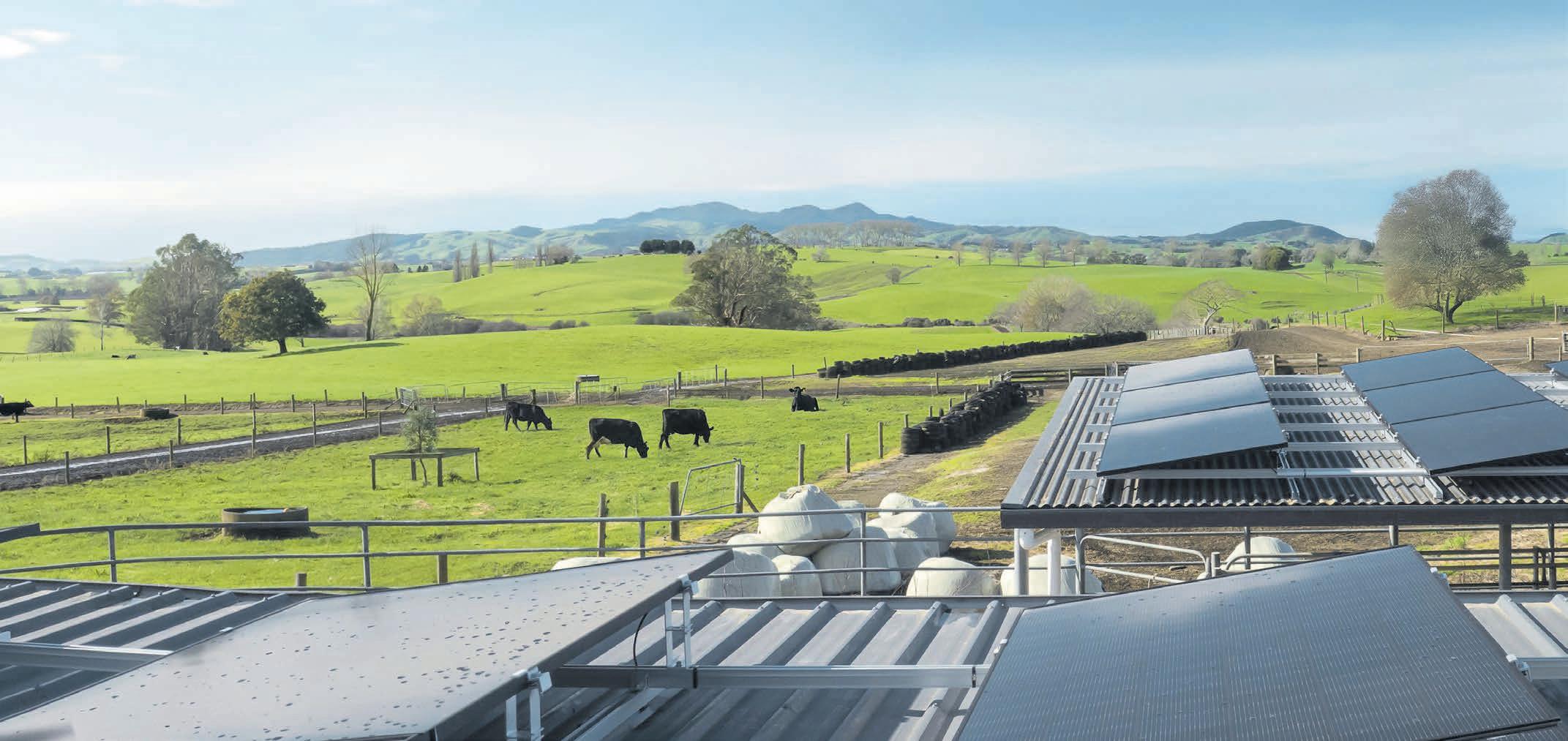

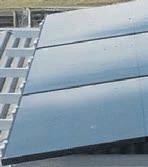
TESTING: Selwyn MP Nicola Grigg tests a soil sample under the watchful eye of lab operations manager Joe Holloway at the new Analytical Research Laboratory facility in Rolleston. Photo: Annette Scott
‘Best place to farm, worst place to sell’

Annette Scott NEWS Agriculture
HATHAM Island farmer
CGary Cameron says his remote farm on the southern coast is in “the best place in the world to grow anything but the worst place to sell anything”.
The handbrake is that the one and only ship to service the island keeps breaking down.
But Cameron, like all island farmers, is hopeful that the Chatham Island Farmers Association Incorporated Society, incorporated in May this year, will help drive the farming industry forward.
Cameron, as chair, is supported by listed key officers, prominent Chatham Island farmer Tony Anderson of Wharekauri Station and Raewyn Gregory-Hunt a ninth generation Pitt Island farmer and livestock agent.
“In days gone by we had Federated Farmers, with which I was heavily involved,” Cameron said.
“We are keen to progress something similar again. Times are tough, we all have to tighten our belts but most of all we need unity among the farmers.
“This catchment group idea we are working on with the Ministry for Primary Industries under the incorporated society is about getting that unity with transparency for all farmers when it comes to the likes of livestock shipping quotas, which is a huge and contentious issue right now.”
Cameron and his wife Eileen farm Durham Farm, a 440 hectare operation running 1600 Romney based Suffolk-Texel breeding ewes and 100 breeding cows, on the coastal fringe on the island’s more fertile land.
A former stud breeder, “one of the last standing”, Cameron now pays “good money” for his rams from reputable stud breeders on New Zealand’s main islands.
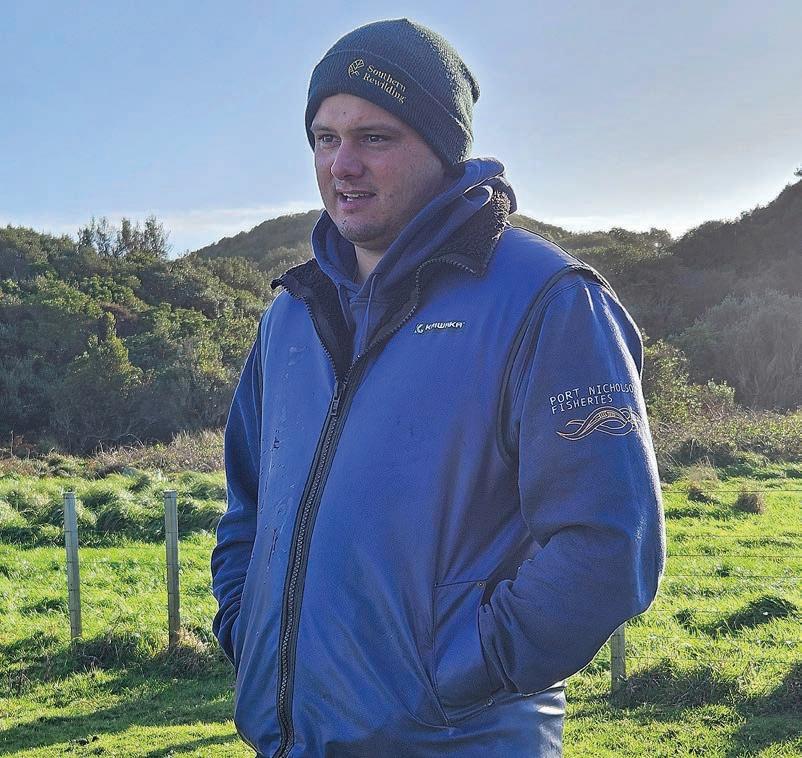
But it’s one thing to pay good money and breed good stock on the best of the island’s farmland; Cameron, too, faces the challenge that meets every other farmer – of getting his stock and produce to market.
“In the 90s I used to put lambs on the ship straight to the works and they would dress out at 18kg.
“Now all the lambs go store. With the unreliability and inability to get rid of stock I wouldn’t even contemplate prime stock.”
When it comes to wool, fleece is the only wool Cameron sends to market.
“While we are the best place in the world to grow anything we are the worst place to sell anything.
“It costs $120 a bale to get wool out so unless you make $1.50/ kg it’s not worth doing, so I only send fleece wool and that’s very marginal in these times.”
Rust is an ever-present problem for farmers, with the salt spray during the windy weather not only attacking vehicles and machinery but even eating away staples on

A drive around the island to Kaingaroa Station finds eighth generation farmer and Hokotehi Moriori Trust-owned station farm manager Levi Lanauze.
A new generation farmer, Lanauze has been managing the 4800ha station running 4500 Romney ewes and 400 cattle since 2020, when he returned to the Chathams after 12 years away.
“I definitely came home with a different lens to see new opportunities and you don’t have to think too far out of the square to be different here.”
He also said being bound by shipping challenges makes it a hard place to farm.
Lanauze’s new farming practices stand in something of a contrast to the islands’ traditions and are not necessarily accepted by all, but he is driven to make changes for the better.
“I have recently sent off a planeload of lambs, and it not only saved $2 a lamb, it got the lambs away when they needed to go.
fence posts, fencing wire and hinges on gates.
Where on the main islands fences can last up to 80 years, on the Chathams they rarely last 1015 years.
But it is shipping that lingers as “an old, sore point”, and securing something as basic as a reliable ship remains the core focus.
Over the years farmers have looked into chartering their own ship, but found it too expensive, with past reviews having concluded that the Chathams economy can’t support two shipping lines.
But the government is supposedly on the case and there’s understanding that there’s a short list down to three for a new ship, hopefully very soon.
“I have had 92 cattle booked for nine months and they’ve still not gone.”
He has moved lambing dates, getting the ram out earlier, with lambs ready to go on the boat when no others are ready.
Shearing twice a year is proving worth it. “I made money on the wool this year.”
He recently introduced the shedding Wiltshire, but is yet to be convinced they will be a fit.
Breeding heifers for larger profit is another change for Kaingaroa.
A former beekeeper and fencer in Canterbury, shepherd in the Scottish Isles and station manager in Alberta and Canada, Lanauze is proud of his wide experience and is very keen to draw on it to make a difference for future farming generations on the Chathams.
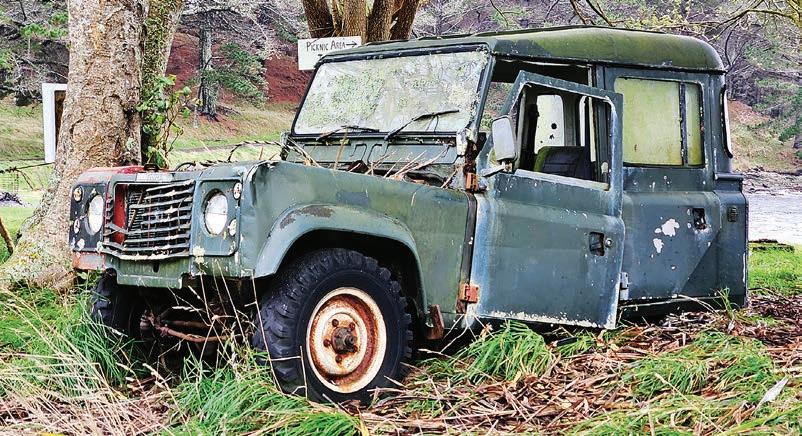
I have recently sent off a planeload of lambs, and it not only saved $2 a lamb, it got the lambs away when they needed to go.
Levi Lanauze Kaingaroa Station
The shipping news

CHATHAM Islands Shipping is responsible for delivering the islands’ shipping services, averaging 28-30 sailings over a calendar year.
• Its vessel, the 40-year old Southern Tiare, increasingly requires major maintenance. The age of the ship is the primary problem impacting reliability.
• Both Chatham Islands Shipping and the Chatham Islands Enterprise Trust have battled for five years for a replacement vessel. They want a purpose-built vessel that enables a consistent and affordable service, capable of carrying a much larger capacity of livestock, as well as scale in the future to adapt to growth on island farms while also being capable of adapting to changing freight needs to enable the islands economy to grow alongside it.
• The government appropriated $35.1 million for a replacement vessel in the 2022 Budget, of which $5.1m was intended to be spent on getting the vessel through survey. Given the time that has lapsed, the vessel has required additional surveys, including major maintenance to meet operating regulations.
• The government has narrowed proposed tenders down to three – Chatham Islands Shipping, Aucklandbased McCullum Bros, and Bass Straight Freight Australia.
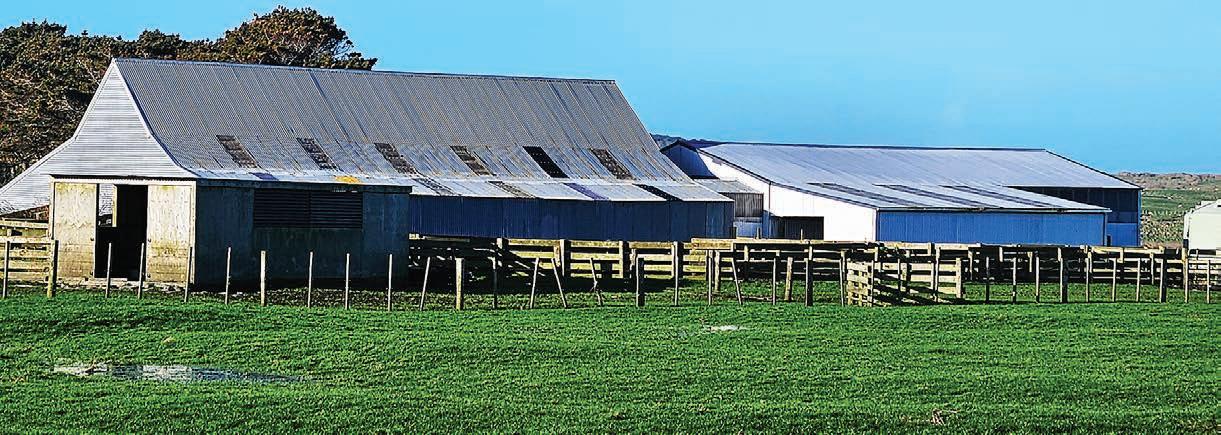
Annette Scott NEWS Transport
LESSONS: Levi Lanauze is more than keen to use his international experience to make a difference for future farming generations.
Photos: Annette Scott
LOOKING AHEAD: Gary Cameron is hopeful that the newly established Chatham Island Farmers Association Incorporated Society will help drive the farming industry forward.
GENERATIONS: Kaingaroa Station is managed by eighth-generation farmer and Hokotehi Moriori Trust-owned station farm manager Levi Lanauze. The 4800ha station runs 4500 Romney ewes and 400 cattle.
NEVER SLEEPS: Rust is an ever-present problem for farmers with the salt spray during the windy weather not only attacking vehicles and machinery but also eating away staples on fence posts, fencing wire and hinges on gates.
Are you with us?
Be part of the growing community that has opted in to an annual voluntary subscription with us. Your support means more than you might realise. You’re backing more than just a 22-year-old newspaper, you’re backing belief, and we want you to know how much our entire team at Farmers Weekly would appreciate your support.
It’s become clear in the last few years that the era of quality, free community newspapers is over. That model is broken.
So we had two options:
1. We cut costs. We’ve already tightened our belts, but going further would mean fewer journalists, less content, and less support for the food and fibre sector. Cue the trolls on social media cheering on the slow death of the media.
2. We keep believing, and here’s what we believe:
• We believe in the need for a strong, independent farming media that reaches every farmer. In today’s world of algorithm-powered misinformation, that is more important now than ever.
• We believe everyone should have access to reliable market information and insight. Many of you tell us you turn to the business end of Farmers Weekly first.
• We believe the work of your advocacy groups should be visible to everyone. That’s why we partner with Federated Farmers and others.
• We believe in holding on to our team of seasoned agri-journalists, and employing and training new ones.
• We believe you value Farmers Weekly, both print and online.
While other media companies shrink their newsrooms, we’re determined not to, but we need your voluntary subscription. Already, 932 of you have started your voluntary subscription. Thank you! This support is why we continue to believe.
Farmers Weekly reaches more than 150,000 people online every month and lands in 74,000 rural letterboxes every week. We believe at least 8000 of you know it’s worth $2.50 a week, or $120 a year, fully tax-deductible. So become a Friend of Farmers Weekly and sign up to a voluntary subscription.
In return we’ll continue to deliver you, and every farmer in the country, the best value we can for your annual $120 voluntary subscription.
Please contact me at any time if you have any questions (or ideas on how we can reach our 8000 target any quicker!)

Dean
Williamson
– Publisher dean.williamson@agrihq.co.nz
– 027 323 9407
BECOME A VOLUNTARY SUBSCRIBER
Choose from the following three options:
Scan the QR code or go to www.farmersweekly.co.nz/donate

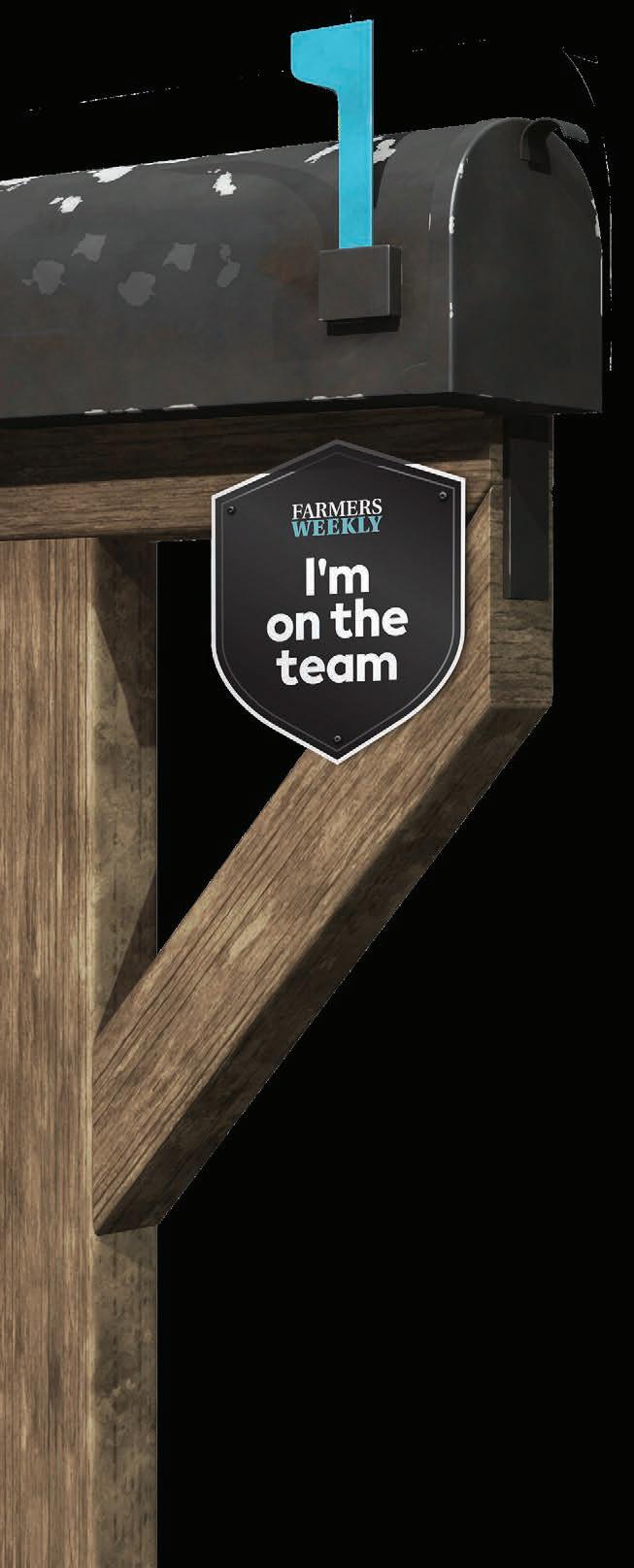
Start your voluntary annual subscription today. $120 for 12 months. This is a voluntary subscription for you, a rural letterbox-holder already receiving Farmers Weekly every week, free, and for those who read us online. Note: A GST
Email your name, postal address and phone number to: voluntarysub@farmersweekly.co.nz and we’ll send you an invoice Call us on 0800 85 25 80
subscriptions.

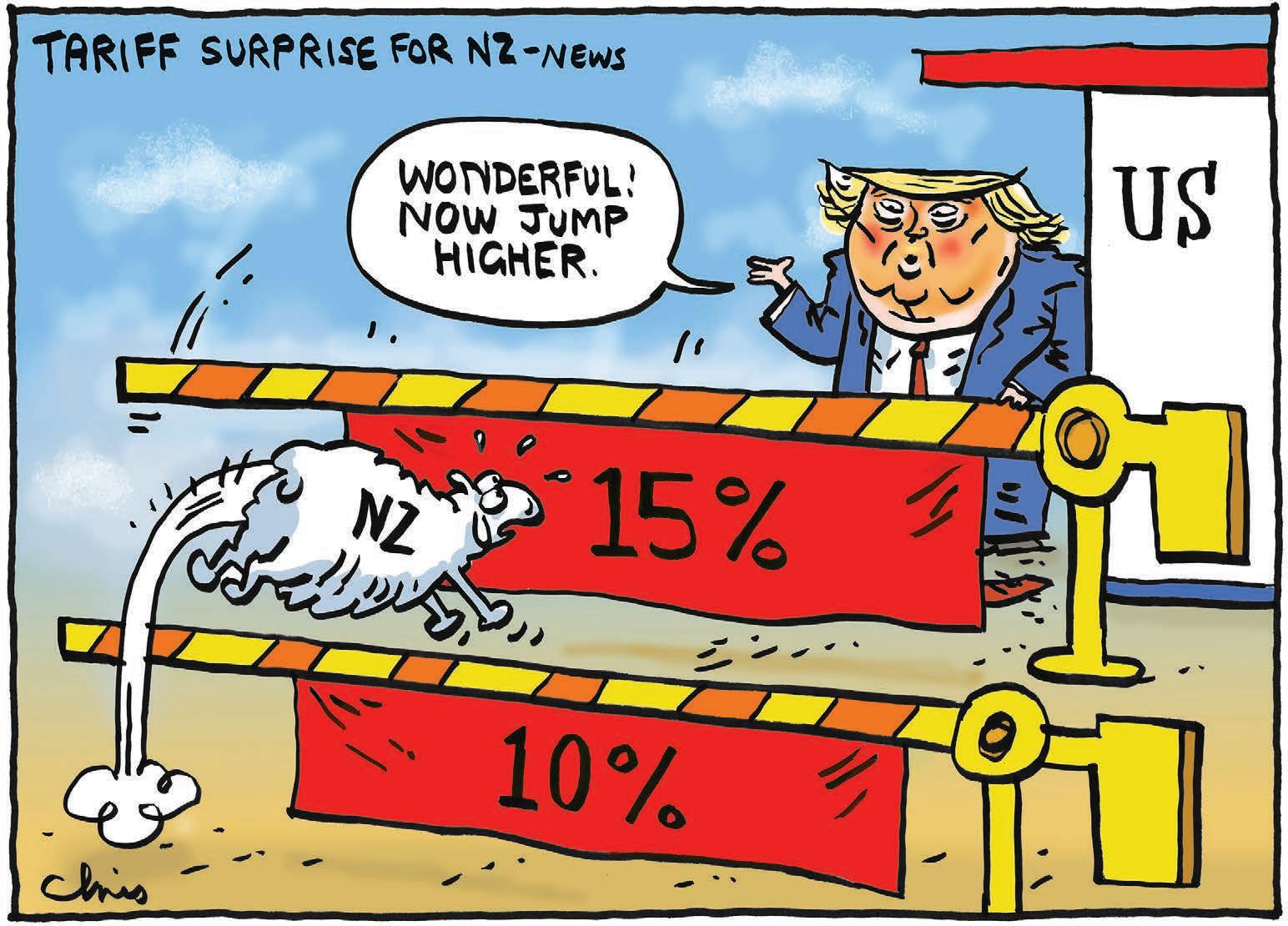
From the Editor

TNeal Wallace Senior reporter
HERE is a saying that you don’t know what you have until it’s gone.
That could well be the case for Alliance shareholders with the board announcing on Tuesday its preferred option to inject $200 million in new capital into the co-operative.
There were early rumours that could be from Saudi Arabia, but the most recent speculation has been Ireland’s Dawn Meats, with a report in the Irish Times that they are prepared to pay $270m for a 70% stake in Alliance.
That is pure speculation, but if true would present a difficult sales pitch, asking shareholders in a 100%-farmer owned cooperative to sell 70% of the business and create a relationship that would not be one of equals.
Certainly any offer has to be considered on what, other than cash, a buyer brings to the table and what the alternatives are.
The implications of Alliance’s recapitalisation is also a vote – or not – of confidence in co-operative ownership.
Remaining a 100% farmer-owned co-operative, a moniker Alliance has extensively and proudly used in marketing and promotion, appears over.
Its co-operative status has been tarnished in Alliance’s heartland of Southland, due to lingering shareholder disquiet that stock traders in some cases receive more for stock than loyal suppliers.
Alliance reduced its reliance but justified it as providing certainty of supply when stock flows were low.
Faced with shareholder anger at increasing retentions on stock killed, the Alliance board last year abandoned attempts to recapitalise with shareholder funds, and with it any notion of remaining a 100% farmer owned co-operative.
publicly floated in 1995 and subsequently bought by Talleys Group in 2010.
In 2016 Silver Fern Farms became a hybrid when it sold 50% of the business to Shanghai Maling.
Unlike meat companies, the dairy industry has co-operative ownership at its core, with Fonterra accounting for 80% of total milk collections.
The appetite of sheep and beef farmers for 100% farmer-owned co-operative companies is wavering due to frustration with performance, uncompetitive pricing and disquiet over the use of traders.
Our ancestors established co-operatives last century to break the hold of the then United Kingdom-owned meat companies and to ensure ready access for shareholder’s stock.
What emerges in the coming months will reshape the sector and is likely to see a more commercial, less flexible procurement model.
This week’s poll question (see page 4):
Do you have confidence in NZ’s ability to combat pests and diseases such as grass grub?
Have your say at farmersweekly.co.nz/poll
LAST WEEK’S POLL RESULT
MORE than 95% of voters thought the government did not need to regulate the chores children are allowed to do on family farms. Most voters thought it was an unnecessary imposition. “It’s not needed, parents are able to look after their own children’s wellbeing,” one said. “This is nobody’s business but the parents’. How many cases of overworked exploited children have been found on NZ farms? This is a solution looking for a problem,” said another.
“Most farmers would not put their children in a situation without knowing they were capable,” another voter said. “Most farm kids under 10 have better common sense and stock knowledge than a lot of adults. I would be interested to see the amount of workplace accidents from kids helping their parents on farm.”
Last week’s question: Does the government need to legislate what chores children can do on family farms?
That aside, there still appears to be sufficient support for retaining a degree of co-operative ownership, making any bid to sell 70% of the company challenging.
Alliance is destined to be the third large co-operatively owned meat company in the past 30 years to change its structure.
AFFCO, formerly the Auckland Farmers Freezing Company, was a co-op before being
The days of a co-operative wearing the cost of putting on early chains because it has stopped raining or finding space for a farmer needing to get rid of animals at short notice, could well be over.
With the injection of more commercially focus partners, farmers may encounter more rigid, less flexible supply contracts.
A relatively quiet decade in the meat industry is about to be thoroughly upended. Once the ownership of Alliance is settled, the next challenge will be addressing excess processing capacity.



Lessons from elephant eaters: Alan Livingston
In this series, the regular Eating the Elephant contributors ask big questions of food & fibre New Zealanders with a history of taking on big challenges.
ALAN Livingston has provided a lifetime of community service from his farming base on the northern slopes of the Waikato’s Mt Pirongia.
A believer in investing time in community, he has been involved with Waipa District Council, Waikato Regional Council, QEII Trust, Waikato River Authority, Sport Waikato, Magic Netball and the Te Awamutu Theatre.
In these places, he saw firsthand the power of community working together.
Why did you choose a life in food and fibre?
My family are longtime sheep and beef farmers, although at 18, I wanted another string to the bow so Lincoln University and rural banking provided a strong foundation before full-time farming.
What are you most proud of and why?
Naturally a beautiful wife, three successful children and nine grandies spring to mind. However, I hope my career of community service, initially in my local Te Pahu community, then Waipa District then Waikato Regional Council and QEII Trust, has made a difference.
Local cinemas, sports clubs and conservation organisations need help. I have found helping has been extremely rewarding.
What is something unusual about yourself that you love?
While not unusual in my day, but more so today is the importance and strength of family, both immediate and extended. Blood really is thicker than water.
What is the best investment that you’ve ever made?
Education, even if I didn’t fully appreciate that when I was younger. Lincoln taught me to think and to value your contacts ... Good advice, I think.
What two books changed your life and why?
Lochore and Give that Man a Horse, on the lives of Sir Brian Lochore and Sir Patrick Hogan, who were two men I knew personally. With Sir Patrick, the lesson was not to compromise on quality. With Sir Brian, it was on leading by example, teamwork and being adaptable.
What advice would you give to a young person today?
Get educated and take the opportunities life presents. This requires positivity, risk-taking and
adaptability. Develop your people skills and don’t forget to give back to your family and community.
What will the food and fibre sector of 2040 look like?
There will be four Rugby World Cups by 2040. The All Blacks will win one, while a first-time winner will be crowned in 2039. Now for my predictions ...
Diversity will provide our biggest opportunity and will look like niche products, crops not presently grown in New Zealand, demand from new emerging nations (especially India), eco-tourism and the ability to work remotely to increase off-farm income.
Diversity will come from science and technology too –like increased automation, more efficient rotational grazing due to livestock data-chips and virtual fencing. Diversity for climatic reasons will see sub-tropical crops in the far north and traditional crops grown further south.
By 2024, thankfully, politicians will have recognised that regulatory regimes must set realistic targets and time frames and be practical and affordable to work.
As I have seen with QEII and regional council, biodiversity enhancement and improved water quality are not quick fixes, but can

improve on an intergenerational time horizon.
As a lifelong sheep fan, wool will hit the jackpot (just in time) as scientists devise ways to utilise its unique thermal resistance and moisture absorption properties.
Pests – deer, goats, pigs, cats, possums, wallabies – will reach endemic levels, affecting farm production and creating biosecurity risk.
Technology will produce bait that affects the female reproductive system and renders them sterile, but this will need work to minimise unintended consequences to other species.
A massive investment in relationships will be required with the hunting fraternity to ensure we are managing both biodiversity and wild game hunting effectively. We will want more bush unimpacted by feral animals, while at the same time having pockets where game animals can be hunted.
IMPACT: Alan Livingston hopes his career of community service, initially in the local Te Pahu community, then Waipa District then Waikato Regional Council and QEII Trust, has made a difference.
Regional and local government will be reorganised to 12-15 unitary authorities. The new water authorities (drinking and wastewater) established by councils in 2025-27 will prove a financial millstone to urban ratepayers due to the unforeseen capital works costs and extremely high costs to meet environmental standards.
But another water, flooding, will prove a significant financial challenge – especially to farmers, due to the relatively low number of directly benefitting ratepayers. Carbon farming of pine trees will reduce as financial incentives are removed, poor management, disease, fires (particularly on the east coast of the North Island) and the resurgence of wool will see good contour land returning to sheep and cattle.

Pāmu sale could unlock money for research
farms developed and then sold.
Pāmu is now the nation’s largest farmer, with 112 farming units over 356,048 hectares.

Alan Emerson Semi-retired Wairarapa farmer and businessman: dath.emerson@gmail.com
THE recent news of Pāmu’s profitability is welcome. I’d make two observations, however.
The first is that if you can’t make a profit with current prices you shouldn’t be in business. The second is that the return on investment is still distinctly average.
Landcorp Farming Ltd came into being in 2001, followed by Pāmu in 2015. Previously there was the Department of Lands and Survey, which developed farms for sale. They did it well with many
It is currently in the news with cries for the organisation to be sold, and those cries have been around almost since Pāmu’s inception.
Various politicians over the years have promoted the sale. We’ve had promises of farms being sold to young Kiwis as a way of getting them started. There were concerns about foreign ownership and the suggestion of a private corporate buyer.
They’ve all come to nothing.
The current campaign has been promoted by agribusiness accountant Pita Alexander, who claimed “Pāmu has passed its useby date and outgrown its original purpose”.
He also claimed that the sale would give the government $2 billion, suggesting that the “return on investment is now too low to make the company viable”.
Those favouring a sale claim that the private sector can manage a farm better than Pāmu can. That it isn’t a core government business and there are better ways to invest $2bn.
Those wanting the status quo to remain point out that Pāmu makes a solid contribution to
the sector. Its work in the fields of genetics and farm system innovation, among other things, can be applied across much of the country.
It is certainly a leader in workplace training and development.
My view is to support the sale of Pāmu because, as Alexander said, it has passed its use-by date. Yes, it makes a non-financial contribution to provincial New Zealand but it does so at a cost.
The Treasury completed an independent review of Pāmu back in 2021. It told the state-owned Enterprise that under the SOE Act Pāmu is to be “as profitable and efficient as a comparable business that is not owned by the Crown”. Pāmu obviously isn’t as profitable as a comparable business so selling the organisation does make financial sense.
The previous SOE minister wasn’t happy with Pāmu. In March this year Simeon Brown wrote a letter to the chair setting out the government’s expectations.
He noted that Pāmu’s returns “have not met its costs of equity for at least 10 years”.
If a farmer had a similar economic performance they would be finished.
The minister said that he expected “Pāmu’s business
planning documents to deliver a bold challenging turnaround plan to improve value and return to the Crown”.
Also, the SOE is to “reduce corporate overhead spend”.
How Pāmu will deliver “a bold challenging turnaround plan” and “improve value and return to the Crown” will be interesting. Having said that, this year’s result is encouraging.
The point I’d make is that, yes, it does an excellent job of staff development and training but there are a plethora of other agencies in the same field.
Its work on genetic improvement and its work on sustainability and reducing its climate impacts are all good and solid stuff but again they are replicated in the private sector. For example, the genetic development of Derek Daniell with all his breeds has been described as “world class”.
In addition, when there was a need to change, for example to self-shedding sheep, he was in the vanguard.
My position, as I’ve stated, would be for the sale of Pāmu but with some provisos. For example, I’d want the purchaser to be a bona fide Kiwi.
Second is that the farms are sold for top dollars.
Finally, I want an established
portion of the funds from the sale to be re-invested in the sector through the reformed Crown Research Institutes.
We need research and not just that where you can spend a dollar today to get two back tomorrow.
We need long-term scientific research and a share of the profits from a sale of Pāmu could be exactly what is needed.
Currently the agricultural research sector has been described as having a crisis of confidence that has been fuelled by shrinking budgets.
What that means is that we’re sacrificing future gains on the altar of today. Last month’s budget cut $212 million from the science, sector which prioritised current research funding to commercially focused science.
That’s well and good but we are reducing our long-term research capability for short-term gain.
So, I’d suggest that a sale along the lines I’ve suggested would provide a much-needed boost to the government’s coffers and a much-needed investment in our industry’s future through research.
Sector Focus
Strong autumn seed sales trigger upswing

Annette Scott NEWS Seeds
STRONGER than expected autumn herbage seed sales have triggered a positive market swing for the New Zealand seed industry.
Following two years of oversupply in the global ryegrass and clover seed market, Federated Farmers herbage seed subsection chair John McCaw said, arable farmers can expect more positivity when next season’s contracts are released.
The Methven cropping farmer said grain and seed companies have all reported stronger than expected autumn sales.
“Sales have been strong within NZ and Australia, as high dairy and livestock prices lead farmers to renew pastures,” McCaw said.
Globally, the United States’ tariff war with China has led to a sharp lift in demand for Nui ryegrass, a popular NZ-bred “common” nonproprietary variety.
“China stopped buying seed from the US and needed an alternative, so came looking for Nui.
“This happened very quickly and is good news for everybody, as it has freed up a lot of carryover supplies and storage.”
Elsewhere, heatwaves and drought in key herbage seed production areas in the US and Europe are affecting grass and cocksfoot seed production, helping to balance global supplies.
“While a global oversupply still exists, the pendulum is well and truly swinging the other way.

“Things are picking up, markets are improving and arable has a bright future,” McCaw said. Arable seed exports are worth $340 million, with another $1 billion in arable production underpinning the domestic pastoral sector.
NZ certified seed production averages around 50,000 tonnes a year of herbage seed, mainly ryegrass, clover and cocksfoot, and other small seeds.
This production peaked in the 2023 harvest at 60,000t. The 2025 harvest is estimated to be 37,000t, the lowest volume since 2014.
PGG Wrightson Seeds general manager production George Gerard said given 80% of domestically grown small seed is
exported, NZ is very exposed to international markets.
“The major markets of Europe and North America have been subdued for the last two years due to surplus inventory and issues with tariffs.
“NZ has benefited from this in being able to shift some surpluses and commodities into China albeit at relatively low margins.
European and North American surpluses are diminishing too but will probably take another 12 months to clear.”
Gerard said the NZ domestic market for seed has bounced back strongly this autumn after a poor couple of years due to low pastoral farmgate returns.
“This uptick has been welcomed by proprietary seed companies
Perfect storm faces arable farming: Hamish Marr

Annette Scott NEWS
Arable
THE arable industry is facing a perfect storm and New Zealand is not alone, NZ Special Agricultural Trade Envoy Hamish Marr told the Foundation for Arable Research’s Show Me the Money conference at Lincoln University.
Arable farmers across the world are facing profitability issues.
“This isn’t anyone’s fault as we are dealing with the international price. The challenge is how to turn this around,” said Marr, who questioned who has oversight of the arable sector.
This is not FAR, whose mandate is research and development, or Federated Farmers, which advocates for all farmers.
A formal agreement needs to be reached on who is responsible for different roles, he said.
No one is advocating for arable in Wellington to the government and others.
“Onions NZ have a $200 million export market and have a number of people in Wellington and they brief me before trade delegations.
“No one rings me from arable.”
Marr said a vacuum in information gathering exists in the arable sector.
“Whoever brings arable together needs to bring the data and technology together and to link this with other sectors.”
There is simply not enough money being generated.
Hamish Marr NZ Special Agricultural Trade Envoy
NZ is a major player in herbage seed production, which is in global oversupply.
Growers also rely on a free market price for grain that is linked to the global price.
“The problem with arable is
the gross margin. There is simply not enough money being generated.”
A cost of production spreadsheet commissioned by FAR, based on a Canterbury irrigated farm, showed a gross margin of $983 a hectare for feed wheat and $951 per hectare for ryegrass seed for the 2025 harvest.
“For the ryegrass crop, the gross margin essentially represents only the value of the straw.”
Arable exports are worth $340m, with another $1 billion in arable production underpinning the domestic pastoral sector.
Yield has the biggest positive influence on cost of production and this needs to increase to produce more on less land.
“So, instead of growing five crops I will have to grow 10,” Marr, a mixed arable farmer, said.
“Diversification is nothing new for arable farmers, but we need to diversify, be agile and look at integrated systems.
“Some of us will look at
GOOD SIGNS: Federated Farmers herbage seed subsection chair John McCaw says the pendulum is ‘well and truly’ swinging in the right direction for herbage seed.
with proprietary ryegrass, white clover and other forage species.
“The overall outlook for arable is positive. Although the 2026 harvest crop will be similar in size to 2025, it is expected that the planted area will increase for 2027 harvest for both domestic and international markets,” Gerard said.
McCaw also expects more contracted area and positivity in the market when contracts are being offered in autumn 2026 with the hope that companies will contact growers regarding contracts earlier and with a few more options than recent years.
“Every day that the seed is not in the ground is a loss of production for lamb finishing, which is also
John McCaw Federated Farmers
an important part of the budget,” McCaw said.
Grass seed crops are a key component on mixed arable farms as they provide a dual income as livestock grazing before being closed for a seed crop. They also provide a restorative phase in the cropping rotation.
“As an industry, we are a bit prone to looking over the fence at our dairy farming neighbours and questioning our life choices. However, in doing so we are comparing dairy at an all-time high with historically low arable prices.
“That gap will close.
“There will be consolidation in the arable industry as people retire or convert to other land uses, primarily dairy.
“As long as we are able to maintain a critical mass, it will open up opportunities for those who remain in arable.”
McCaw said 2025 was a tough harvest but, as growers turn their minds to next year, optimism is returning to the industry.
“That’s the beauty of arable’s annual cycle. When you see those rows of crop emerge you can see the potential and that still excites me.” This happened very quickly and is good news for everybody, as it has freed up a lot of carryover supplies and storage.

horticulture, some dairy and some may even go back to ewes and lambs.”
In her last speech as FAR chief executive, Dame Alison Stewart said it is widely recognised that arable crop production in NZ is more expensive than in many overseas countries because of higher land and labour prices and greater input costs.
Over the years, NZ arable growers have been able to stay
competitive because of their ability to generate much higher yields, averaging 12 tonnes a hectare for milling wheat compared to four tonnes a hectare overseas.
“Unfortunately, there comes a time when further yield optimisation is either no longer possible or no longer acceptable under resource use limits.
“Arable growers are now facing this situation,” Stewart said.
OVERSIGHT: NZ Special Agricultural Trade Envoy Hamish Marr asks who has oversight of the arable sector.
FEDERATED FARMERS
Vol 3 No 31, August 11, 2025
Proposed police cuts a blow for rural Canterbury
Federated Farmers is deeply concerned by a proposal to shut down rural police stations across Canterbury, calling it a major blow to the safety and wellbeing of farming families.
Canterbury Police intends to reduce personnel at a number of rural stations and disestablish some roles in favour of larger 24/7 hubs based in Rolleston and Rangiora.
Bex Green, North Canterbury Federated Farmers president, says the plan has left rural communities reeling and deeply concerned about what these changes could mean.
“This is simply not good enough –our community is extremely angry and disappointed about what’s being proposed. Farming families rely on local police to feel safe and supported.
“This proposed restructure, which will reduce police presence on the ground and possibly see stations closed, sends a cold message that rural communities don’t matter.
“All the rhetoric from the Government to date has been that there will be 500 new police officers by the end of 2025 to help reduce crime and improve public safety.
“Unfortunately, that isn’t lining up
with reality for our rural communities. Those new cops must only be for the big cities like Auckland, Tauranga and Wellington.
“I think some tough questions need to be answered. Does the Government not care about the safety of farming families living in places like Rakaia, Culverden, or Leeston?”
When you live rurally, it matters so much to know you have a local cop who understands the area, knows the people, and is part of the community.
Bex Green North Canterbury Federated Farmers president
Green says it is important for rural communities to have local officers on the ground who can respond quickly to issues like car crashes, burglaries or even suspicious activity.
“When you live rurally, it matters so much to know you have a local cop who understands the area, knows the people, and is part of the community.
“The idea that we can replace local officers with ‘liaison roles’ spread across bigger areas is totally out of touch with what the community actually wants and needs.
“You can’t build relationships and local knowledge from behind a desk in a centralised hub.”
She says having police based further way from communities will likely worsen the response times and lead to higher rates of crime.
“Without local police living here in Culverden, police will need to come from the proposed hub in Rangiora. That’s an hour away, so response times are going to be much longer.
“If somebody is breaking into your house, there’s a serious crash, or a child goes missing – that’s just far too long to be waiting for help,” Green says.
“Without police visibility on the ground, we’ll definitely see more crimes because people know they can get away with it.”
Federated Farmers recognises the pressures on police and the need to make smart deployment decisions but believes any restructuring must prioritise community safety and rural coverage.
“This proposal is a step in the

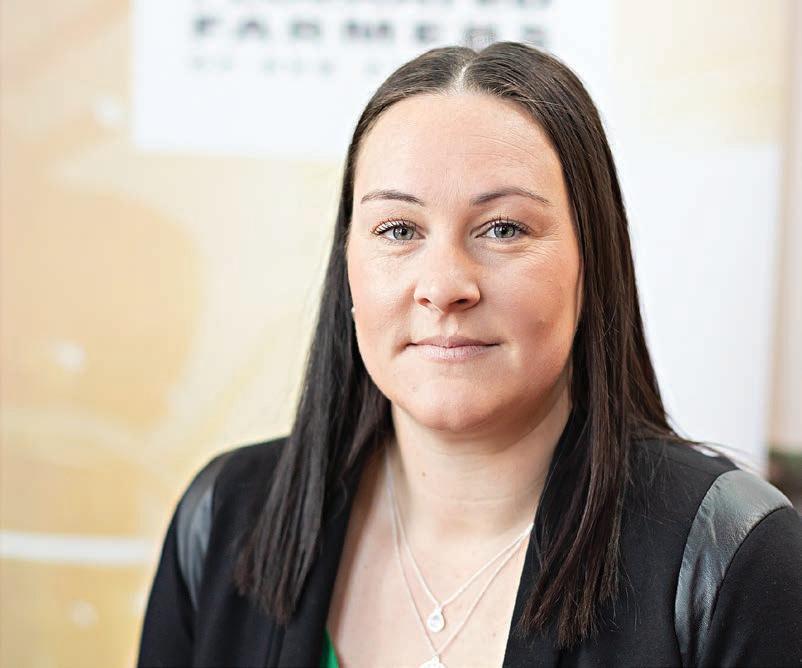
COP OUT: Bex Green says it’s not good enough for Canterbury Police to reduce rural officers, especially without first hearing from the communities that’ll be affected.
wrong direction. Rural New Zealand deserves so much better,” Green says.
“I’m also concerned for those police officers left covering larger areas, as that bigger workload could lead to their burnout.”
Waimate District Mayor Craig Rowley, a former police officer, has also criticised the move, saying “any reduction in service in our region is a large step backwards”.
Federated Farmers organised two public meetings last week to discuss the proposed cuts.
The meetings in Culverden and Leeston were about giving the community a chance to hear from Canterbury Police, Green says.
“Our community also needed a platform to raise our concerns, ask questions, and share their views about the proposed restructure.

“We brought people together because it’s important the community has a voice throughout this process.
“We also wanted police to front up, hear that frustration, and explain what these changes actually mean for the people who live here.”
Federated Farmers will be making a formal submission to Canterbury Police and is encouraging residents across North Canterbury to do the same.
“These meetings are just the start. Any cuts to rural policing are going to be met with fierce resistance. We’re fight this every step of the way,” Green says.
“Farmers and our rural communities deserve so much better than a one-size-fits-all policing model designed for the suburbs.”

Clock ticking on agrichem options
The Environmental Protection Authority must urgently prioritise the approval of safer, next-generation agrichemicals or risk crippling New Zealand’s primary industries, Federated Farmers arable chair David Birkett says.
Speaking on the Federated Farmers Podcast, Birkett said delays in registering new agrichemicals and bans on existing tools – such as those used to control grass grub – could cost farmers hugely if not addressed soon.
“With one key chemical already banned and another facing phaseout, farmers are at risk of being left without effective, affordable options,” Birkett says.
“In about a year’s time, we’ll be down to essentially one main chemical, and by 2028 we’re likely to have none.
“Grass grub is the largest pest we have in New Zealand and can take out nearly half a billion dollars from our combined industries.”
Chlorpyrifos, an important tool for controlling the pest, is being phased out over an 18-month window for targeted use.
But with limited supply of the active ingredient left, farmers may run out of product well before the deadline.
Meanwhile, the previous ban on diazinon – which also tackled grass grub – is due to take effect in 2028.
“We don’t want to have a gap where there are no tools available,” Birkett says.
“We know there are new products
CULPRIT: Grass grub is the largest pest we have in New Zealand and can take out nearly half a billion dollars from our combined industries, David Birkitt says.
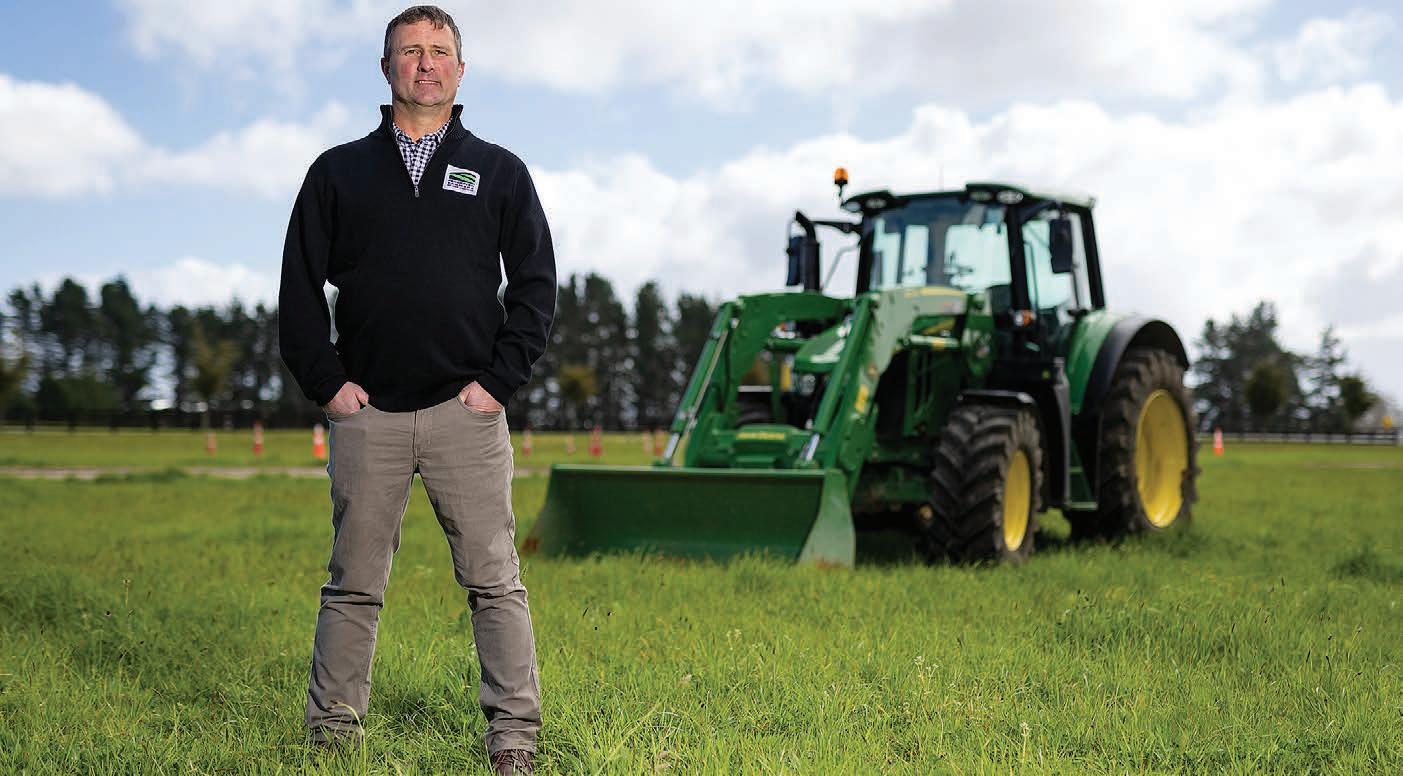
in the approval queue that could help, but we need the EPA to prioritise them now. It takes years to work through the process.”
The current backlog of agrichemical approvals is around four to five years long, and Birkett says that’s deterring major global companies from investing in the New Zealand market.
“The approvals process used to take one to two years, but it’s really stretched out now.
“Companies are looking at New Zealand and saying, ‘It’s too hard, it takes too long, and it’s not worth the return.’
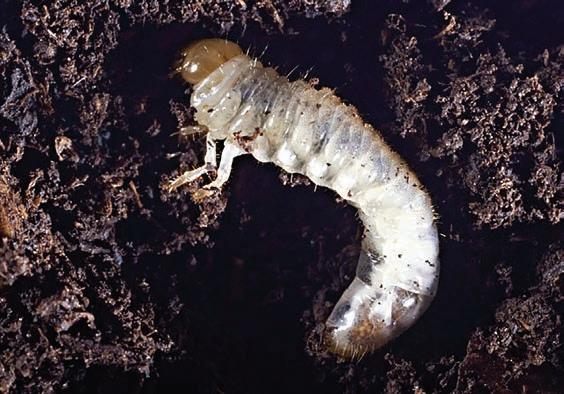
“That means we’re missing out on the safer, more effective tools being used overseas,” he says.
New Zealand, once a go-to location for chemical trials because of its opposite seasons, is now being overlooked.
Birkett says some of the newest chemistry for cereal crops isn’t even available here, putting Kiwi farmers at a competitive disadvantage.
“If I talk to an Aussie grower about fungicides now, they’re using ingredients I’ve never heard of.
“We’ve already fallen behind, but we can catch up – if the EPA and Government act fast.”
Federated Farmers is urging the EPA to develop a fair, transparent process for prioritising products that would bring the greatest benefit.
“The EPA’s current focus on reassessments of older chemicals is eating into capacity for processing new, safer products,” Birkett says.
“While those reassessments are important, they do not help farmers access modern alternatives. It’s those new chemicals that really matter.
“That’s where the gains are, both in terms of effectiveness and safety for
We’ve already fallen behind, but we can catch up – if the EPA and Government act fast.
David Birkett Federated Farmers arable chair
farmers and the environment.”
He acknowledges the EPA is engaging more regularly with industry and understands the urgency but says change can’t come fast enough.
A Government-commissioned review of the agrichemical approval system made 16 recommendations to speed up and modernise the process.
These have been accepted by Cabinet, and Federated Farmers wants to see them fully implemented – quickly.
Beyond that, Birkett wants the EPA to embrace science sharing with trusted international partners like Australia and Europe.
That means recognising overseas
MISSING OUT:
David Birkett says Kiwi farmers aren’t getting access to the safer, more effective agrichemicals being used overseas.
assessments, particularly on toxicity and human health, to reduce duplication and speed things up.
“Environmental impacts on native flora and fauna need to be assessed here, absolutely,” he says.
“But things like human safety and residue limits are pretty universal, and if they’ve been through rigorous testing overseas, we should be able to use that data.”
A recent Farmers Weekly poll found 80% of respondents wanted the Government to show more urgency in fixing the EPA’s processes. Birkett agrees.
“We’ve raised these concerns for years. We just want the recommendations from the review implemented quickly – and we want to know what’s being done to ensure we don’t run out of tools for grass grub.
“We’re not asking for shortcuts. We’re asking for a fair, science-based, efficient system that recognises the real on-farm impact of delays.
“If we get that, New Zealand farmers can continue to compete globally and protect their land responsibly.”


More funding welcome, but not enough to stop wildings
Federated Farmers says another $3 million for wilding pines control is very welcome – but falls well short of what’s needed.
“New Zealand’s iconic landscapes are under threat, and the battle against wilding conifers is being lost,” Feds pest animal and weed spokesperson Richard Dawkins says.
“It’s not an exaggeration to call this an ecological crisis. It’s a ticking time bomb that’s about to blow.”
The Government collects $100 each from most international visitors arriving in New Zealand.
Last week it was announced $3 million over three years of this International Visitor Levy (IVL) revenue will go to the National Wilding Conifer Control Programme, in particular for work in the Molesworth and Mackenzie Basin areas.
This boost comes on top of $3.35 million of IVL revenue over three years dedicated earlier this year to wilding control work in Canterbury, Marlborough, Otago and on Rangitoto Island in the Hauraki Gulf.
“We’re grateful for the support, but let’s be clear: this level of funding won’t shift the dial. We need enduring, cross-party funding but also a smarter, more strategic response,” Dawkins says.
“Tourists come here for our iconic scenery, yet in too many districts wilding conifers are overrunning productive land and native biodiversity.”
Community-led groups like the South Marlborough Landscape Restoration Trust and Mackenzie Wilding Trust do exceptional work.
However, the scale of the challenge far exceeds the current funding available.
New tactics are required, Dawkins says.
Crown pastoral leases lost through tenure review have seen large areas completely overrun with weeds and pests.
At the same time, grazing concessions on public conservation land are difficult and expensive to obtain.
“Without active land use, these areas turn into breeding grounds for wilding pines and TB-carrying pests, threatening neighbouring farms and conservation efforts,” Dawkins says.
“Putting farmers back on the land means those with the most at stake are managing weeds and pests, while also supporting export revenue and local jobs.”
New Zealand’s iconic landscapes are under threat, and the battle against wilding conifers is being lost.
Richard Dawkins Federated Farmers pest animal and weed spokesperson
Dawkins says one of the most significant wilding conifer seed sources in the country, in Marlborough’s Branch and Leatham river catchments, is expected to cost more than $150 million to control.
“That’s just one site, and it’s a seed source for the wider south Marlborough region.
Brand new homes, conveniently delivered
No trades to coordinate. No weather delays. Just a beautifully finished Lockwood home delivered to your rural property Building new couldn’t be easier!
Contact us today!
Phone 0508 562 596 Email info@lockwood.co.nz

GRAZING RETURN: A more strategic and enduring response to the wilding pine threat should include getting low impact grazing back on crown and public conservation land, Richard Dawkins says.
“The area was originally aerially seeded with conifers by the Crown for soil management, with a promise to address any unintended consequences.
“Some funding has been allocated over the years, but it’s been patchy and nowhere near enough to tackle the problem properly.”
Since 2016, governments have spent $150 million on wilding pine control, with another $33 million from landowners and communities.
“But without sustained effort and fresh thinking, we risk all that going backwards.” Dawkins says.
“We’re not trying to sound ungrateful, but the current approach - small, ad hoc funding rounds outside normal budgeting – feels like a lolly scramble.
“It makes long-term planning and prioritisation incredibly difficult.”
Two-thirds of critical work has been deferred since the 2023/24 financial year because of a big drop in funding for the national programme.
“This means we’re quickly losing ground across the country in areas affected by wilding pines, and control costs are increasing exponentially,” Dawkins says.
Base funding for the national control programme is $10 million yearly.
Wilding Pine Network chair Richard Bowman estimates $25 million a year for the next decade is needed to reduce wilding pines enough to a level where private and Crown landowners can get on top of the rest.
Dawkins says the wilding pine problem sits squarely within Federated Farmers’ Save Our Sheep campaign, which calls for urgent action on weed and pest control, and expanded access to high-country grazing.
“We also welcomed the announcement in June of $7.45 million for invasive coastal weed control and weed detection software.
“That’s good news, but we also need to boost council biosecurity teams. They’re under-resourced and fighting on too many fronts,” Dawkins says.
“If we’re serious about protecting our environment and rural economy, we need long-term thinking and practical policy - not just short-term funding rounds.”
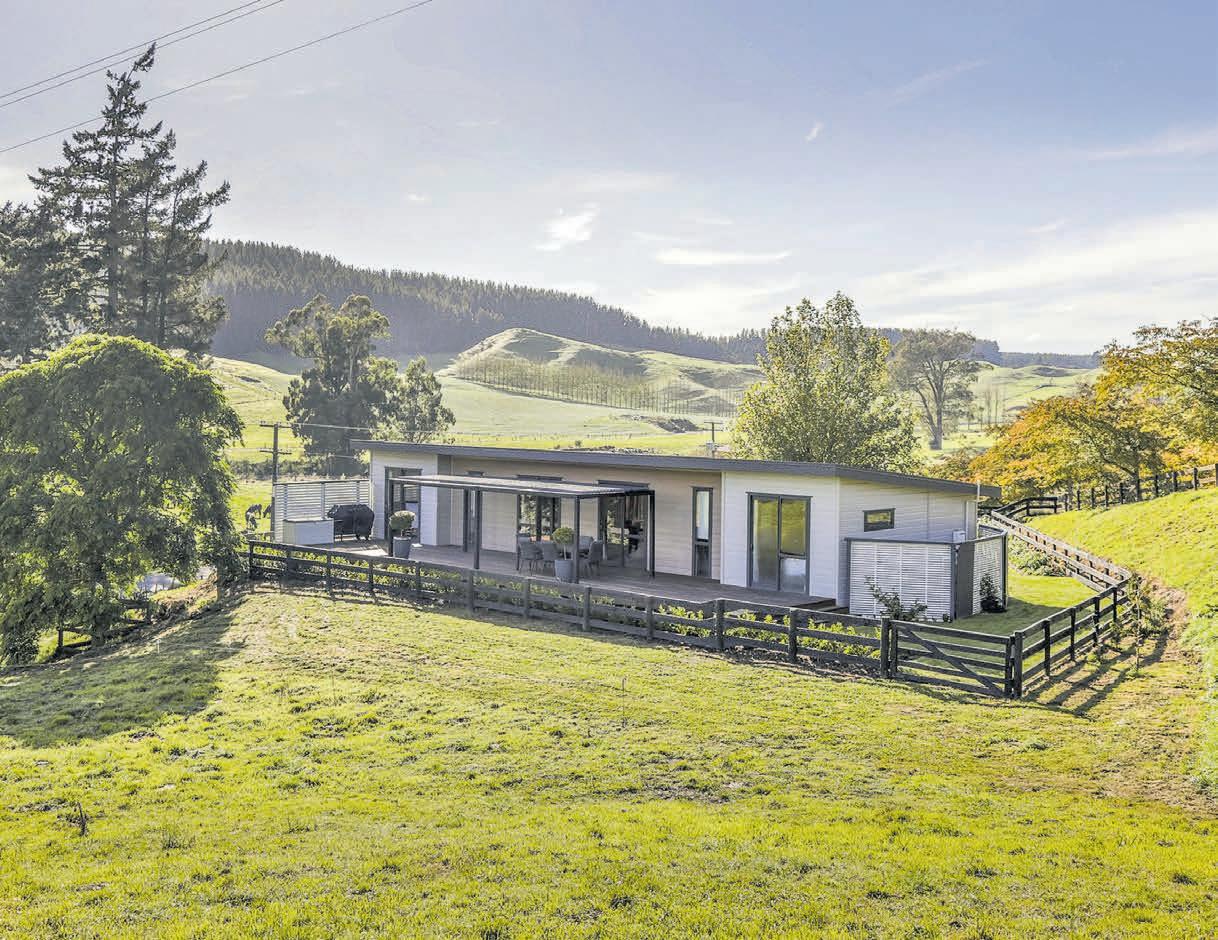
Fighting the good fight on arable returns
Sonia Dillon says returns for New Zealand’s arable farmers are in crisis, but there’s no way she’s giving up on fighting for better times.
“There’s really been no change in arable returns for the last 20 years.
“We’re tied to the fortunes of the dairy industry, but when dairy is winning arable isn’t necessarily because we’re in competition with international trade commodities.”
Dillon, recently named Federated Farmers’ 2025 Arable Advocate of the Year, says a combination of factors compound against arable growers to make it tough.
“There are lot of broken bits that I’d love to see fixed.
“Honestly, I don’t know what all the answers are, but I love being part of the industry, and I love the people in it.”
Almost all the grain produced on New Zealand farms goes to merchants, and the big players here are international corporations.
“New Zealand could build up to being self-sufficient in milling wheat for bread, flour and the like but we’re a nation that trades globally and
argues strongly for free trade,” Dillon says.
“If local arable growers try and ask for a higher price for what they produce, merchants can just say ‘no, we’ll get it out of Australia’.”
Arable farming has its issues but it’s also a crucial support for pastoral systems and an earner for New Zealand.
Sonia Dillon Federated Farmers Arable Advocate of the Year
Likewise, Kiwi arable farms produce high-quality grain feed for the dairy industry but PKE and other imports keep returns in check.
Even with dairy getting their highest prices in years, it’s not spilling over into more realistic returns for arable growers, Dillon says.
“Some farmers are their own worst enemy and don’t fight for better prices. Often it’s because they’ve
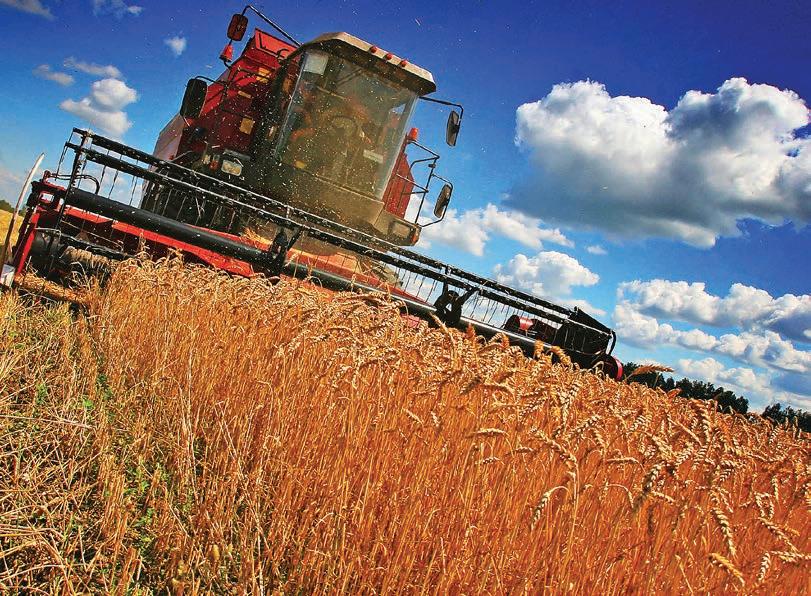
got other revenue streams and it’s not that big a deal for them to push harder for a decent price for the 50 tonne or whatever they produce.”
That can lower the benchmark for the wider industry.
“Milling wheat should be a premium market for growers but often there isn’t the margin between growing milling wheat and feed wheat there should be.”
Dillon and husband Mark are proud fifth-generation Southland farmers but, like fellow growers in the deep south, they grapple with higher freight costs.
Getting product to Canterbury can add $100 a tonne to Southlanders’ costs but for bigger players moving trucks all over the South Island, back haul cartage into Southland isn’t so critical.
Federated Farmers Arable chair David Birkett says Dillon is outstanding in her advocacy on such issues and is a great asset on the Arable Council.
“She’s always happy to bring challenging issues to the forefront, so the council can look for solutions.”
Dillon is not alone in concern about subdued arable returns.
While the July Federated Farmers Confidence Survey shows high levels of optimism among sheep, beef and dairy farmers over economic conditions and profitability, confidence is noticeably lower in arable.
Just 17% of arable farm survey respondents described current economic conditions as good against an average for all farmers of 44%.
Just on 40% of arable farmers said they were making a profit and 29% making a loss versus the same findings for meat and wool farmers of 57% and 13%. Dairy farm profitability findings were even higher.
Dillon says to prosper, arable
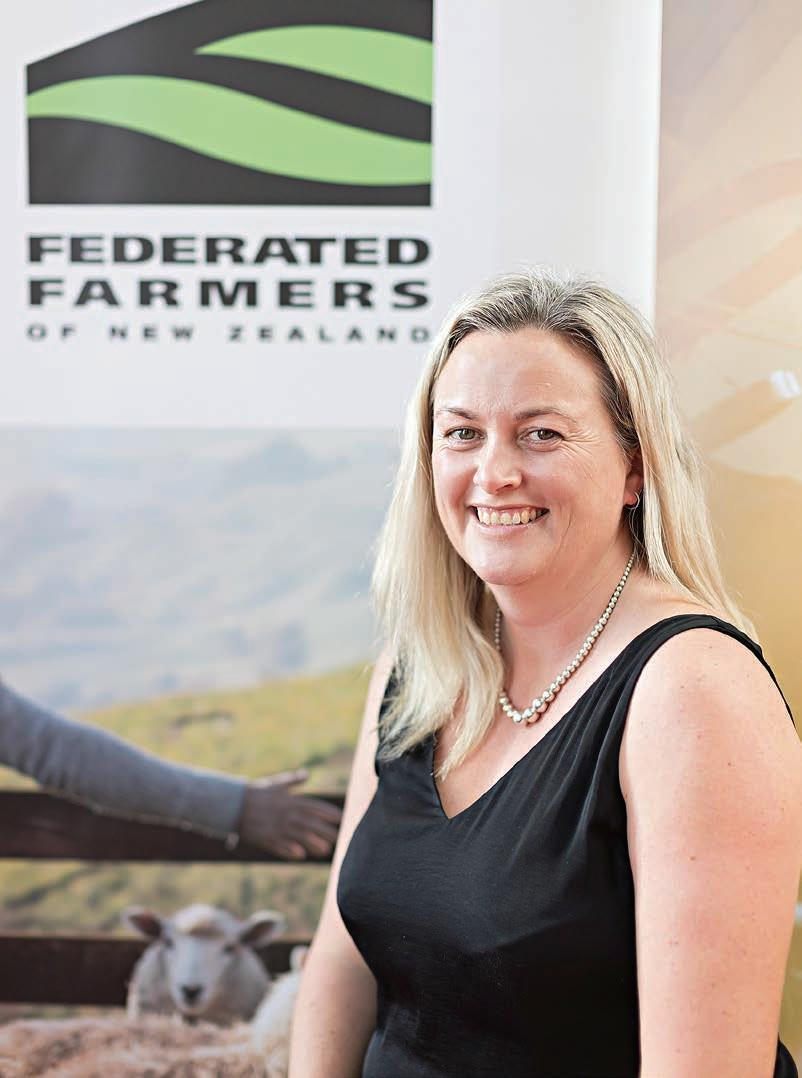
farmers look to innovation and different ways of doing things.
“Mark and I supply processed grain ready to go into dairy systems to make the most from what we can control.
“We invested in a truck with an augur system. We can crush grain at our plant on farm, blend it with whatever imports the dairy farmer wants, then deliver it into the feed silo at their shed.
“Not everyone can do that but it’s an example of chasing a better return on everything you can.”
The Dillons have two farms at Riversdale totalling about 500ha, and lease a similar amount of land.
They mostly grow barley and wheat, with smaller amounts of oats, and also grow grass and fodder beet for winter grazing.
They run a few hundred lambs
over the grain paddocks in winter, and around 1000 head of cattle.
“On the contracting side, with our beet harvester we lift beet on farms from Patearoa all the way down to Tuatapere.”
With raising three kids as well, Sonia and Mark’s diaries are full.
“It does need a fair bit of coordination. I’m trying to get Mark to go digital so he can see what my diary is before he makes outside commitments!”
Dillon has a degree in microbiology and genetics at Otago University and worked as a secondary school teacher.
But farming is in her blood.
“Arable farming has its issues but it’s also a crucial support for pastoral systems and an earner for New Zealand. I’ll keep fighting the good fight.”
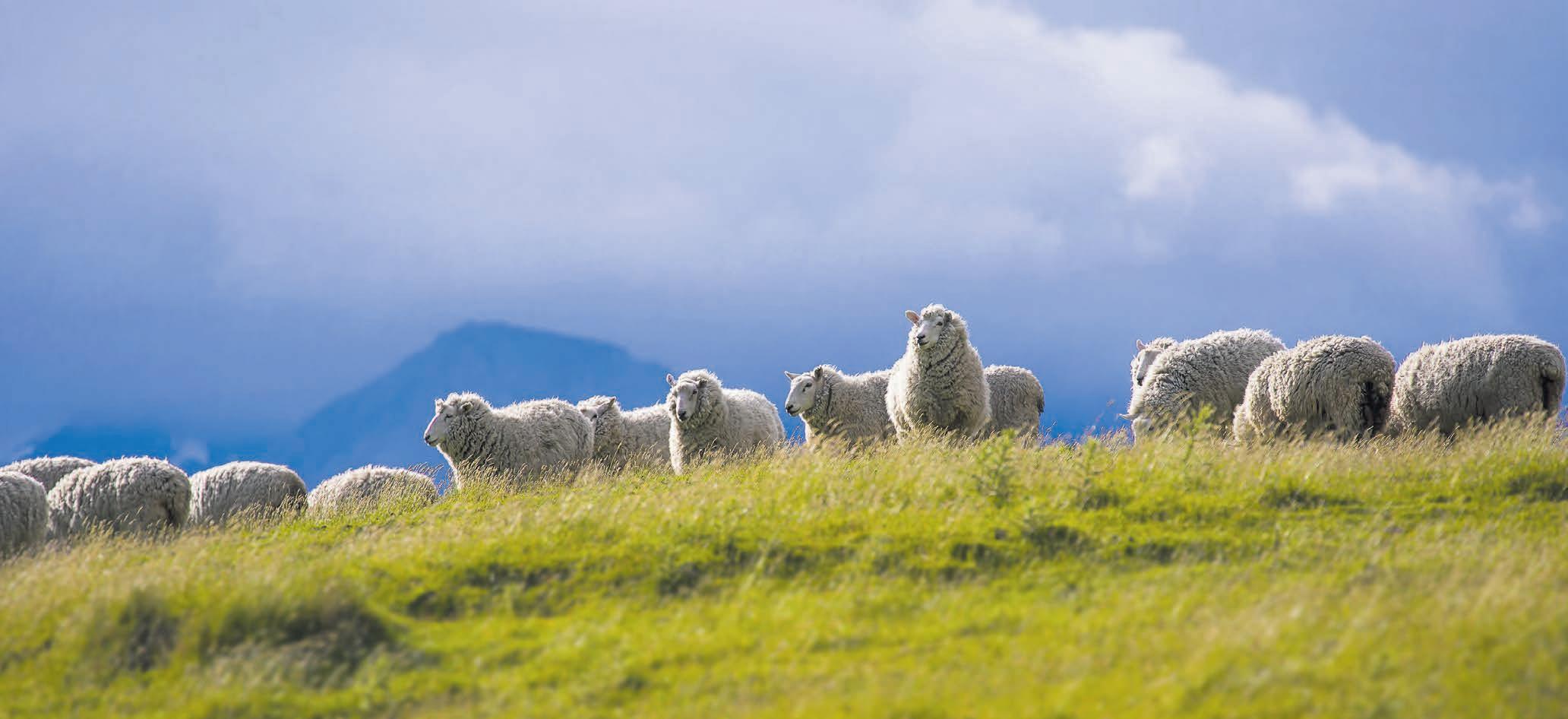
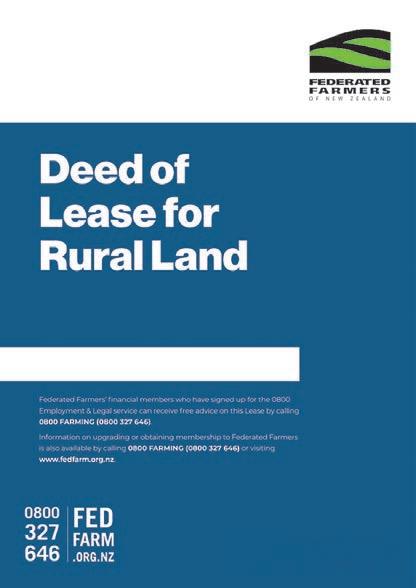

EVOLUTION: Sonia Dillon says growers are looking to innovation and different ways of doing things to survive in an era of poor arable returns.
BUY LOCAL: Kiwi arable farms produce high-quality grain feed for the dairy industry but PKE and other imports keep returns in check.
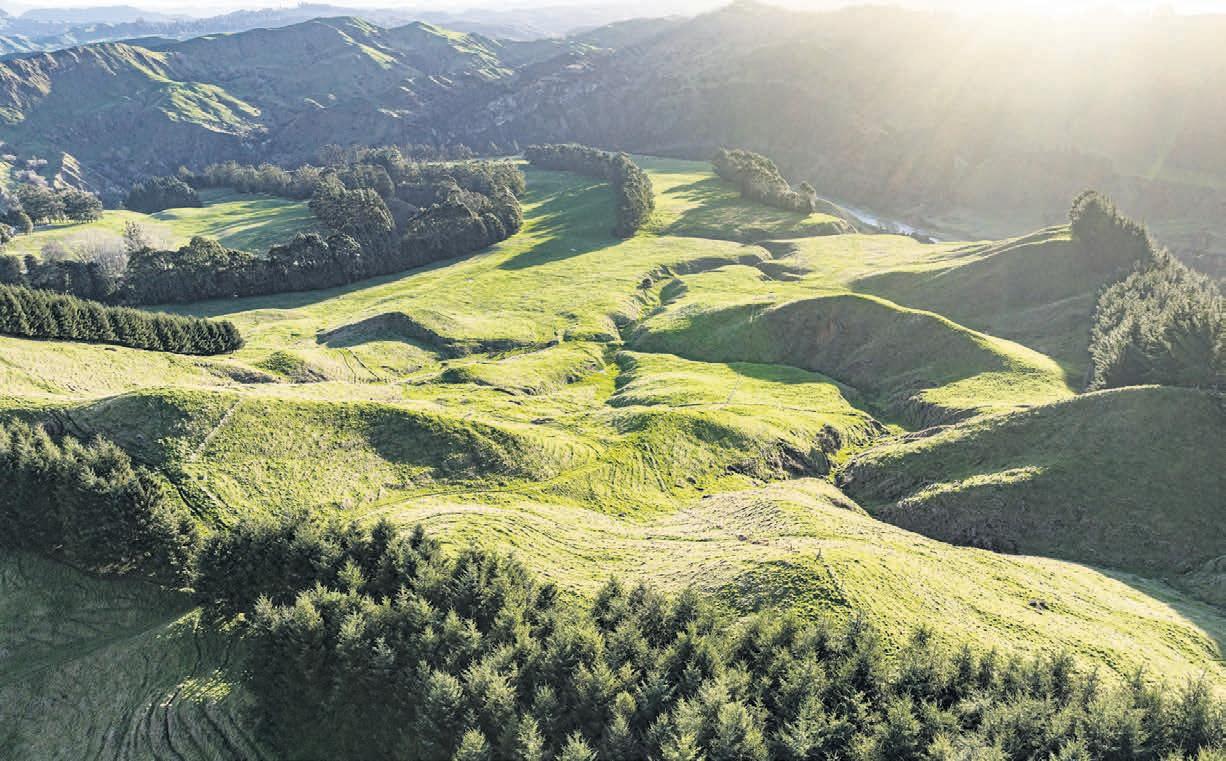
Multi income generating piece of paradise
Nestled on the banks of the majestic Mohaka River, just 10km off the Napier Taupo Highway, you get it all in the one package - accommodation, hunting, fishing, carbon and farming! ‘Nirvana’, is 282ha in two titles (options to purchase either title), a fantastic retreat that has to be seen to be believed. Located approximately 60km from Hawke’s Bay Airport, 98km from Taupo or an easy helicopter flight from either. Features of the property include an off grid ‘Fisherman’s Cabin’ overlooking the Mohaka River, renovated shearers’ quarters that sleeps twenty, a tidy three bedroom home, four bay implement shed with car hoist, outbuildings, and 65ha of Pinus radiata, Douglas fir and manuka registered in the ETS. 172ha of effective grazing land is predominantly flat to easy, has been farmed regeneratively and is fully reticulated. An abundance of wildlife includes red deer and trout. bayleys.co.nz/2854063
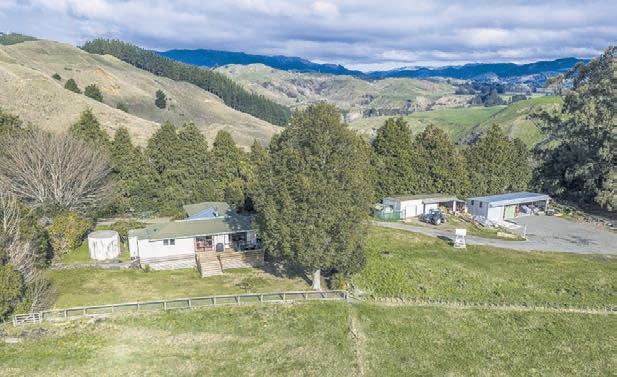
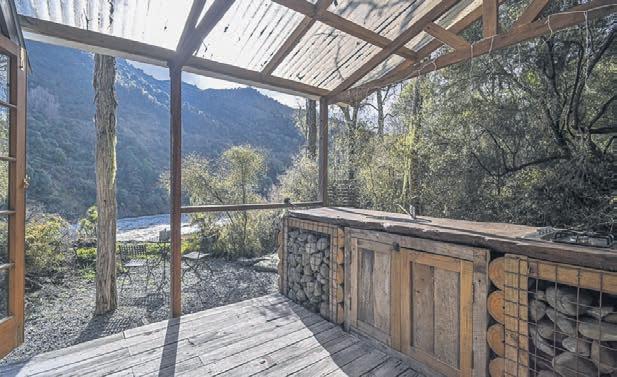
Closing 4pm, Wed 27 Aug 2025 15 Havelock Road, Havelock North View by appointment Tony Rasmussen 027 429 2253 tony.rasmussen@bayleys.co.nz Chris Heenan 027 599 3527 chris.heenan@bayleys.co.nz EASTERN

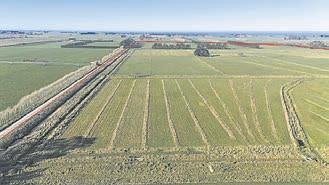
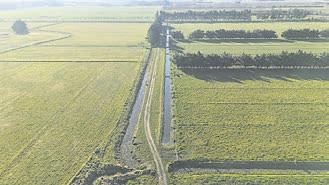
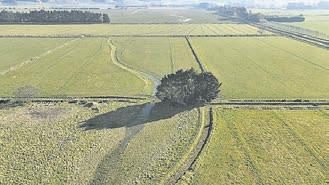

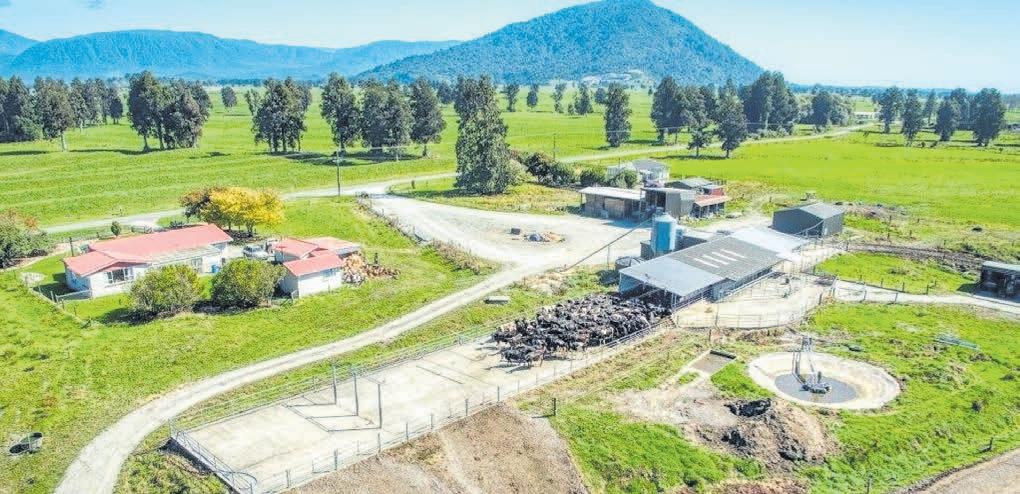

Located

Approx 255ha effective coastal property. 3-year average 152,798kgs MS. Calving 530 this season. 2 x 3-bedroom dwellings. 30-aside cow shed, rectangular yard, good complement of farm buildings. Winter off-farm. Coastal location within 30 minutes of Greymouth. PRICE BY NEGOTIATION WITH OFFERS BEING SOUGHT On Account Barrytown Farms, 3067 State Highway 6, Barrytown
from Hokitika. Approx 190 ha effective, milking 310 cows with production last season of 145,082kgs MS all stock carried on farm. 40 A/S Cowshed, Read plant and meal feeders. Good compliment farm buildings. 3-bedroom Summerhill stone homestead. Self-cont sleep out Additional 3-bedroom cottage Excellent mid-range opportunity in sought after traditional dairying valley, available
Te Haroto 1015 Waitara Road

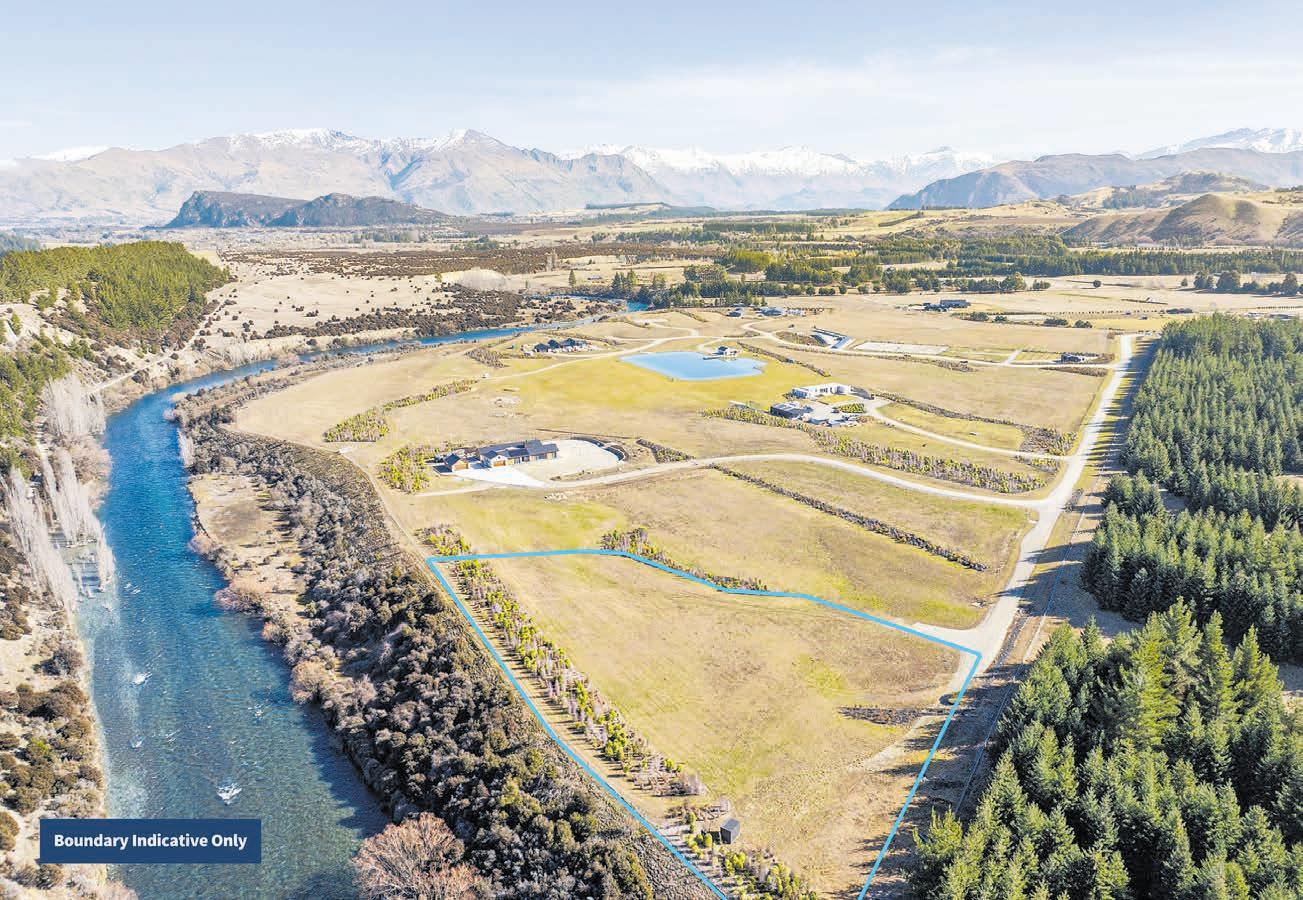
Wanaka 150 Fowler Lane
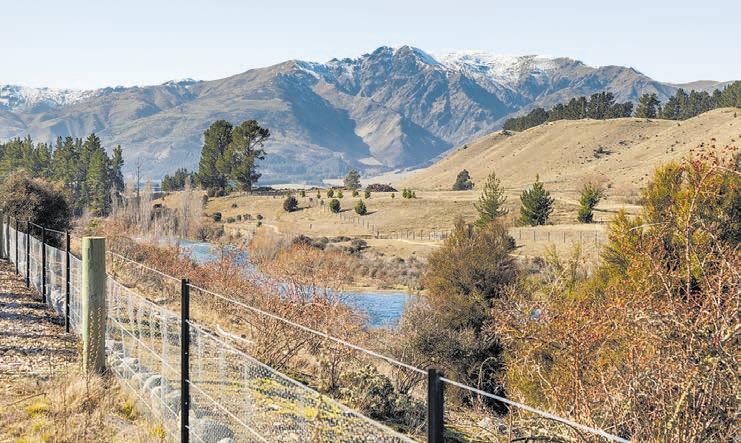



1.1853 hectare | For Sale $1,950,000
Priced at $1 95M with a rateable value of $2.25M, this is your chance to secure premium land at exceptional value
Tucked beside the Hawea River with views to Treble Cone, this rare offering delivers something truly special – a 1 1853ha sun-drenched titled site, ready for your dream home or holiday retreat. Part of an exclusive boutique development designed for lifestyle and legacy, with shared access to 19ha of community land Enjoy a dip in the private lake, host friends at the lakefront pavilion with BBQ and gym, or unwind as the river flows below Equestrian facilities, a solar farm, and plans for a tennis court and golf green complete the vision Just a short drive to the vibrant energy of Wanaka's town centre and surrounded by lakes, rivers, and mountains - this is where your next chapter begins.




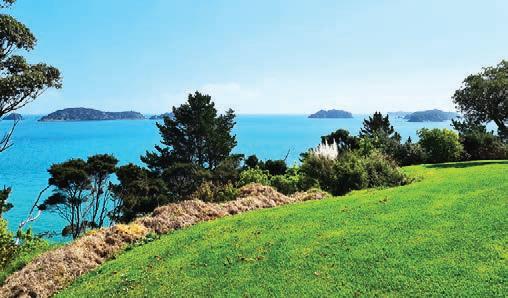




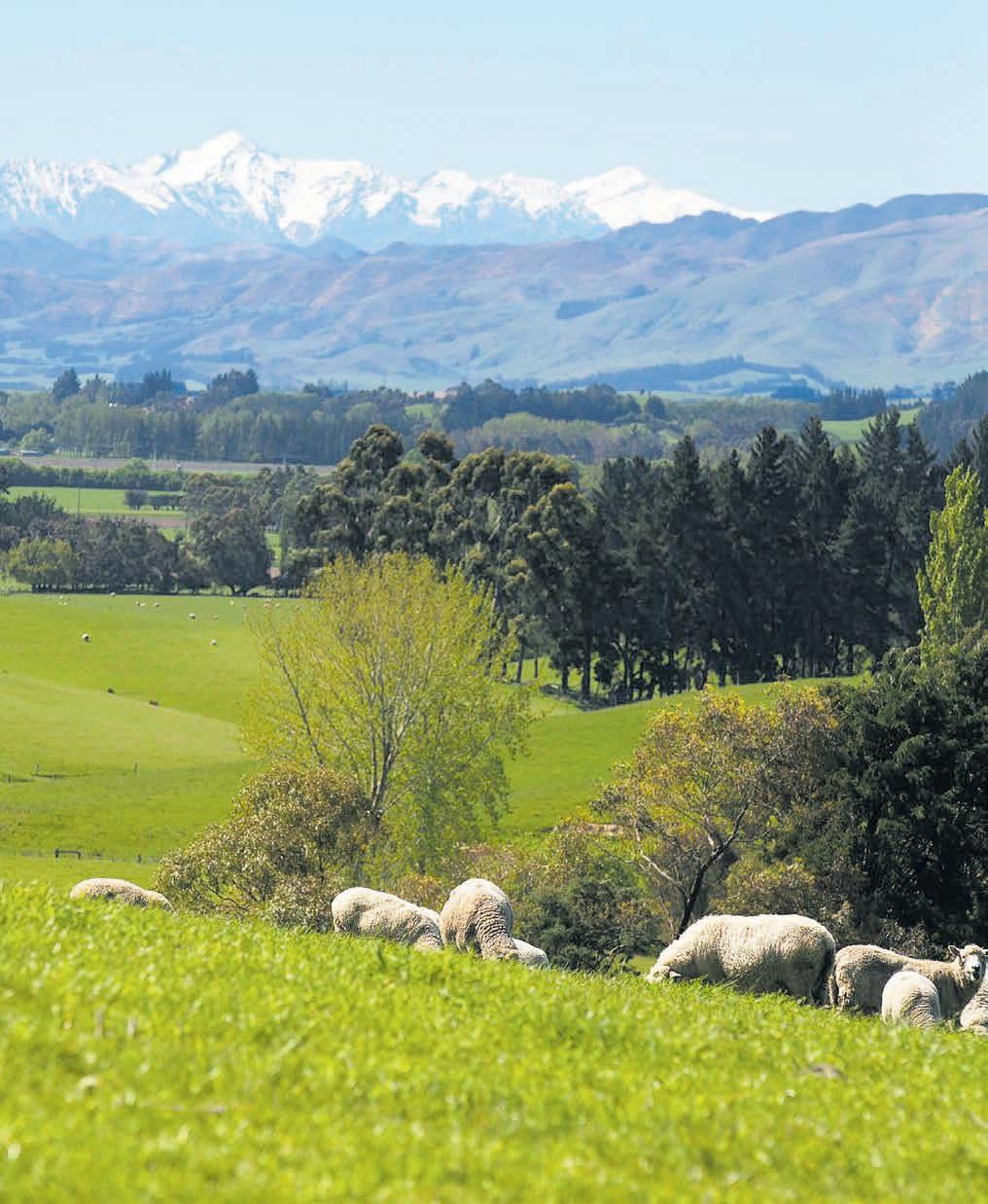

Tr y FastFencer and FastFencer Jr for quality and precision

reliable, and built to handle

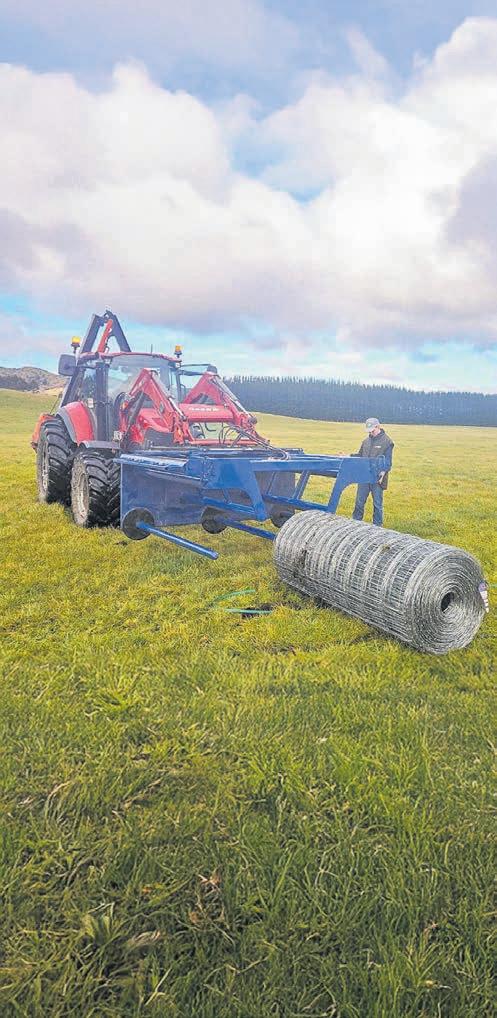

UNITED WHEATGROWERS
NZ LTD
Annual General Meeting, Electoral Committee Meeting & Wheat Awards Tuesday, 26th August 2025
Commencing at 1:30 PM
Hotel Ashburton, 11/35 Racecourse Rd, Allenton, Ashburton 7700
The Chairman and Directors of United Wheatgrowers (NZ) Ltd warmly invite all wheat growers to attend the Annual General Meeting and Electoral Committee Meeting.
• 1:30pm: AGM and Electoral Committee Meeting (concludes approx. 3:00 PM)
• 3:30pm: Herbage Seed Meeting
• Evening: Wheat Awards Presentation and Dinner
This is a valuable opportunity to stay informed, participate in key decisions, and connect with fellow growers.
All wheat growers are strongly encouraged to attend.

KID NEW ZEALAND –WAIKATO’S RURAL SOLAR SPECIALISTS
• SEANZ Accredited Installer
• Options to carry 1, 2 or 3 rolls
• Available in 1300mm & 2100mm height
• Carries 500-metre rolls with ease
• Hydraulic lift standard, no more lifting Call 02 2636 1191 Visit: www.quikfence.co.nz
• Tailored Solar Systems for Dairy, Livestock & Cropping Farms
• Battery Storage & EV Charging options
• Expert local support – from design to installation
0% INTEREST ASB SMART SOLAR LOAN
Flail Mower
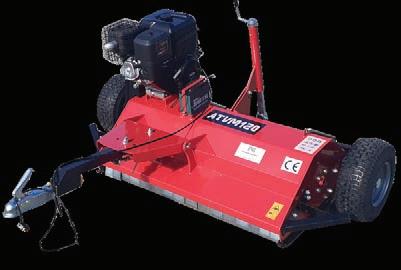


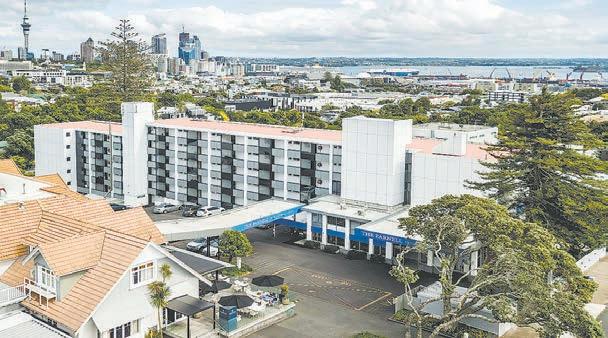







Available now for ASB Rural customers –make the switch with no upfront cost!
021 728 099

Notice of 2025 Elections
• DairyNZ Board of Directors



• DairyNZ Directors’ Remuneration Committee
Invitation for 2025 candidate nominations - four positions available
• Two farmer directors for the Board of DairyNZ Incorporated
• Two members for the DairyNZ Directors’ Remuneration Committee
Current levy-paying dairy farmer who are also members* of DairyNZ Inc are now invited to nominate candidates to fill these four positions
All farmers paying a levy on milksolids to DairyNZ and who are members of DairyNZ Inc are eligible to stand for election An information pack outlining desired criteria and nomination requirements for the positions can be obtained from the Returning Officer
Nominations must be received by the Returning Officer by 12 noon on Wednesday, 27 August 2025
Elections
If more than the required nominations are received, a voting process will be carried out by postal voting using the STV (single transferable vote) voting method Votes will be weighted by annual milksolids based on 2024/25 dairy season ended 31 May 2025 Voting credentials will be posted to all members on 2 October, with voting closing at noon on Tuesday, 4 November 2025. The DairyNZ Annual Meeting will be held on Thursday, 6 November 2025 Election results will be announced at the meeting
For further details contact the Returning Officer below
Anthony Morton
Returning Officer – DairyNZ Incorporated 0800 666 935 iro@electionz.com
* At the Annual Meeting held on

CRUTCHING TRAILERS








FORESTRY
NEW ZEALAND NATIVE TIMBER SUPPLIERS (WGTN) LIMITED 027 688 2954 Richard.
GOATS WANTED
FERAL GOATS WANTED. Pick-up within 24 hours. Prices based on works schedule. Phone Vicky Le Feuvre 07 893 8916 or 027 363 2932.
GOATS WANTED. All weights. All breeds. Prompt service. Payment on pick up. My on farm prices will not be beaten. Phone David Hutchings 07 895 8845 or 0274 519 249. Feral goats mustered on a 50/50 share basis.
HORTICULTURE
NZ KELP. FRESH, wild ocean harvested giant kelp. The world’s richest source of natural iodine. Dried and milled for use in agriculture and horticulture. Growth promotant / stock health food. As seen on Country Calendar. Orders to: 03 322 6115 or info@nzkelp.co.nz
ALONE IS NO FUN. Join our community of people seeking friendship and love! Connect via personal phone calls, not a computer. City/Rural & Outback members of all ages (seniors welcome) Call 0800 315 311 to make contact today! PERSONAL
HORSES FOR SALE
BLACK MARE. 4 years old. 15hh. Quiet to float, feet. Has been ridden. No vises. Comes with covers. $1600 Phone 06 328 8893.
PUMPS
HIGH PRESSURE WATER PUMPS, suitable on high headlifts. Low energy usage for single/3-phase motors, waterwheel and turbine drives. Low maintenance costs and easy to service. Enquiries phone 04 526 4415, email sales@hydra-cell.co.nz
RAMS FOR SALE
WILTSHIRES-ARVIDSON. Self shearing sheep. No1 for Facial Eczema. David 027 2771 556.
TRAVEL
INDIA & SRI-LANKA package tours. Visit www. maharajahtours.co.nz or email india@xtra.co.nz or call Craig on 021 193 0091 for details.
TREES FOR FARMS
ADDITIONAL INCOME.
Stock shelter, erosion control, Truffle income, animal fodder, fireproof cork and Natives. 021garden.co.nz Litherland Truffles 021 327 637.
WANTED TO BUY
WHAT’S SITTING IN your barn? Ford, Ferguson, Hitachi, Komatsu, JD. Be it an excavator, loader or tractor, wherever it is in NZ. Don’t let it rust. We may trade in and return you a brand new bucket for your digger or cash for your pocket. Email admin@loaderparts.co.nz or phone Colin 0274 426 936.

Junior Multimedia Journalist
If you have a passion for farming or rural New Zealand, then this role might just be what you’re looking for.
Farmers Weekly NZ has a great opportunity for a junior multimedia journalist.
As a key member of our digital editorial team, you’ll find exciting and new ways to tell stories in the digital space, by creating content for various media, including articles, images, video, and audio (podcasts, interviews) that upholds our commitment to quality, accuracy, and trustworthiness.
You’ll have the opportunity to work alongside some veteran ag journalists, while also carving out a name for yourself in the digital media space.
About you:
• You’ll have recent and relevant newsroom experience (ideally 1-2 years) or relevant qualifications.
• Have an interest in the food and fibre sector, or willingness to learn.
• Possess technical skills to shoot video, take high-quality images and a good understanding of using social media to tell stories – strongly desired, but there’ll also be opportunities to learn on the job.
Able to craft compelling narratives using different media formats to engage audiences.
Your attributes and talents will include high-quality research and writing skills. You will have a positive attitude, strong communication skills, be flexible and adaptable, and have the ability to switch between different tasks and media formats as needed.
Location: Head office – Feilding (ideally for first 12 months).
We invite you to register your interest and request a job description and application form now by emailing hr@agrihq.co.nz
Closing date for completed applications –5pm Friday 22 August.



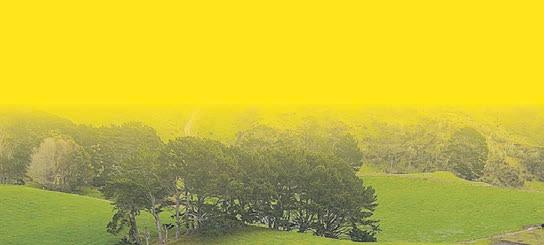
120 YEARLING ANGUS BULLS at our Annual On Farm Sale and Hybrid Auction


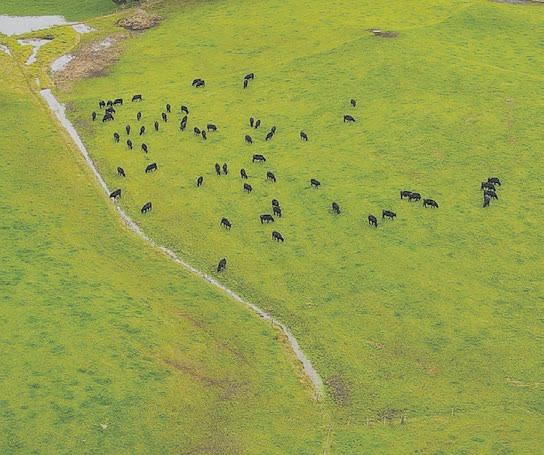
2nd Sept 2025, at 12pm
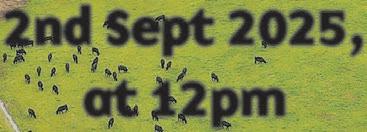
Chris & Karren Biddles, RD1, Te Kopuru, Northland P: 09 439 1589 m: 021 795 929 e: chris@teatarangi co nz
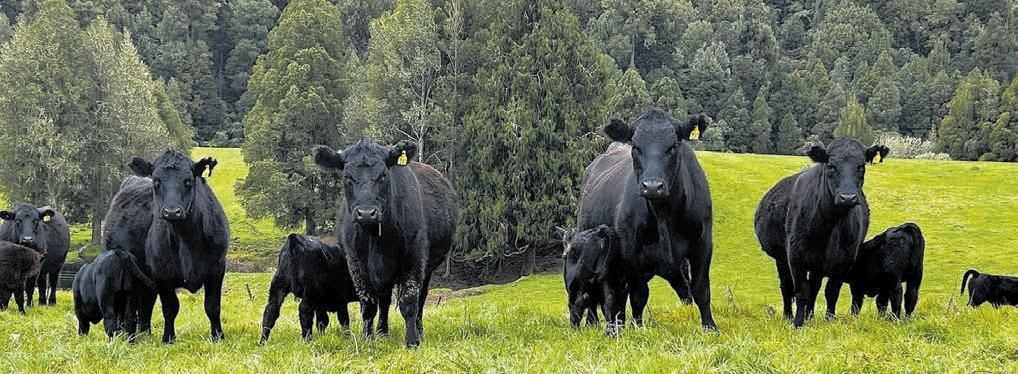

to be returned to normal life, and this is his final check.
The doctor asks him a simple question: “What would happen if I cut off your left ear?”
The patient responds, “Well sir, I suppose my hearing would be much worse.”
The doctor seems please, checks a box, and asks: “and if I were to cut off both your ears?”
The patient replies, “well sir, then my vison would be totally gone!”
The doctor shakes his head sadly and orders the patient be returned to his ward, to be reassessed in a year’s time. Year after year, the doctor and the man met, and year after year the same questions and the same answers, until one day, the doctor, overcome with curiosity, asks the man: “Why? You know why we are here, you know that if you just tell me what I want to hear you’ll be free to go, so why do you insist that your ears have anything to do with your vision??”
“Very simple,” the man replies. “If you cut off both my ears, my hat would fall down and cover my eyes!”
Spring Bull Sales Preview
Spring in step of bulls and their breeders

Hugh Stringleman NEWS Livestock
SPRING bull sales are shaping up to be exciting times for bull breeders as positive indicators all point to a lift in prices.
High beef and calf prices, a record milk payout, loss of hill country to trees and the swing away from bobby calves to dairybeef production are all stoking the bull market and lifting auction expectations.
PGG Wrightson’s national genetics manager, Callum Stewart, said the yearling bull market is very different from the autumn two-year bull market.
“Given the record milk payout and the strong beef schedule, you would expect the yearling bull auctions to tick along nicely,” he said.
“We won’t see the increased prices of the two-year-olds being repeated but they should be higher than last year, where the average price was around $4000.”
Breeders who produce the qualities wanted by dairy farmers for dairy-beef, namely ease of calving and high growth rates, will do well.
Demand will also be present from beef farmers wanting yearling beef bulls to put over heifers, where conformation and EBVs will carry more weight.
Stewart acknowledged the new products provided by the genetics companies, including sexed semen and a selection of proven beef breeds, but said dairy farmers will still want follow-up bulls with the right characteristics.
“I view the sexed semen and cow collars positively, as farmers sharpen up mating management and farm costs, but they will still require beef bulls.
“Let’s get them out there and get them working,” he said.
PGG Wrightson’s auctioneer in the north, Cam Heggie, said the
yearling bulls are looking good considering the hard summer in Waikato, King Country and further north.
“The prices are going to be up on last year, but we just don’t know by how much.”
The east coast sales in late June had complete clearances so perhaps there was a shortage of bulls.
“Will unsatisfied demand for the older bulls flow on to the yearlings – I don’t know yet, but it is possible.”
Dairy-beef demand is building, with up to $1000 being paid for 100-day calves, providing a powerful incentive to buy the right genetics.
NZ Farmers Livestock’s Waikato agent Brent Bougen said the feeder calf markets are fizzing and the beef schedule underpins bull prices.
Demand is building from dairy farmers for dairy-beef bulls over surplus cows, and Charolais, Simmentals, Speckle Parks, Herefords and Angus are all popular sources.
Bougen thinks yearling bull offerings in Taranaki, King Country and Waikato will be similar to past years, along with one or two new breeders, as older
bulls have been sent for slaughter.
“Bigger yearling bulls will sell very well – those big enough to serve this spring.”
Northland breeder Chris Biddles at Te Atarangi Angus, Pouto Peninsula, said the positive factors for beef farming are the strongest he has seen in over 50 years and that sentiment must feed into higher prices paid for bulls.
“The dairy farmers who buy our yearling bulls are looking for performance, and money is secondary, and that is why they come back each year.
“They want bulls that enable them to sleep easy at night during calving.”
A former Angus Association councillor and multiple Steak of Origin winner, Biddles watched the increased prices for two-year-old bulls this year with great interest but doesn’t think the average lift for yearlings will be quite as high.
He will offer over 120 yearling bulls on September 2.
Herefords have a traditional place in producing white-face offspring but that position is being strongly challenged by other breeds, according to Morrison Farming Ezicalve principal Will Morrison, Marton.
He welcomed the prospect of

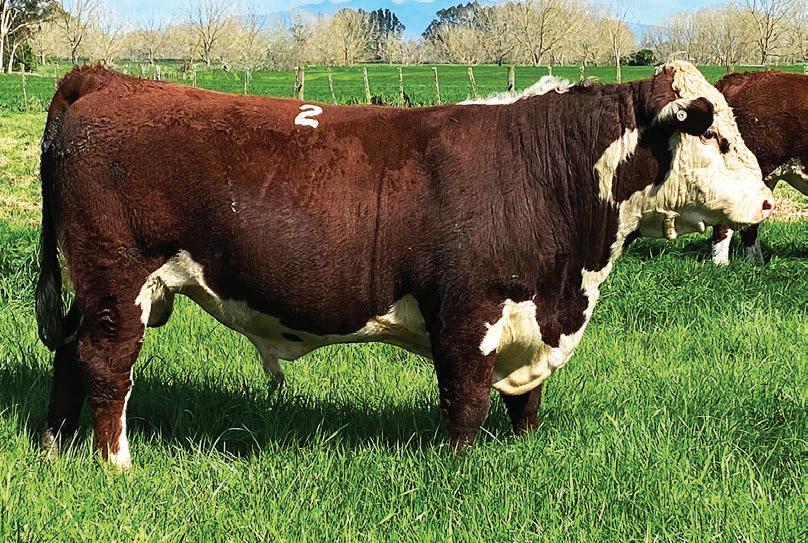
PACE-SETTER: Colraine Washington 23 421 set a breed price record of $37,000 for yearling Hereford bulls last spring.
higher bull prices but that must be sustainable, and not at the expense of rearers and finishers in the value chain.
He thought $3500 to $4000 would be that sustainable price level, being realistic and not scaring off any buyers.
Dairy farmers are turning to dairy-beef with greater purpose, judging by the prices being paid for calves.
“The calf market is strong, the beef schedule is strong, and the outlook for two years is good, so all the indicators are there,” Morrison said.
Genetics company co-founder and Waikato dairy farmer Ben Watson said the sale of specialised dairy-beef semen is being facilitated by cow collars and sexed semen for replacements.
“It is hard to tell whether that means less demand for follow-up beef bulls and it will be regionally different.
“Beef processors are conducting a procurement war and trees have replaced some herds, so that is fuelling dairy-beef production.
“Last autumn weaner numbers in the saleyards were down 28%, so that means fewer cows were mated, but the tide will be turning now.”
GENEZ company builds relationships with elite beef semen suitable for low genetic merit dairy cows, dairy farmers, calf rearers and finishers and the meat companies that want tagged traceability in premium beef.
South Island vendor James Fraser, Stern Angus at Pleasant Point, said the outlook for beef farmers and bull purchasers is exciting and better than this time last year. In the 2024 spring sale Stern averaged $6300 and had a top price of $15,000.
“Dairy farmers also can see premiums being made for beefcross calves from their nonreplacement cows.
“They will be looking for calving ease, low birth weights and super growth rates.”
Up to 20% of Stern’s yearling bulls are bought by dairy farmers. Fifty will go under the hammer on October 8, plus paddock purchases. Fraser also mentioned the underpinning slaughter value of two-year-old bulls, at around $3000, as a sort of floor price at auction.
“When you are stud stock producers selling at auction, you can’t have market expectations –but the fundamentals are strong.”
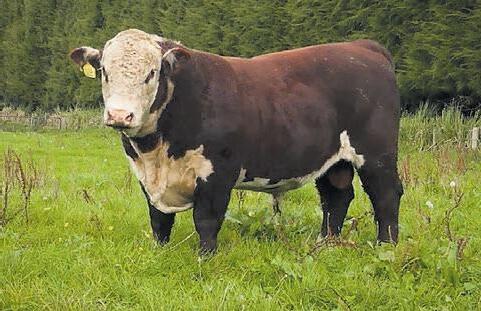
Friday 26 September pm, Friday
Contac t your agent , Farm Manager Henr y James or Dean Hollister ntac for viewings

SUMMIT: At $24,500, Kayjay Mountain Man U758 was right among the top prices paid for yearling bulls during early September auctions in 2024.
Higher buy-in, bigger payoffs for young cattle
Market conditions clearly signal continued value growth despite higher initial costs.

Alex Coddington MARKETS Livestock
CATTLE are expensive, whether you’re in the market for weaners, yearlings, or any odd mob you can find.
Coming to terms with the new values can feel risky, especially if you’ve been burnt by market volatility in the past. Subtle observations in major saleyards over the past two seasons have revealed a recurring trend of farmers arriving keen to get mouths on feed, only to leave empty-handed in disbelief at the steep costs.
With prices at levels never before seen across the supply chain, questions naturally arise about where this leaves margins. However, a look back through saleyard data gives some reassurance that there is money to be made at these levels, as opposed to just paying more for the same result. Particularly for those who took the risk and invested in young cattle.
Looking back over the past 10 years, between 2015 and 2019 the value increase from February/ March weaners to August R1s ranged from $20 to $175 per head, with an average gain of $98. From 2020 to 2024 that spread
widened, ranging from $66 to a record $275 last year, averaging a much stronger $171 per head lift.
In 2024, traditional weaners in major saleyards across the country averaged $930, or $3.99/ kg in March/April. By August, the average R1 traditional steer price had risen to $1206 or $4.64/kg. This led to a record average value increase of $275 or 66c/kg.
This undoubtedly created a lot of buzz, strong demand and a fair amount of early “panic buying” as word spread of the strong returns in cattle trading. Some of the excitement was tempered for buyers when the market for early weaners surged in March this year.
In March-April 2025, weaner prices smashed previous records and averaged $1120 or $4.75/kg across all the major saleyards. Naturally, this raised concerns about how much higher prices could go come August. Surprisingly, current trends suggest that price gains in the R1 market may rival last year. With consideration of higher entry costs, demand at these levels is holding and finishers have been willing to pay the growing premium to secure cattle.
The market is already showing signs of exceeding expectations, driven by shorter supply, stronger demand and lifted schedules. It makes sense for the value increase
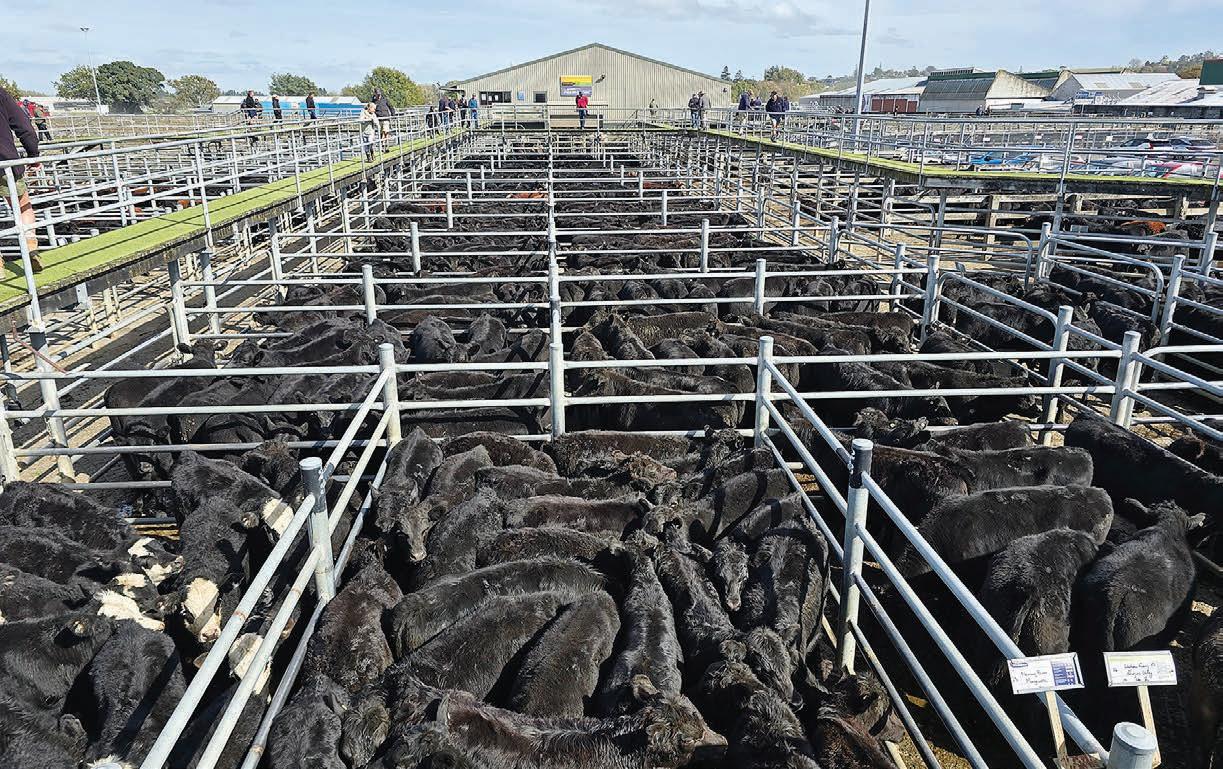
for R1 cattle to be steeper, given they stay in balance with the sharper incline of prime schedules this year.
Historically, R1 prices have reached their peak by the end of August, with the five-year average lift in the North Island sitting around 5%. Last year that jump was closer to 13%. With the expectations of at least a further 13% lift in R1 values from here, buyers could be looking at paying up to $5.96/kg for traditional R1 steers by the end of August.
Last week at Feilding saleyards, R1 traditional steers were already averaging $1420 or $5.87/kg, which would suggest we are well on our way to this level. This represents a far steeper incline from the average weaner price in March.
With limited downside in the outlook of the store market and schedule pricing, current market conditions clearly signal continued value growth for young
cattle, despite higher buy-in costs. Over the coming weeks, it is likely that prices will remain above historical averages with buyers paying a much larger premium for R1 steers in August compared to recent years, in line with the relatively higher increases in schedule pricing Key global supply and demand dynamics in the beef market suggest that international demand will continue to outpace supply.
The imbalance supports that, under these conditions, beef prices should still have some room to move higher next year. As long as young cattle prices remain aligned across the supply chain, the high buy-in cost should be considered alongside the context and broader trend of accelerated value growth that has so far been supportive of confident cattle market trading from the ground up.

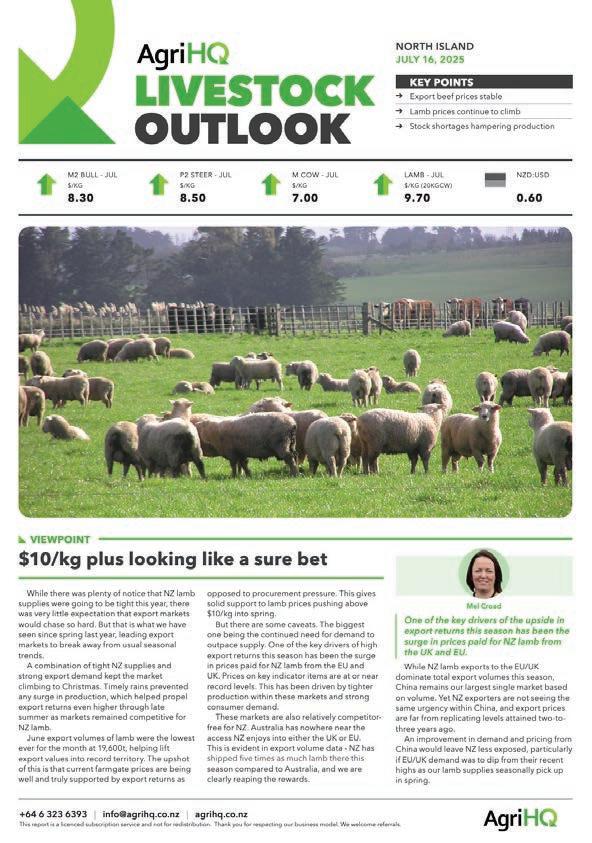
RECORD BREAKERS: In March-April 2025, weaner prices smashed previous records and averaged $1120 or $4.75/kg across all the major saleyards.
Cattle Sheep Deer

Weekly saleyard results
These weekly saleyard results are collated by the AgriHQ LivestockEye team. Cattle weights and prices are averages and sheep prices are ranges. For more detailed results and analysis subscribe to your selection of LivestockEye reports. Scan the QR code or visit www.agrihq.co.nz/livestock-reports


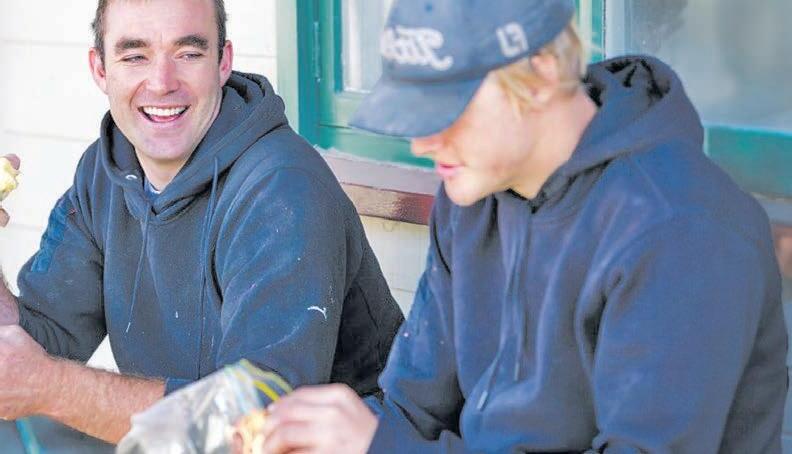
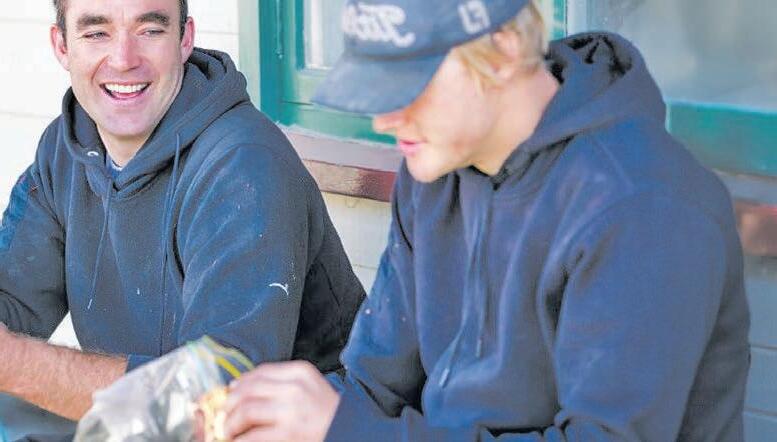

A TIDY TASTE: These R1 Angus steers from Rangiwahia tested the waters at Feilding
Rongotea | August 5 | 79 cattle, 27 sheep
Coalgate | July 31 | 193 cattle, 3224 sheep
Balclutha | August 6 | 434 cattle
Mixed-age ewes, all
Store lambs, all
Prime lambs, all
Charlton | July 31 | 200 sheep
ewes, most
lambs, most
Lorneville
High-de-high campers, it’s cold out there

THE weather pattern going into this week is so similar to last week’s I was almost going to copy and paste last week’s column and see if anyone noticed.
This week another powerful high pressure zone crosses the country, adding to an already drier and colder than average start to the month. The placement of last week’s powerful high, and now this week’s one too, means we’ve had a lot of southerlies and polar air over New Zealand lately.
Had the high pressure zone been east of NZ and not west of us, we’d have had two weeks of sub-tropical winds instead – so the precise placement of high pressure (anticyclones) really matters a lot, especially in winter when they often get to their most powerful (late winter/early spring).
What makes this week so similar to last week is that we have a powerful high that is more southern focused (centred near Stewart Island on Monday August 12) but at the same time we once
again have a large (but fairly weak) sub-tropical low to our north. So, again, that means more easterlies at the top of NZ with cloud and more southerlies with frosts over the South Island.
But unlike last week, this next anticyclone looks to hold on through the entire week and going into the weekend – ensuring that August’s rainfall numbers, so far, continue to drag below normal.
Fast-forward one week from now, as we pass the halfway mark of August the placement of the next anticyclone shifts from being south of NZ to lying over Australia – which means next week in New Zealand brings in low pressure then a wintry southerly, and a chance of snow in NZ about one week from now.
The next anticyclone looks to be centred over New Zealand again by the end of next week – but at the time of writing this yet another sub-tropical low was in the mix.
Despite the anticyclones being powerful at the moment, they are zipping through. In summer, highs can drag their heels but in winter they can be more powerful but slide on through our skies like a knife through butter.

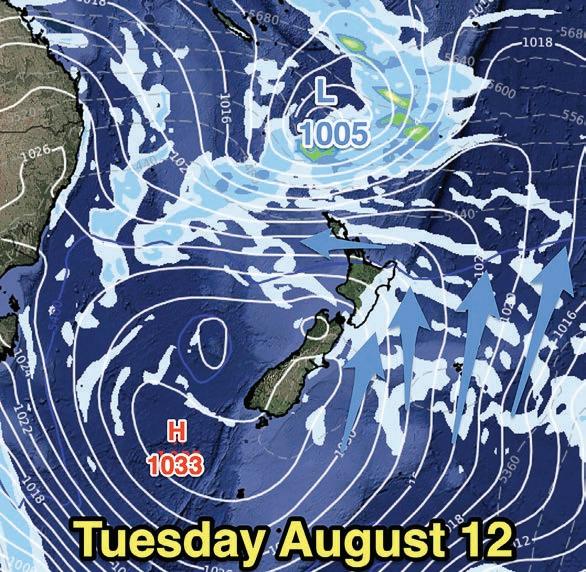
COMPARE: This Tuesday, August 12, vs next Tuesday. The anticyclone looks to hold on through the
and going into the weekend, says Philip Duncan.
Next week brings in low pressure then a wintry southerly, and a chance of snow in NZ about one week from now.
This brings us more variety in temperature swings, rainfall and sunshine. We’ll have to wait to see
how the wet weather and polar southerly next week shapes up – but we’re seeing very powerful storms over the Southern Ocean, big bubbles of high pressure out of Australia which don’t connect to each other (so it’s not one big wall of high pressure, but instead bubbles of high pressure with bubbles of low pressure/rain in between) and we’re also seeing plenty of weekly sub-tropical
activity, which usually isn’t so active in winter.
There has been some chatter about La Niña potentially forming this summer – and subtropical lows like the ones we are seeing at the moment may be part of that calculation. But, for now, our weather remains neutral and in a pattern of highs coming from the west and lows from the west and north.
From tractors to chainsaws and everything in between. Get yourself or your team trained with Primary ITO’s hugely popular vehicle and machinery courses!
From tractors to chainsaws and ever Get yourself or your hugely popular vehicle and machiner
Bite-sized training options include:
Bite-sized training op
• Tractors
• Tractors
• 4WD on and off-road
• • Motorbikes
• Motorbikes
• LUV’s
• LUV’s
• Quad bike
• Quad bikes
• Chainsaws
• Chainsaws Rev
Register your interest by scanning the QR code above
Register your interest by scanning the QR c
Learn more at primaryito.ac.nz/vehicles, call us on 0800 20 80 20 or email info@primaryito.ac.nz
Learn more a on 0800 20 80 20 or email info@primaryit
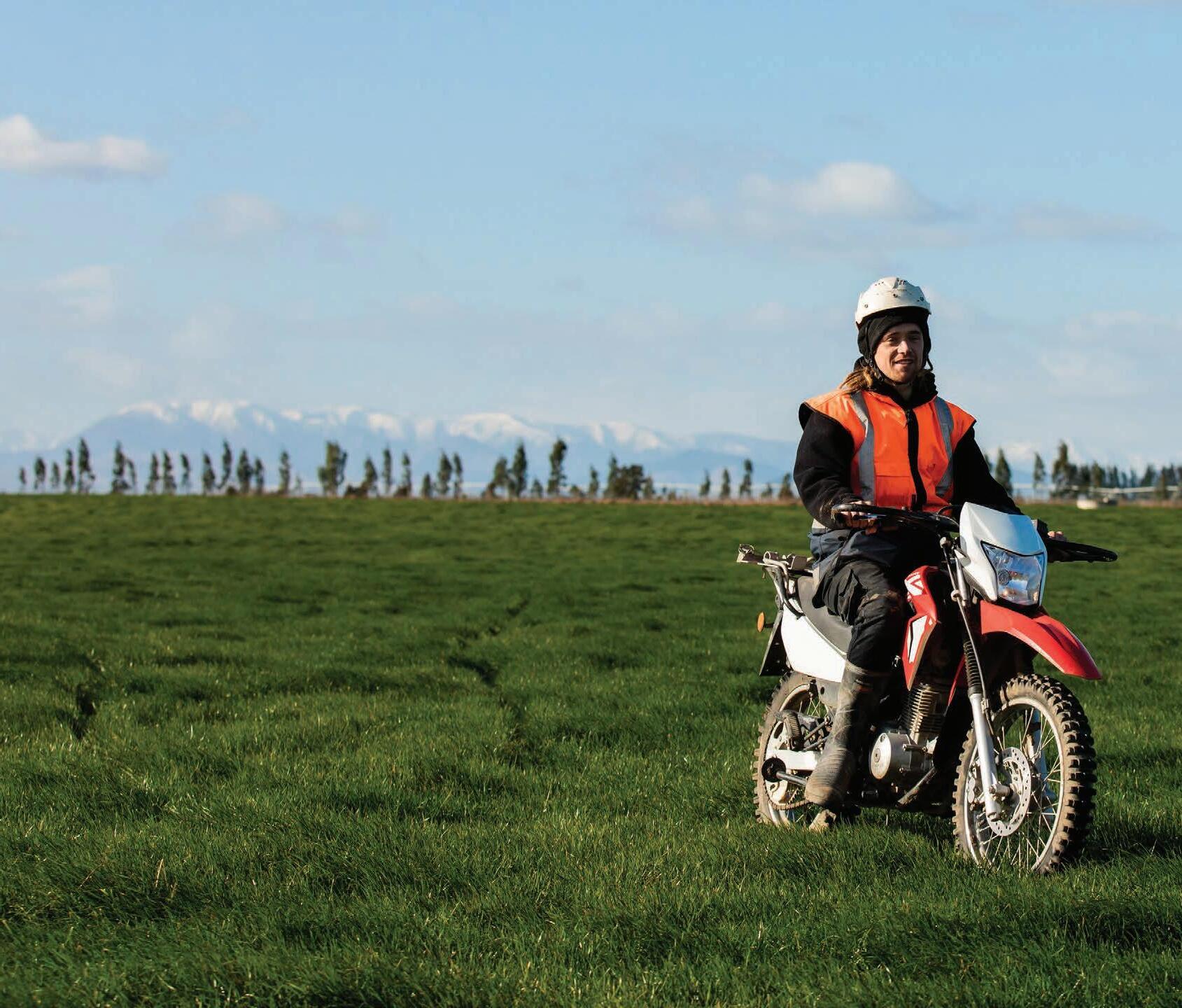

Philip Duncan NEWS Weather








